peer-to-peer
description: type of decentralized and distributed network architecture
161 results
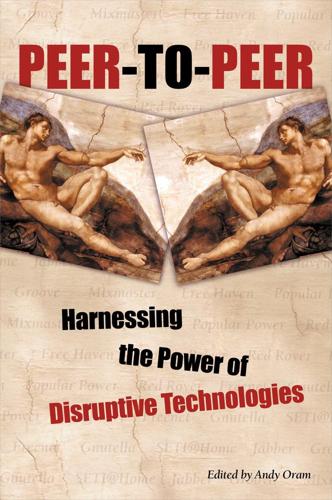
Peer-to-Peer
by
Andy Oram
Published 26 Feb 2001
This hybrid approach seems to scale well: the directory can be made efficient and uses low bandwidth, and the file sharing can happen on the edges of the network. In practice, some applications might work better with a fully centralized design, not using any peer-to-peer technology at all. One example is a search on a large, relatively static database. Current web search engines are able to serve up to one billion pages all from a single place. Search algorithms have been highly optimized for centralized operation; there appears to be little benefit to spreading the search operation out on a peer-to-peer network (database generation, however, is another matter). Also, applications that require centralized information sharing for accountability or correctness are hard to spread out on a decentralized network.
…
Many systems will partake of both models. In fact, I have avoided using the phrase “peer-to-peer model” in this book because such a variety of systems exist and so few can be considered pure peer-to-peer. The ones that are completely decentralized—Gnutella, Freenet, and Free Haven—are extremely valuable for research purposes in addition to the direct goals they were designed to meet. Whether or not other systems move in their direction, the viability of the most decentralized systems will help us judge the viability of peer-to-peer technology as a whole. Appendix A. Directory of Peer-to-Peer Projects This is a partial list of interesting projects, companies, and standards that could reasonably be considered examples of peer-to-peer technology.
…
–Social solutions: Engineer polite behavior, Strategic positioning and core competencies–Strategic positioning and core competencies, Gnutella’s effects governmental threats to privacy, Red Rover–Red Rover instant messaging and, Immediate information sharing: The new instant messaging services managing congestion to prevent bandwidth attacks, Moderating security levels: An accountability slider managing metadata and, Strategic positioning and core competencies meme map current, The current peer-to-peer meme map–The current peer-to-peer meme map new, The new peer-to-peer meme map–Peer-to-peer and devices micropayments economic impact of, General considerations in an economic analysis of micropayment design–General considerations in an economic analysis of micropayment design exchanging, The difficulty of distributed systems: How to exchange micropayments among peers–The difficulty of distributed systems: How to exchange micropayments among peers identity-based, Identity-based payment policies risks involved, Moderating security levels: An accountability slider usefulness of, The use and effectiveness of micropayments in peer-to-peer systems–Moderating security levels: An accountability slider models, A Network of Peers: Peer-to-Peer Models Through the History of the Internet–Conclusions, Peer-to-peer models and their impacts on accountability next-generation file sharing technologies, Next-generation peer-to-peer file-sharing technologies open source and, File sharing: Napster and successors problems with, A Network of Peers: Peer-to-Peer Models Through the History of the Internet, Decentralization is a tool, not a goal, Special problems posed by peer-to-peer systems protocol-centric addressing, Nothing succeeds like address, or, DNS isn’t the only game in town–An explosion of protocols remailer difficulties, General discussion reputation system, Central Reputation Server versus distributed Reputation Servers revisionist history of, A revisionist history of peer-to-peer (1969-1995)–DNS scalability and, Performance security provided by Groove, Security–Taxonomy of Groove keys SETI@home and, The peer-to-peer paradigm social and technical solutions to problems, Technical solutions: Return to the old Internet social impact of, Some context and a definition summit, Remaking the Peer-to-Peer Meme–A success story: From free software to open source meme map developed at, Remaking the Peer-to-Peer Meme, The new peer-to-peer meme map–Peer-to-peer and devices trust issues, Trust–Conclusions users donating resources, Freeloading using accountability to expand, Accountability using port 80, Abusing port 80 using RDF for applications, Foundations of resource description: Unique identifiers vs. client/server model, A Network of Peers: Peer-to-Peer Models Through the History of the Internet, Peer-to-peer is a horseless carriage, Peer-to-peer architecture and second-class status, The peer-to-peer paradigm, A clean sweep?
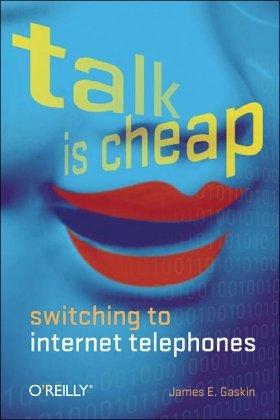
Talk Is Cheap: Switching to Internet Telephones
by
James E. Gaskin
Published 15 Mar 2005
Many cooperative groups have collaborated to shuttle Internet calls to a public telephone network central office serving the telephone number you dial. And when you do have to pay, it's pennies per minute, and only when you use it. 2.2.4. Virtual Numbers Calling out from a peer-to-peer network to the public telephone network is one thing. But if your peer-to-peer service lists you as JamesGaskin inside the Skype user directory (well, yours doesn't, but mine does), how do outsiders dial that? How can they call you? Enter virtual numbers and the inbound side of the public phone to peer-to-peer network gateway. Virtual numbers are traditional telephone numbers that link the public telephone network into the broadband phone world. Vonage and their competitors with analog telephone adapters that plug into your broadband modem are providing virtual numbers as well, but they don't really say that.
…
Many cooperative groups have collaborated to shuttle Internet calls to a public telephone network central office serving the telephone number you dial. And when you do have to pay, it's pennies per minute, and only when you use it. 2.2.4. Virtual Numbers Calling out from a peer-to-peer network to the public telephone network is one thing. But if your peer-to-peer service lists you as JamesGaskin inside the Skype user directory (well, yours doesn't, but mine does), how do outsiders dial that? How can they call you? Enter virtual numbers and the inbound side of the public phone to peer-to-peer network gateway. Virtual numbers are traditional telephone numbers that link the public telephone network into the broadband phone world. Vonage and their competitors with analog telephone adapters that plug into your broadband modem are providing virtual numbers as well, but they don't really say that.
…
Just remember that in marketing, brand awareness wins, and having every user of your product (or free Skype software in this case) demand that all their friends get the product is a wonderful thing and much desired by marketing people. * * * Note: Name from Air"Skype" is a made-up word picked because it had an available web address, the ability to act as a noun and a verb, and no meaning in any language. * * * Peer-to-peer technologies that were developed for KaZaA and improved for Skype allow the two founders to claim that Skype is the third generation of peer-to-peer technology. That makes sense, and explains why Skype has an advantage over many of their competitors: they've been doing it longer and learning as they go. Starting August 29, 2003, Skype software rolled quickly across the Internet.

Smart Mobs: The Next Social Revolution
by
Howard Rheingold
Published 24 Dec 2011
My journey into the universe of peer-to-peer ad-hocracies that combine the powers of computation with the growth capabilities of online social networks started innocently enough, when I stumbled onto a plot to find life in outer space. 3 Computation Nations and Swarm Supercomputers Peer-to-peer networks are composed of personal computers tied together with consumer Internet connections, each node a quantum zone of uncertainty, prone to going offline whenever its owner closes his laptop and chucks it into a shoulder-bag. . . . Peer-to-peer networks aren’t owned by any central authority, nor can they be controlled, killed, or broken by a central authority. Companies and concerns may program and release software for peer-to-peer networking, but the networks that emerge are owned by everyone and no one. They’re faery infrastructure, networks whose maps form weird n-dimensional topologies of surpassing beauty and chaos; mad technological hairballs run by ad-hocracies whose members each act in their own best interests.
…
The power of peer-to-peer methodology is a human social power, not a mechanical one, rooted in the kind of passion that enthusiasts like Cory Doctorow demonstrate when he says: “In a nutshell, peer-to-peer technology is goddamn wicked. It’s esoteric. It’s unstoppable. It’s way, way cool.” Although Doctorow hadn’t been born when system administrators started receiving tapes in the mail, labeled “Love, Ken,” he was expressing the same spirit that drove Unix and the creation of the Internet and the Web. People don’t just participate in p2p—they believe in it. Hardware and software make it possible, but peer-to-peer technology is potent because it grows from the collective actions of large numbers of people.
…
Encryption is used to cover the tracks of people making requests and to make it impossible for participants to know exactly what content they are storing on their PCs as part of their contribution to the system. Mojo Nation ceased operations as a commercial enterprise in February 2002, replaced by the noncommercial Mnet project.32 The first peer-to-peer networks linked social networks into cooperative ventures that shared computing cycles, files, and bandwidth. The next generations of p2p sociotechnology include p2p systems that share decisions and judgments. Sheep That Shit Grass Cory Doctorow, thirty-year-old online auction addict, Internet jack-of-all-symbol-manipulating trades, and award-winning science fiction writer, is also the most enthusiastic p2p proponent I’ve met.
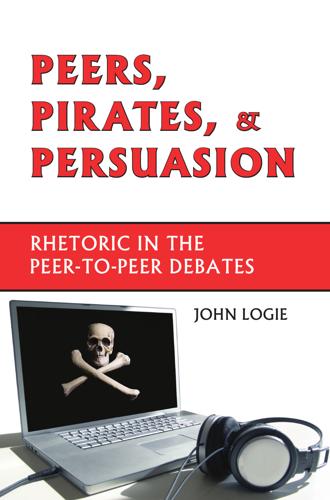
Peers, Pirates, and Persuasion: Rhetoric in the Peer-To-Peer Debates
by
John Logie
Published 29 Dec 2006
For this reason, the core conclusion of Eytan Adar and Bernardo Huberman’s 2000 study of the usage patterns of Gnutella users—that roughly 70 percent of Gnutella users distribute no files— is perhaps not surprising. Thus, while peer-to-peer technologies are rooted in the establishment of level relationships among networked computers (the “peers” in peer-to-peer) the people using peer-to-peer technologies typically pursue imbalanced relationships. As a result, a small subset of peer-to-peer users account for the bulk of the distribution of authorized and unauthorized files to peer-to-peer networks, thereby assuming the bulk of the risks associated with the transmission of these files. It is these users who have earned the right to frame arguments that their activities constitute “sharing.”
…
The content industries’ arguments to date threaten to disrupt growth and innovation in peer-to-peer technologies, which already offer computer users far more than free, easy access to the latest Top-40 hit. Peer-to-peer networks’ true potential will only be realized once U.S. culture settles on a means of expediting the movement of cultural artifacts into the public domain. The content industries’ continuing positioning of peer-to-peer as an assault on the producers of intellectual property will, inevitably, delay this realization. Too often, those who seek a more principled discussion of the power and potential of peer-to-peer technologies accept and perpetuate the framing of the peer-to-peer debates as war.
…
The American public has since demonstrated a voracious appetite for MP3 and MP3-type music files and has persisted in using peerto-peer networks to download music despite the implicit threats to privacy posed by Kazaa and the possible illegality of their actions (as implied by the injunction that closed Napster as a “free” peer-to-peer network). This book addresses the questions raised by the American public’s continuing and expanding use of peer-to-peer technologies in spite of ongoing campaigns to characterize peer-to-peer downloads as criminal behavior. While the majority of the public now seems to have been persuaded that their actions might well be illegal, they aren’t buying the larger argument—that they must cease and desist downloading.
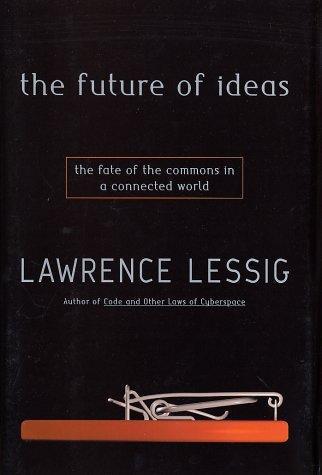
The Future of Ideas: The Fate of the Commons in a Connected World
by
Lawrence Lessig
Published 14 Jul 2001
Even if you type two characters per second on your keyboard, you're using only a fraction of your machine's power. [Distributed computing bands together millions of computers] on the Net to create, with their downtime, ad hoc supercomputers.31 The potential of peer-to-peer technologies reaches far beyond simple file transfer or the sharing of processing cycles. Indeed, as researchers are coming to understand, the most important peer-to-peer technologies could be more efficient caching technologies. A “cache” is simply a copy of content kept close to the user, so that less time is needed to get access to that content. P2P caching solutions imagine using computers at the edge to more efficiently store data.
…
By increasing the demand for a diverse selection of content, and by enabling the cheaper identification of that demand, the Net widens the range of potential contributors. NEW PARTICIPATION: P2P FINALLY, CONSIDER an innovation that enables a new kind of participation that many have called the next great revolution for the Internet, and that in light of our discussion of e2e will be quite familiar: the emergence of peer-to-peer (P2P) networks.25 A peer-to-peer network is one where the content is being served not by a single central server, but by equal, or “peer,” machines linked across the network. Formally, “p2p is a class of applications that take advantage of resources—storage, cycles, content, human presence—available at the edges of the Internet.”26 In the sense I've described, this was the architecture of the original computers on the Internet—there wasn't a set of central servers that the machines connected to; instead, there was a set of e2e protocols that enabled data to be shared among the machines.
…
As machines have become more powerful, and as they have become more reliably and permanently connected to the Net, the possibility of using peers to process and forward data on the Net has increased. Peer-to-peer services are returning to the Internet as machines mature and are persistently on the Net. The character of what can happen is changing, and the potential—if left free to develop—is extraordinary. Napster is the most famous peer-to-peer technology, even though it is not exactly peer-to-peer. (There is a central server that keeps a database of who has what; the music itself is kept on other people's machines.) But Napster is the horse and buggy in this transportation system. It is only the beginning. Consider the SETI project. SETI—the Search for Extraterrestrial Intelligence—scans the radio waves for evidence of intelligent life somewhere else in the universe.

How Music Got Free: The End of an Industry, the Turn of the Century, and the Patient Zero of Piracy
by
Stephen Witt
Published 15 Jun 2015
See also chat rooms Interpol, 147–48, 213, 217 Interscope Records, 45–50, 73, 77–80, 112–13, 153, 189 Iovine, Jimmy, 45–48, 76–80, 92, 112, 191 IP addresses limits on for Scene members, 160–61, 180 traceability of, 70–71, 160–61, 250–52 iPod device, 155–57, 192–93, 202 iTunes Store, 132–33, 155–58, 189, 192, 205–6, 209, 235–36 Jackson, Michael, 84, 234 Japanese electronics industry, 93, 97, 127, 144 Jay-Z (artist), 103, 112–13, 125, 140, 177, 179, 201, 237–38, 260 Jobs, Steve, 132–33, 155–57, 189, 192–93, 227–28, 235–37 Johnston, James, 16–17, 20–21, 60, 96, 274n Juvenile (artist), 80–81, 200 “Kali” (RNS ringleader) as“Blazini,” “Death, ” 181 Glover’s association with, 108–9, 139–42, 145–46, 148–51, 215–22 law enforcement investigation of, 195–203, 248–52 leadership of RNS by, 106–8, 180–88, 217–20 paranoia of, 147, 217 post-RNS activities of, 251, 262 Saunders’ association with, 179 shutdown of RNS by, 218–22, 249–52 Tai’s association with, 143–45 Kaminska, Izabella, 244–45 Kazaa peer-to-peer network, 160, 165, 209, 225, 252 Knight, Suge, 46–50, 78, 81 KOSDK (RNS participant), 181–88, 220 Laurie Records, 38, 43–44, 199 Led Zeppelin (band), 39–41, 124, 199, 261 Level 3 encoder (L3Enc), 55–56, 62–63, 72–73, 88–89, 91 Lévy, Jean-Bernard, 155, 190 licensing agreements mp3 technology and, 56–58, 90–91, 94, 128–29 music publishing business and, 234 for streaming media, 261 Lil Wayne, 81, 140, 154, 179, 200–202, 226 LimeWire peer-to-peer network, 160, 165, 171, 184, 252 Limp Bizkit, 79, 112, 123 Linde, Henri, 57–63, 93–94, 96, 127–29, 133 “Little Bit O’ Soul” (song), 43–44 Ludacris (artist), 140, 143–44, 148–49, 153, 177 Macintosh systems, mp3 and, 62, 132–33 Mannie Fresh (artist), 81, 154 Marilyn Manson (artist), 77, 79 market research, Morris’s reliance on, 42–50, 156–57, 190, 198–99 Marshall Mathers LP (album), The, 124–25 Messier, Jean-Marie, 122, 155 Metallica (band), 73, 202 Microsoft, 87, 128–30, 133 Middelhoff, Thomas, 116–17, 119 mixtapes, Internet distribution of, 201–2 Mnookin, Seth, 227–29 Mohan, Edward, 248, 251 MojoNation peer-to-peer network, 166–67 Montejano, Richard (RickOne) (OSC leader), 221–22, 248–49 Morris, Doug advertising streaming revenue, 231–38 artists’ relationships with, 112–13, 120–21, 158–59, 191, 229–32 at Atlantic Records, 39–42 bootlegged music and, 84–85 Cash Money records and, 80, 113. 200, 202 earnings of, 189–90, 227, 260 Ertegun and, 39–42, 46, 48, 191, 199, 278n Iovine and, 45–47 Jay-Z and, 103, 237 Jobs and, 155–57, 192–93, 227–28, 235–37 market research skills of, 42–50, 156–57, 190, 198–99, 228–29 MCA Music Entertainment Group and, 75–79 Napster, reaction to, 117–20 payola scandal and, 196–98 PolyGram merger and, 102–3 Project Hubcap lawsuits and, 158–61, 193 rap music expansion and, 148–51, 154–55, 221 as Sony Music CEO, 260 Universal Music Group and, 79–85, 111–12, 153, 155 Vevo and, 232–38, 261 Vivendi merger and, 122–25, 158–59, 189–92, 225–38 as Warner Music Group CEO, 37–38, 42–46, 50–51 Wired magazine interview and, 227–30 Moving Picture Experts Group (MPEG) DVD technology and, 165 mp3 development and, 17–20, 61–62, 94, 97–98, 127, 134 organizational structure of, 274n Philips lobbying of, 20–21 psychoacoustic compression competition held by, 17–19, 53 support of mp2, 5–6, 20–25, 58 mp2 technology MPEG endorsement of, 20–25 popularity of, 5, 53, 192 mp3 technology bootlegged music using, 85, 88–89 Brandenburg’s development of, 2–6, 16, 18–21, 53–58, 128 commercial success of, 87 copy-protectable version of, 90 encoding process, 282n Morris’ reaction to, 117–18, 120–21, 193 MPEG endorsement of, 20 music piracy and, 72–73, 193 patents on, 56–58, 90–91, 93–96, 128–29 player development for, 58–60, 125–26 psychoacoustic research and, 7–16, 128 recording industry resistance to, 5–6, 56–57, 90–92 MPMan player, 97, 259 MTV, 40, 179, 192–93 Murphy, George, 255–58 MUSICAM, 18–21, 24–25, 55, 60–61, 94, 97, 128, 134 Music Explosion (band), 43–44, 123 music festivals, growth of, 233–38, 260–61 music retailers as prerelease source, 144–45, 176–77 price collusion and, 114 sales figures for, 43, 154 music videos, syndication of, 232–38, 260–61 Napster, 244 emergence of, 114–21 impact on recording industry of, 156–57, 244 mp3 technology and, 128, 130–31 peer-to-peer file-sharing and, 160, 165 portable player development and, 125–26 National Hockey League, 54–55 NEET demographic, 209–14 NetFraCk (piracy leader), 72–73 NFO files, Scene’s use of, 140–41, 182, 216, 219 Nicks, Stevie, 41, 45 Nine Inch Nails (band), 77, 208 No Doubt (band), 77, 79 Nominet domain name, 212–14 Ogg Vorbis, 132, 259 Oink’s Pink Palace, 170–74, 205–14, 239–43, 252, 263 Old Skool Classics (OSC) piracy group, 179, 220–22, 248–49 open-source software, 132, 168, 170–71, 259 Operation Buccaneer, 147–48, 162, 194 Operation Fastlink, 162–63, 182, 195, 203, 239, 257–58 organized crime, bootlegged music and, 67–68, 71–74, 83–85 Outkast, 108, 143–44, 148, 179 Pandora, 253, 261 Parker, Sean, 116–17 patent law, mp3 protections and, 95–96 PC systems, mp3 player development and, 55–56, 59, 62, 85 peer-to-peer file-sharing, 114–18, 121–22 lawsuits against, 158–61, 165, 225–26 Napster and, 160, 167 prerelease leaks and, 157–58 quality and distribution problems with, 165–67, 171–72 torrent technology and, 166–70, 226–27 Philips corporation format wars and, 19–20, 59, 67, 94, 97, 134 mp2 promotion by, 20–25, 53 PolyGram division of, 32–33, 78, 82 Seagram purchase of PolyGram from, 82–85, 101 Physical Graffiti (album), 48, 199 Pink Moon (album), 205–6, 240 piracy, origin of term, 278n Pirate Bay torrent site, 168–71, 173, 184, 207, 209, 240, 242–43, 252 Pirate Party, formation of, 242–45 PlayStation piracy, 108, 186 PolyGram division of Philips corporation, 32–33, 78, 82–85, 101, 111–12 EDC takeover of, 191–92, 215 marquee releases at, 136 PolyGram Kings Mountain manufacturing plant closing of, 253 compact disc production at, 27–29 Glover’s employment at, 32–33, 175–76 Interscope distribution deal with, 73, 78 “No Theft Tolerated” standard at, 32 security system at, 67–68, 103–5, 135–39 smuggling activity at, 35, 67, 103–8, 135, 149–51, 176–88 Universal’s acquisition of, 84–85, 101–3 polyphase quadrature filter bank, 19–21 Popp, Harald, 13, 53, 56–59, 88, 93–95, 97–98, 130–31, 134 portable music players, 125–27 Prabhu, Jay, 194–96, 203, 252, 257 prerelease leaks Oink’s Pink Palace and, 209–14 Scene involvement with, 72–73, 139–41, 144–45, 184–88 sources for, 144–45, 157–58, 176–77, 185–88 streaming technology and, 261–62 Pressplay online music store, 119, 157, 228 Project Hubcap lawsuits, 159–60, 166, 193, 225–26 psychoacoustic compression technology AAC applications, 60, 88, 96–98 Brandenburg’s development of, 60, 88 competing research in, 7–17, 128 human speech and, 16 mp2 use of, 5, 20–25 mp3 use of, 7–16, 53–58 MPEG evaluation of, 17–19, 53 studio engineers’ reaction to, 91–92 Zwicker’s contributions to, 7–16, 18–19 publishing rights as revenue stream, 234–38, 260–61 Rabid Neurosis.
…
The lawsuit sought to obtain an injunction prohibiting the sale of Diamond’s Rio portable digital audio device, and any others like it, suffocating the nascent mp3 player market in the cradle. The second lawsuit, A&M Records vs. Napster, was filed by 18 record companies, including Universal. The suit alleged that Napster was legally responsible for the copyright infringement occurring over its peer-to-peer network, and that the company was liable for damages. The two lawsuits wound through various civil courts and various stages of appeal. Napster peaked at sixty million users, while Diamond’s Rio player was plagued by various design flaws and sold poorly. The lawsuits had a chilling effect on industry R&D.
…
You could throw your CDs in the garbage and port everything to a pocket-sized hard drive. You’d never have to buy a compact disc again. It all depended on how RIAA vs. Diamond played out. After successive rounds of appeals and counterappeals, the lawsuits came to an end. It was a split decision, with a victory against Napster but a loss against Diamond. Peer-to-peer networks were driven underground, but the mp3 players remained on store shelves. Napster’s servers went offline in July 2001, and, following a mad rush of eleventh-hour downloading, the public had hundreds of millions of mp3 files stranded on their home computers, and no easy way to get them off. The stage was set for a remarkable upheaval, one that would permanently obsolesce the compact disc and catalyze the transformation of a niche technology player into the largest company on earth.

The Wealth of Networks: How Social Production Transforms Markets and Freedom
by
Yochai Benkler
Published 14 May 2006
See blocked access financial reward, as demotivator, 187-190 Fine-grained goods, 221 First-best preferences, 355 large-audience programming, 355 power of mass media owners, 355 First-best preferences, mass media and, 297, 359, 366, 397, 423, 429, 463 concentration of mass-media power, 297, 397-402, 423, 429-436 large-audience programming, 366-375, 463-464 of mass media owners, 359-365 power of mass media owners, 397-402 Fisher, William (Terry), 40, 245, 498, 526, 720 Fiske, John, 262, 497, 526 Fixed costs, 216 Folding@home project, 168-170 Folk culture, 585 see culture food, commons-research based on, 585 Food security, commons-based research on, 586-608 Formal autonomy theory, 269-272 Formal instruction, 562 Fragmentation of communication, 41, 421, 459-460, 818-819 Franklin, Benjamin, 342 Franks, Charles, 165, 264 Free High School Science Texts (FHSST), 201, 582 Free software, 19-20, 37, 96, 125-132, 202, 247, 573, 762, 803 as competition to market-based business, 247 commons-based welfare development, 573-576 human development and justice, 37 policy on, 762-763 project modularity and granularity, 202 security considerations, 803-807 Freedom, 50, 122, 253, 273, 286, 316, 505, 532 behavioral options, 286-288, 316 cultural, 505-514, 532-533 of commons, 122 property and commons, 273-278 Freenet, 479 Frey, Bruno, 187-188 Friedman, Milton, 82 Friendships, virtual, 637-639 Friendster, 653 Froomkin, Michael, 727, 755 Future, 481, 531 participatory culture, 531-536 public sphere, 481-484 G GCP (Generation Challenge Program), 605 GE (General Electric), 346, 350-351 GM (genetically modified) foods, 590-597 GNU/Linux operating system, 128-131 GPL (General Public License), 126-130, 205 See Also free software, 205 GTLD-MoU document, 754 Games, immersive, 149-150, 263 General Public License (GPL), 126-130, 205 See also fre software, 205 Generation Challenge Program (GCP), 605 Genetically modified (GM) foods, 590-597 Genome@home project, 169 Ghosh, Rishab, 207 Gifts, 226-227 Gilmore, Dan, 393, 470 Glance, Natalie, 447, 461 Global development, 550-554, 584, 609, 627-628, 796 food and agricultural innovation, 584-608 international harmonization, 796-801 medical and pharmaceutical innovation, 609-623 Gnutella, 740 Godelier, Maurice, 215, 226 Golden rice, 599 Goods, information-embedded, 556-558 Google, 153 Gould, Stephen Jay, 64 Government, 52, 339, 356, 426, 473 authoritarian control, 426, 473-480 independence from control of, 339, 356 role of, 52-56 working around authorities, 473-480 Gramsci, Antonio, 506-507 Granovetter, Mark, 189, 638, 641 Granularity, 200-203, 221 of lumpy goods, 221-222 Granularity of participation and, 200-203 Green Revolution, 589-594 Grokster, 742 Growth rates of Web sites, 443, 446 H HDI (Human Development Index), 552-554 HHI (Herfindahl-Hirschman Index), 363 HIV/AIDS, 570-571, 585, 610 Habermas, Jurgen, 333, 338, 367, 508-509, 727 Hampton, Keith, 644 HapMap Project, 621 Hardware, 206, 220, 294, 718 as shareable, lumpy goods, 220-222 infrastructure ownership, 294-295 policy on physical devices, 718-725 Hardware regulations, 718-725 Harmonization, international, 796-801 Harris, Bev, 405, 408-409, 412 Hart, Michael, 164-165, 264 Hayek, Friedrich, 51, 274 Health effects of GM foods, 593-594 Hearst, William Randolph, 365 Heller, Michael, 558 High-production value content, 313, 528-530 Hollings, Fritz, 721-724 Home project, 168-170 Hoover, Herbert, 348 Hopkins Report, 408 Horner, Mark, 201 Huberman, Bernardo, 443, 446 Human Development Index (HDI), 552-554 Human Development Report, 552 Human affairs, technology and, 43-48 Human communicative capacity, 108-112, 194, 217 feasibility conditions for social production, 194-207 pricing, 217 Human community, coexisting with Internet, 664-666 Human contact, online vs. physical, 638-639 Human development and justice, 35-38, 537-628, 542, 550-554, 568, 820-821 commons-based research, 568-583 liberal theories of, 542-549 Human motivation, 21, 183-194, 189, 200, 221, 223 crowding out theory, 223 cultural context of, 189-191 granularity of participation and, 200-203, 221-222 Human welfare, 255, 297, 427, 542, 550, 555, 568 commons-based research, 568-583 commons-based strategies, 550-554 digital divide, 427 freedom from constraint, 297-299 information-based advantages, 555-562 liberal theories of justice, 542-549 Hundt, Reed, 398 Hyperlinking on the Web, 392, 437, 791 as trespass, 791-795 power law distribution of site connections, 437-466 I IAHC (International Ad Hock Committee), 754 IANA (Internet Assigned Numbers Authority), 754 IBM's business strategy, 96, 247-248 ICANN (Internet Corporation for Assigned Names and Numbers), 755 Iconic representations of opinion, 367, 373 Ideal market, 123 Immersive entertainment, 149-150, 263 Implicit knowledge, transfer of, 562 Incentives to produce, 21, 183-194, 189, 200, 221, 223 crowding out theory, 223 cultural context, 189-191 granularity of participation and, 200-203, 221-222 Independence from government control, 339, 356 Independence of Web sites, 203 Individual autonomy, 26-28, 51, 203, 258-322, 269, 278, 279, 309, 506, 815-819 culture and, 506-508 formal conception of, 269-272 independence of Web sites, 203 individual capabilities in, 51-56 information environment, structure of, 278, 279-303 mass media and, 309-310 Individual capabilities and action, 16, 43, 51-56, 108, 195, 238, 513, 545 as modality of production, 238-243 as physical capital, 195-196 coordinated effects of individual actions, 16-18 cultural shift, 513 economic condition and, 545 human capacity as resource, 108 technology and human affairs, 43-48 Individualist methodologies, 47-48 Industrial age, 73, 265 destabilization of, 73 reduction of individual autonomy, 265-266 Industrial ecology of digital environment, 356 emerging role of mass media, 356-358 Industrial model of communication, 16-17, 29, 31, 57-66, 120, 146, 208, 244, 309, 327, 340, 356, 539, 563, 611, 671, 674-807, 679, 685, 695, 803, 808, 825-826 autonomy and, 309-310 barriers to justice, 539-540 emerging role of mass media, 327-330, 340-341, 356-358 enclosure movement, 671-672 information industries, 563-565 mapping, framework for, 685-698 medical innovation and, 611 path dependency, 679-684 relationship with social producers, 244-250 security-related policy, 146-148, 695, 803-807 shift away from, 31-34 stakes of information policy, 808-829 structure of mass media, 327-330 transaction costs, 120, 208-224 Inefficiency of information regulation, 79-87, 100-104, 208-224, 221, 291, 571, 810-813 capacity reallocation, 221-224 property protections, 571 wireless communications policy, 291 Inertness, political, 355, 366-375 Influence exaction, 295-296, 298-300 Information appropriation strategies, 101-103 Information as nonrival, 79-83 Information economy, 11-66, 14, 24, 42, 57, 394, 542 democracy and liberalism, 24-39 effects on public sphere, 394-415 emergence of, 14-23 institutional ecology, 57-66 justice, liberal theories of, 542-549 methodological choices, 42-56 Information flow, 34, 281, 296, 355, 366, 463, 702 controlling with policy routers, 281-284, 296, 355-358, 702 large-audience programming, 355, 366-375, 463-464 limited by mass media, 355-358 Information industries, 563-565 Information overload and Babel objection, 31, 34, 314-323, 419, 424, 429-436, 818-819 Information production, 16, 79, 88, 174, 194, 403, 815 feasibility conditions for social production, 194-207 networked public sphere capacity for, 403-415 nonrivalry, 79-83, 174 physical constraints on, 16-17 strategies of, 88 Information production capital, 21-22, 73, 89, 120, 195, 216, 309 control of, 195-196 cost minimization and benefit maximization, 89 fixed and initial costs, 216 production costs as limiting, 309 transaction costs, 120 Information production economics, 77-117, 88, 100, 105, 114 current production strategies, 88-99 exclusive rights, 100-104, 114-117 production over computer networks, 105-112 Information production inputs, 81, 108, 135-148, 137, 140, 149, 214, 238, 281, 285, 296, 335, 355, 366, 397, 463, 531, 702 NASA Clickworkers project, 137-139 Wikipedia project, 140-148 existing information, 81-83, 108 immersive entertainment, 149-150 individual action as modality, 238-243 large-audience programming, 355, 366-375, 463-464 limited by mass media, 355-358 pricing, 214-219 propaganda, 285, 397-402, 531-536 systematically blocked by policy routers, 281-284, 296, 355-358, 702 universal intake, 335-336, 355-358 Information production, market-based, 83, 95, 120, 208, 244, 522, 529, 613 cultural change, transparency of, 522-526 mass popular culture, 529-530 relationship with social producers, 244-250 transaction costs, 120, 208-224 universities as, 613-616 without property protections, 83-87, 95-99 Information sharing, 175, 216, 218, 294 infrastructure ownership, 294 initial costs, 216 transaction costs, 218-223 Information, defined, 71, 559-560 Information, perfect, 364 Information-embedded goods, 556-558 Information-embedded tools, 558 Innovation, 37, 291, 586, 764 agricultural, commons-based, 586-608 human development, 37-38 software patents and, 764-766 wireless communications policy, 291 Innovation economics, 77-117, 88, 100, 100, 105, 114 current production strategies, 88 exclusive rights, 100-104, 100-104, 114-117 production over computer networks, 105-112 Inputs to production, 81, 108, 135-148, 137, 140, 149, 214, 238, 281, 285, 296, 335, 355, 366, 397, 463, 531, 702 NASA Clickworkers project, 137-139 Wikipedia project, 140-148 existing information, 81-83, 108 immersive entertainment, 149-150 individual action as modality, 238-243 large-audience programming, 355, 366-375, 463-464 limited by mass media, 355-358 pricing, 214-219 propaganda, 285, 397-402, 531-536 systematically blocked by policy routers, 281-284, 296, 355-358, 702 universal intake, 335-336, 355-358 Instant messaging, 647 Institute for One World Health, 619 Institutional ecology of digital environment, 6, 16-17, 27-28, 31, 57-66, 120, 146, 208, 244, 309, 327, 340, 539, 611, 671, 674-807, 679, 685, 695, 803, 808, 824-827 autonomy and, 309-310 barriers to justice, 539-540 emerging role of mass media, 327-330, 340-341 enclosure movement, 671-672 mapping, framework for, 685-698 medical innovation and, 611 path dependency, 679-684 relationship with social producers, 244-250 security-related policy, 146-148, 695, 803-807 shift away from, 31-34 stakes of information policy, 808-829 structure of mass media, 327-330 transaction costs, 120, 208-224 International HapMap Project, 621 International harmonization, 796-801 Internet, 377, 385, 416, 423, 429, 437, 448, 473, 515, 528, 535, 654, 664, 698, 753, 759, 791 Web addresses, 753-758 Web browsers, 759-761 as platform for human connection, 654-658 authoritarian control over, 473-480 centralization of, 423, 429-436 coexisting with human community, 664-666 democratizing effect of, 416-428 democratizing effects of, 377-384 globality of, effects on policy, 698 linking as trespass, 791-795 plasticity of culture, 528-530, 535 power law distribution of site connections, 437-466 strongly connected Web sites, 448-450 technologies of, 385-393 transparency of culture, 515-527 Internet Explorer browser, 759-761 Intrinsic motivations, 187-193 Introna, Lucas, 466 Isolation, 637-639 J Jackson, Jesse, 470 Jedi Saga, The, 261-262 Jefferson, Richard, 606 Joe Einstein model, 91-92, 98, 564 Johanson, Jon, 734 Journalism, undermined by commercialism, 355, 365-375 Justice and human development, 35-38, 537-628, 542, 550, 568, 820-821 commons-based research, 568 commons-based strategies, 550-554 liberal theories of, 542-549 K KDKA Pittsburgh, 345, 346-347 KaZaa, 741-742 Kant, Immanuel, 274 Karma (Slashdot), 157 Keillor, Garrison, 441 Kick, Russ, 203, 464 Know-How model, 95 Knowledge, defined, 562 Koren, Niva Elkin, 40 Kottke, Jason, 455 Kraut, Robert, 638, 644 Kumar, Ravi, 455 Kymlicka, Will, 508 L Laboratories, peer-produced, 622-623 Lakhani, Karim, 207 Lange, David, 63 Large-audience programming, 355, 366-375, 463 susceptibility of networked public sphere, 463-464 Large-circulation press, 342-343 Large-grained goods, 221 Last mile (wireless), 709-714 Layers of institutional ecology, 676-677, 685-698, 691, 696, 767, 823-825 content layer, 676-677, 691, 696, 767-802, 823-825 physical layer, 691, 823-825 see also logical layer of institutional ecology, 691 Learning networks, 91-92, 95, 218 Lemley, Mark, 705, 779 Lerner, Josh, 83, 207 Lessig, Lawrence (Larry), 40, 63, 434, 498, 501, 678, 705 Liberal political theory, 49-51, 502, 532 cultural freedom, 502-514, 532-533 Liberal societies, 24-39, 26, 31, 35, 40, 331, 542 autonomy, 26-29 critical culture and social relations, 40 design of public sphere, 331-339 justice and human development, 35 public sphere, shift from mass media, 31-34 theories of justice, 542-549 Licensing, 126, 205, 346, 598, 778 GPL (General Public License), 126-130, 205 agricultural biotechnologies, 598-608 radio, 346-349 shrink-wrap (contractual enclosure), 778-781 Limited intake of mass media, 355-358 Limited sharing networks, 91-92, 98-99 Limited-access common resources, 122 Lin, Nan, 189 Linking on the Web, 392, 437, 791 as trespass, 791-795 power law distribution of site connections, 437-466 Linux operating system, 130 Litman, Jessica, 63, 74, 501, 771 Local clusters in network topology, 34 Logical layer of institutional ecology, 171, 522, 671, 676, 691, 696, 726-766, 729, 737-752, 753, 759, 762, 782, 787, 796, 805, 823 DMCA (Digital Millennium Copyright Act), 671, 729-736 Web browsers, 759-761 database protection, 787-790 domain name system, 753-758 free software policies, 762-763 international harmonization, 796-801 peer-to-peer networks, 171-175, 805-806 recent changes, 696 trademark dilutation, 522, 782-786 Loneliness, 637-639 Loose affiliations, 27-28, 631, 642, 649-653 Los Alamos model, 91-92, 98 Lott, Trent, 461, 470 Lowest-common-denominator programming, 355, 367-375, 463-464 Lucas, George, 261-262 Luck, justice and, 543-545 Lumpy goods, 220-222 Luther, Martin, 64 M MIT's Open Courseware Initiative, 582 MMOGs (massive multiplayer online games), 149, 263 MP3.com, 739, 744 MSF (Medecins San Frontieres), 614 Mailing lists (electronic), 387 Management, changing relationships of, 247-250 Mangabeira Unger, Roberto, 266 Manipulating perceptions of others, 281-288, 285, 295, 298, 315-316, 397, 531 influence exaction, 295-296, 298-300 with propaganda, 285, 397-402, 531-536 Marconi, 346 Market reports, access to, 561 Market transactions, 211-214 Market-based information producers, 83, 95, 120, 208, 244, 522, 529, 529, 613 cultural change, transparency of, 522-526 mass popular culture, 529-530, 529-530 relationship with social producers, 244-250 transaction costs, 120, 208-224 universities as, 613-616 without property protections, 83-87, 95-99 Marshall, Josh, 398, 445, 470 Marx, Karl, 274, 505 Mass media, 327, 327, 340, 352, 353, 353, 397 as platform for public sphere, 327-330, 340-341, 352, 353-356 basic critiques of, 353-375 commercial platform for public sphere, 327-330 corrective effects of network environment, 397-402 structure of, 327-330 Mass media, political freedom and, 323-376, 331, 340, 353-375, 357 commercial platform for public sphere, 340-341, 357-358 design characteristics of liberal public sphere, 331-339 Massive multiplayer games, 149, 263 McChesney, Robert, 352 McHenry, Robert, 141 McLuhan, Marshall, 45 McVeigh, Timothy (sailor), 652 Medecins Sans Frontieres, 614 Media concentration, 297, 397, 423, 429-436 corrective effects of network environment, 397-402 Medicines, commons-based research on, 609-623 Medium of exchange, 214-219 Medium-grained goods, 221 Meetup.com site, 653 Metamoderation (Slashdot), 159-160 Methodological individualism, 48 Mickey model, 90-93 Microsoft Corporation, 759, 794 browser wars, 759-761 sidewalk.com, 794 Milgram, Stanley, 454 Misfortune, justice and, 543-545 Mobile phones, 393, 651, 709 open wireless networks, 709-714 Modularity, 200-203 Moglen, Eben, 20, 112, 748 Monetary constraints on information production, 21-23, 73, 89, 120, 195, 216, 309 control of, 195-196 cost minimization and benefit maximization, 89 fixed and initial costs, 216 production costs as limiting, 309 transaction costs, 120 Money, 89, 187, 214, 309, 420, 462 as demotivator, 187-190 as dominant factor, 420 centralization of communications, 462-466 cost minimization and benefit maximization, 89 cost of production as limiting, 309 crispness of currency exchange, 214-219 Monitoring, authoritarian, 426 Monopoly, 290, 345, 351, 371, 473, 611 authoritarian control, 473-480 breadth of programming under, 371 medical research and innovation, 611 radio broadcasting, 345, 351-352 wired environment as, 290 Moore, Michael, 360 Motivation to produce, 21-22, 183-194, 189, 200-203, 221, 223 crowding out theory, 223 cultural context, 189-191 granularity of participation and, 221-222 Moulitas, Markos, 398 Mumford, Lewis, 45 Municipal broadband initiatives, 715-717 Murdoch, Rupert, 365 Music industry, 106-107, 171, 733, 747-750, 777 DMCA violations, 733 digital sampling, 777 peer-to-peer networks and, 171-172 MyDD.com site, 398 N NASA Clickworkers, 137-139 NBC (National Broadcasting Company), 351 NIH (National Institutes of Health), 579 NSI (Network Solutions. Inc.), 754-755 Napster, 739-740 see also peer-to-peer networks, 739 Negroponte, Nicholas, 430 Neighborhood relations, strengthening of, 631, 642-647 Nelson, W. R., 367 Netanel, Neil, 425, 468 Netscape and browser wars, 760 Network topology, 171, 179, 278, 279, 319, 392, 437, 448, 451, 455, 737, 791, 805 autonomy and, 278, 279-303 emergent ordered structure, 455-460 linking as trespass, 791-795 moderately linked sites, 451 peer-to-peer networks, 171-175, 737-752, 805 power law distribution of site connections, 437-466 quoting on Web, 392 repeater networks, 179-180 strongly connected Web sites, 448-450 Networked environment policy, 14-66, 14, 24, 57, 394, 542 democracy and liberalism, 24-39 effects on public sphere, 394-415 emergence of, 14-23 institutional ecology, 57-66 justice, liberal theories of, 542-549 Networked environmental policy.
…
Using Networked Communication to Work Around Authoritarian Control Toward a Networked Public Sphere Chapter 8 - Cultural Freedom: A Culture Both Plastic and Critical Cultural Freedom in Liberal Political Theory The Transparency of Internet Culture The Plasticity of Internet Culture: the Future of High-Production-Value Folk Culture A Participatory Culture: Toward Policy Chapter 9 - Justice and Development Liberal Theories of Justice and the Networked Information Economy Commons-Based Strategies for Human Welfare and Development Information-Embedded Goods and Tools, Information, and Knowledge Industrial Organization of Hdi-Related Information Industries Toward Adopting Commons-Based Strategies for Development Software Scientific Publication Commons-Based Research for Food and Medicines Food Security: Commons-Based Agricultural Innovation Access to Medicines: Commons-Based Strategies for Biomedical Research Commons-Based Strategies for Development: Conclusion Chapter 10 - Social Ties: Networking Together From "Virtual Communities" to Fear of Disintegration A More Positive Picture Emerges over Time Users Increase Their Connections with Preexisting Relations Networked Individuals The Internet As a Platform for Human Connection The Emergence of Social Software The Internet and Human Community Part Three - Policies of Freedom at a Moment of Transformation Introduction Chapter 11 - The Battle Over the Institutional Ecology of the Digital Environment Institutional Ecology and Path Dependence A Framework for Mapping the Institutional Ecology The Physical Layer Transport: Wires and Wireless Devices The Logical Layer The Digital Millennium Copyright Act of 1998 The Battle over Peer-to-Peer Networks The Domain Name System: From Public Trust to the Fetishism of Mnemonics The Browser Wars Free Software Software Patents The Content Layer Copyright Contractual Enclosure: Click-Wrap Licenses and the Uniform Computer Information Transactions Act (UCITA) Trademark Dilution Database Protection Linking and Trespass to Chattels: New Forms of Information Exclusivity International "Harmonization" Countervailing Forces The Problem of Security Chapter 12 - Conclusion: The Stakes of Information Law and Policy Blurb Endnotes Index Copyright © 2006 Yochai Benkler.
…
These networks of sharing are much less "mysterious," in terms of understanding the human motivation behind participation. Nevertheless, they provide important lessons about the extent to which large-scale collaboration among strangers or loosely affiliated users can provide effective communications platforms. For fairly obvious reasons, we usually think of peer-to-peer networks, beginning with Napster, as a "problem." This is because they were initially overwhelmingly used to perform an act that, by the analysis of almost any legal scholar, was copyright infringement. To a significant extent, they are still used in this form. There were, and continue to be, many arguments about whether the acts of the firms that provided peer-to-peer software were responsible for the violations.

The Sharing Economy: The End of Employment and the Rise of Crowd-Based Capitalism
by
Arun Sundararajan
Published 12 May 2016
These include conversations with: Neha Gondal about the sociology of the sharing economy; Ravi Bapna, Verena Butt d’Espous, Juan Cartagena, Chris Dellarocas, Alok Gupta, and Sarah Rice about trust; Paul Daugherty, Peter Evans, Geoffrey Parker, Anand Shah, Marshall Van Alstyne, and Bruce Weinelt about platforms; Brad Burnham, Kanyi Maqubela, Simon Rothman, Craig Shapiro, and Albert Wenger about venture capital; Janelle Orsi, Nathan Schreiber, and Trebor Scholz about cooperatives; Umang Dua, Oisin Hanrahan, Micah Kaufmann, and Juho Makkonen about marketplace models; Gene Homicki about alternative rental models; Primavera De Filipi and Matan Field about the blockchain and decentralized peer-to-peer technologies; Ashwini Chhabra, Molly Cohen, Althea Erickson, David Estrada, Nick Grossman, David Hantman, Alex Howard, Meera Joshi, Veronica Juarez, Chris Lehane, Mike Masserman, Padden Murphy, Joseph Okpaku, Brooks Rainwater, April Rinne, Sofia Ranchordas, Michael Simas, Jessica Singleton, Adam Thierer, and Bradley Tusk about regulation; Elena Grewal, Kevin Novak, and Chris Pouliot about the use of data science in the sharing economy; Nellie Abernathy, Cynthia Estlund, Steve King, Wilma Liebman, Marysol McGee, Brian Miller, Michelle Miller, Caitlin Pearce, Libby Reder, Julie Samuels, Kristin Sharp, Dan Teran, Felicia Wong, and Marco Zappacosta about the future of work.
…
The “crowd”—manifested by a distributed and partially replicated index, and not a centralized server—matched a peer looking for a song with the peer who had the song. Every subsequent successful peer-to-peer filesharing network uses some variant of this decentralized, replicated indexing approach. And in 2009, the emergence of the digital currency Bitcoin demonstrated a significant step forward in decentralized peer-to-peer technology by decentralizing and distributing not merely an index but an actual anonymized ledger of financial transactions, the blockchain. When combined with peer-to-peer filesharing technologies, cryptographic techniques, and a novel incentive system, Bitcoin showed how a blockchain-based system could be used as the basis for trusted peer-to-peer transactions without a third-party intermediary, instead using the crowd—a decentralized network of “verifiers”—to clear transactions.
…
Owyang’s Collaborative Economy Honeycomb also clearly illustrates that as much as the sharing economy is being used to fuel pure sharing and micro-enterprises, larger corporations also embrace it. Today’s crowd-based capitalism appears to create new institutions for organizing economic activity that offer value for people across the economic spectrum both as consumers and producers. The same may be true for the new generation of decentralized peer-to-peer technologies that are the subject of our next chapter. Figure 3.3 Collaborative Economy Honeycomb. Notes 1. Thomas W. Malone, Joanne Yates, and Robert I. Benjamin, “Electronic Markets and Electronic Hierarchies,” Communications of the ACM 30, 6 (1987): 484–497. 2. I personally recall seeing the trade of cassette tapes with recordings of Bob Dylan concerts from the Usenet (now Google) group rec.music.dylan, mediated by influential group members who provided an early form of the idea of “peer regulation” that I discuss in chapter 6. 3.

Dawn of the Code War: America's Battle Against Russia, China, and the Rising Global Cyber Threat
by
John P. Carlin
and
Garrett M. Graff
Published 15 Oct 2018
Infected machines kept a constantly updated list of other infected machines. If one device sensed that its connection with the command server had been interrupted, it relied on the peer-to-peer network to find a new command server. The network, in effect, was designed from the start to be takedown-proof; as soon as one command server was knocked offline, the botnet owner could just set up a new server somewhere else and redirect the peer-to-peer network to it. The new version became known as GameOver Zeus, after one of its file names, gameover2.php. The name also lent itself naturally to gallows humor: once this thing infected your computer, went a joke among security experts, it was game over for your bank accounts.
…
The solution to peer-to-peer file-sharing required the industry to look at their business model and figure out a way to use new technology to provide people what they wanted at a reasonable price and with a reasonable ease of use. What ultimately helped address—at least to an extent—the scourge of peer-to-peer networks was the arrival and growth of the iTunes store, a new tool that allowed users to securely buy music, television shows, and movies digitally with confidence that they were getting what they paid for. It’s a lesson that I carried forward over the next dozen years as I continued on in cybercrime and cybersecurity.
…
They carefully studied the previous European effort, identifying where it had failed, and spent a year preparing their offensive. In January 2013, they were ready: they stocked up on pizza, assuming they were in for a long siege against Slavik’s network. (When you go against a botnet, Werner says, “you have one shot. It either goes right or wrong.”) Their plan was to reroute GameOver’s peer-to-peer network, centralize it, and then redirect the traffic to a new server under their control—a process known as “sinkholing.” In doing so, they hoped to sever the botnet’s communication link to Slavik. And at first, everything went well. Slavik showed no signs of fighting back, and Werner and Stone-Gross watched as more and more infected computers connected to their sinkhole by the hour.
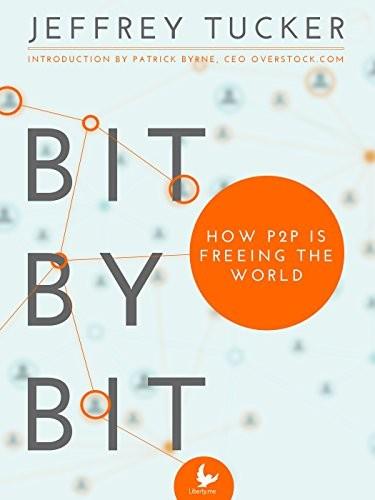
Bit by Bit: How P2P Is Freeing the World
by
Jeffrey Tucker
Published 7 Jan 2015
Observe how central the payment system is to the monetary system he created: A purely peer-to-peer version of electronic cash would allow online payments to be sent directly from one party to another without going through a financial institution. Digital signatures provide part of the solution, but the main benefits are lost if a trusted third party is still required to prevent double-spending. We propose a solution to the doublespending problem using a peer-to-peer network. The network timestamps transactions by hashing them into an ongoing chain of hash-based proof-of-work, forming a record that cannot be changed without redoing the proof-of-work. The longest chain not only serves as proof of the sequence of events witnessed, but proof that it came from the largest pool of CPU power.
…
What if the traditional barriers of physical space can be gradually overcome so that we have to depend ever less on third-party legacy institutions to manage our lives and facilitate our associations? What if spontaneous individual associations come to replace nation-states as the organizing principle of the global economy? These are the core hopes of Jeffrey Tucker’s inspiring reflection on the theory, application, and meaning of peer-to-peer technology. He draws attention to the most impressive feature of the digital revolution: equipotency, or the equal distribution of power through technological innovation. Equipotency is an extension of the universal right to self-determination. It is necessarily disruptive to traditional forms of power.
…
If you are new to these concepts, this book is a great place to start, and if you have already been pondering this subject for a while, you will find lots of interesting new insights. It is fantastic for those who are new to bitcoin and early adopters alike. Either way, the reader is sure to be intrigued by what he or she finds in this book. Roger Ver Tokyo, Japan January 1, 2015 Credits This reflection on new trends in peer-to-peer technology and their relationship to human freedom consists of observations, reflections, anecdotes, and incomplete impressions based on what I’ve seen and experienced as a writer, editor, site builder, and consumer over the last few remarkable years. Many of the ideas were tested in venues such as FEE.org (the Foundation for Economic Education), Liberty.me (the liberty-minded social and publishing network), and emerge from two years of interacting with others through speaking events, social engagement, and interviews.

Blockchain Revolution: How the Technology Behind Bitcoin Is Changing Money, Business, and the World
by
Don Tapscott
and
Alex Tapscott
Published 9 May 2016
Traditionally, when making online payments, we solve the double-spend problem by clearing every transaction through the central databases of one or many third parties, such as a money transfer service (like Western Union), a commercial bank (Citicorp), a government body (Commonwealth Bank of Australia), a credit card company (Visa), or an online payment platform (PayPal). Settlement can take days or even weeks in some parts of the world. Breakthrough: Satoshi leveraged an existing distributed peer-to-peer network and a bit of clever cryptography to create a consensus mechanism that could solve the double-spend problem as well as, if not better than, a trusted third party. On the bitcoin blockchain, the network time-stamps the first transaction where the owner spends a particular coin and rejects subsequent spends of the coin, thus eliminating a double spend.
…
“Consensus is a social process,” blogged Vitalik Buterin, pioneer of the Ethereum blockchain. “Human beings are fairly good at engaging in consensus . . . without any help from algorithms.” He explained that, once a system scales beyond an individual’s ability to do the math, people turn to software agents. In peer-to-peer networks, the consensus algorithm divvies up the right to update the status of the network, that is, to vote on the truth. The algorithm doles out this right to a group of peers who constitute an economic set, a set that has skin in the game, so to speak. According to Buterin, what’s important about this economic set is that its members are securely distributed: no single member or cartel should be able to overtake a majority, even if they had the means and incentive to do so.7 To achieve consensus, the bitcoin network uses what’s called a proof of work (PoW) mechanism.
…
Where did these diamonds come from? Trust is the sine qua non of the digital economy, and a platform for secure and reliable mass collaboration holds many possibilities for a new kind of organization and society. 2. Distributed Power Principle: The system distributes power across a peer-to-peer network with no single point of control. No single party can shut the system down. If a central authority manages to black out or cut off an individual or group, the system will still survive. If over half the network attempts to overwhelm the whole, everyone will see what’s happening. Problem to Be Solved: In the first era of the Internet, any large institution with a large established base of users, be they employees, citizens, customers, or other organizations, thought little of their social contract.
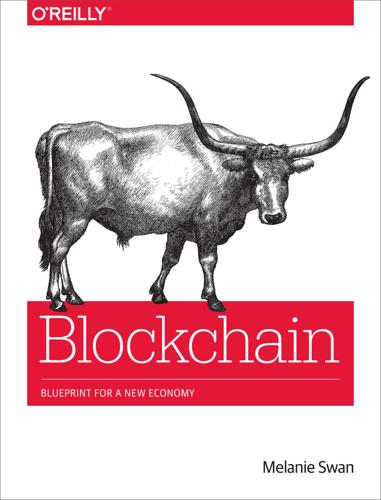
Blockchain: Blueprint for a New Economy
by
Melanie Swan
Published 22 Jan 2014
The censorship issue is that in a URL such as google.com, centralized authorities control the top-level domain, the .com portion (the United States controls .com URLs), and therefore can potentially seize and redirect the URL. Centralized authorities control all top-level domains; for example, China controls all .cn domains. Therefore, a decentralized DNS means that top-level domains can exist that are not controlled by anyone, and they have DNS lookup tables shared on a peer-to-peer network. As long as there are volunteers running the decentralized DNS server software, alternative domains registered in this system can be accessed. Authorities cannot impose rules to affect the operation of a well-designed and executed global peer-to-peer top-level domain. The same Bitcoin structure is used in the implementation of a separate blockchain and coin, Namecoin, for decentralized DNS.
…
An interesting challenge for academic publishing on the blockchain is not just having an open-access, collaboratively edited, ongoing-discussion-forum journal per existing examples, or open-access, self-published blockchain white papers on GitHub, but to more fundamentally implement the blockchain concepts in blockchain journals. The consideration of what a decentralized direct peer-to-peer model for academic publishing could look like prompts the articulation of the functions that academic publishing provides and how, if these are still required, they might be provided in decentralized models. In terms of “publishing,” any manner of making content publicly available on the Web is publishing; one can easily self-publish on blogs, wikis, Twitter, Amazon, and the like.
…
In terms of “publishing,” any manner of making content publicly available on the Web is publishing; one can easily self-publish on blogs, wikis, Twitter, Amazon, and the like. A blockchain model in terms of decentralized peer-to-peer content would be nothing more than a search engine linking one individual’s interests with another’s published material. This is a decentralized peer-to-peer model in the blockchain sense. So, academic (and other publishers) might be providing some other value functions, namely vouching for content quality. Publishers provide content curation, discovery, “findability,” relevancy, advocacy, validation, and status ascribing, all of which might be useful attributes for content consumers.

Life After Google: The Fall of Big Data and the Rise of the Blockchain Economy
by
George Gilder
Published 16 Jul 2018
All of them shared and re-enforced each other’s frustration with Silicon Valley’s software obsession and abandonment of manufacturing. And all of them soon came to see this abandonment as a gigantic opportunity. CHAPTER 11 The Heist In January 2009, Satoshi Nakamoto announced “the first release of Bitcoin, a new electronic cash system that uses a peer-to-peer network to prevent double-spending. It’s completely decentralized with no server or central authority.” He went on to specify: Total circulation will be 21,000,000 coins. It’ll be distributed to network nodes when they make blocks, with the amount cut in half every 4 years. first 4 years: 10,500,000 coins next 4 years: 5,250,000 coins next 4 years: 2,625,000 coins next 4 years: 1,312,500 coins etc . . .
…
If anyone is in control of bitcoin, its distributed security model fails. Satoshi would become just another dreaded “Trusted Third Party,” subject to subpoena by repressive governments or hacked by determined nerds or pirates. Satoshi explained: “Governments are good at cutting off the heads of centrally controlled networks like Napster, but pure peer-to-peer networks like Gnutella [music] and Tor [The Onion Router for encrypted email and video] seem to be holding their own.” Indeed, earlier in the century, the Tor system, originated in the NSA and developed by the entrepreneur Bram Cohen, comprised close to half of all Internet bits. Tor takes a video file, for example, and splits it up, peer to peer, across as many as seven thousand computers on the Net.
…
Having won more glowing recommendations, he then ascended to the summit of computer science studies in the United States—doctoral studies at Princeton during the school year and Stanford in the summers. Ali’s mentor at Princeton, the computer scientist-cryptographer Michael Freedman, had worked for two decades on the theory and practice of peer-to-peer networks. He was the co-author of two chapters in the standard textbook Peer to Peer,6 and, with Martin Casado, an author of the canonical “open-flow” software-defined networking (SDN) paper. Today he is chief technical officer of TimescaleDB, an acclaimed open-source time-series database. Ali thanks Freedman for “thinking through every detail of various distributed systems problems with me.

The Zero Marginal Cost Society: The Internet of Things, the Collaborative Commons, and the Eclipse of Capitalism
by
Jeremy Rifkin
Published 31 Mar 2014
The distributed and interconnected nature of the Internet of Things deepens individual entrepreneurial engagement in direct proportion to the diversity and strength of one’s collaborative relationships in the social economy. That’s because the democratization of communication, energy, and logistics allows billions of people to be individually “empowered.” But that empowerment is only achievable by one’s participation in peer-to-peer networks that are underwritten by social capital. A new generation is coming of age that is more entrepreneurially self-directed by means of being more socially embedded. It’s no surprise that the best and brightest of the Millennial Generation think of themselves as “social entrepreneurs.” For them, being both entrepreneurial and social is no longer an oxymoron, but rather, a tautology.
…
By eliminating virtually all of the remaining middlemen who mark up the transaction costs at every stage of the value chain, small- and medium-sized enterprises—especially cooperatives and other nonprofit businesses—and billions of prosumers can share their goods and services directly with one another on the Collaborative Commons—at near zero marginal cost. The reduction in both fixed and marginal costs dramatically reduces the entry costs of creating new businesses in distributed peer-to-peer networks. The low entry costs encourage more people to become potential entrepreneurs and collaborators, creating and sharing information, energy, and goods and services on the Commons. The changes brought on by the establishment of an IoT infrastructure and Collaborative Commons go far beyond the narrow confines of commerce.
…
Both capitalist and socialist regimes organize production in integrated, vertically scaled enterprises because of the increased efficiencies, despite their different patterns of ownership and distribution of earnings. But how do we go about organizing an economy where the entry costs in establishing a communication/energy matrix are substantially lower and paid for in large part by hundreds of millions of individuals in peer-to-peer networks, and where the marginal costs of generating, storing, and sharing communications, energy, and a growing number of products and services are heading to nearly zero? A new communication/energy matrix is emerging, and with it a new “smart” public infrastructure. The Internet of Things (IoT) will connect everyone and everything in a new economic paradigm that is far more complex than the First and Second Industrial Revolutions, but one whose architecture is distributed rather than centralized.

The Internet Is Not the Answer
by
Andrew Keen
Published 5 Jan 2015
It represented the logical conclusion to the Web’s Santa Claus economics, the Internet’s original sin, where “consumers” were treated as spoiled children and indulged with an infinite supply of free goodies in what the New York Times’ media columnist David Carr calls the “Something for Nothing” economy.5 Founded by Shawn Fanning and Sean Parker in 1999, Napster enabled what is euphemistically known as the peer-to-peer sharing of music. Fanning and Parker took Chris Anderson’s advice about the radical value of “free” to its most ridiculous conclusion. Not merely content to give their own stuff away for nothing, Napster gave away everybody else’s as well. Along with other peer-to-peer networks like Travis Kalanick’s Scour and later pirate businesses such as Megaupload, Rapidshare, and Pirate Bay, Napster created a networked kleptocracy, masquerading as the “sharing economy,” in which the only real abundance was the ubiquitous availability of online stolen content, particularly recorded music.
…
“You know, the thing that is illegal when the Mafia does it.”42 As Brad Stone notes, Amazon is becoming “increasingly monolithic in markets like books and electronics,” which is why he believes that antitrust authorities will inevitably come to scrutinize Amazon’s market power.43 Let’s hope that there will be politicians bold enough to take on Bezos before Amazon becomes, quite literally, the Everything Store. No, the Internet is not the answer, especially when it comes to the so-called sharing economy of peer-to-peer networks like Uber and Airbnb. The good news is that, as Wired’s Marcus Wohlsen put it, the “sun is setting on the wild west” of ride- and apartment-sharing networks.44 Tax collectors and municipalities from Cleveland to Hamburg are recognizing that many peer-to-peer rentals and ride-sharing apps are breaking both local and national housing and transportation laws.
…
Cloned to appear like Netflix, Popcorn Time has already been translated into thirty-two languages and offers what one analyst described as a “nightmare scenario” for the movie industry.13 The Buenos Aires–based makers of Popcorn Time claim to have invented the service for the convenience of consumers. But the more subscribers Popcorn Time steals from Hulu and Netflix, the fewer resources moviemakers will have to invest in their products. And, of course, the more we use peer-to-peer technologies like Popcorn Time, the emptier movie theaters will become. In 2013, there was a 21% drop in the number of what Variety calls the “all important” 18–24 age group buying tickets to watch movies.14 With the popularity of products like Popcorn Time, expect that number to plummet even more dramatically in the future.
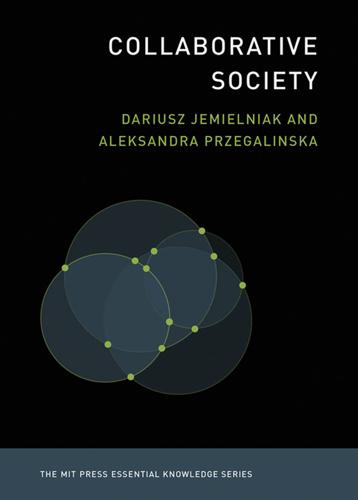
Collaborative Society
by
Dariusz Jemielniak
and
Aleksandra Przegalinska
Published 18 Feb 2020
Outhwaite, (Blackwell Publishing, 2002), vi–vi. 15. LLC Books, ed. Cult of the Dead Cow: Hacktivismo, Demon Roach Underground, Hacktivismo Enhanced-Source Software License Agreement, Hohocon (General Books, 2010). 16. J. A. Farmer, “The Spector of Crypto-Anarchy: Regulating Anonymity-Protecting Peer-to-Peer Networks,” Fordham Law Review 72 (2003): 725. 17. https://perma.cc/L4C6–7ZFK 18. L. C. Keith, “The United Nations International Covenant on Civil and Political Rights: Does It Make a Difference in Human Rights Behavior?” Journal of Peace Research 36 (1999): 95–118. 19. R. Deibert, J. Palfrey, R.
…
Sharing is an alternative form of redistributing goods and services.56 Through a large set of technologies, collaborative society builds on this alternative, allowing more and more departures from the traditional capitalist model. Platform capitalism may soon see its demise due to blockchain or other peer-to-peer technology development, especially as p2p empowers users with means of direct interaction that eliminate the need for intermediary platforms. Collaborative society, however, is a phenomenon with much deeper roots and possibly wider ramifications. Nevertheless, collaborative society faces major challenges.
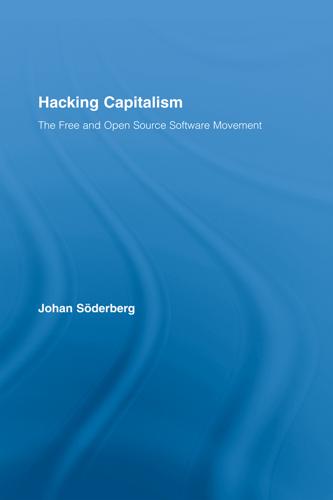
Hacking Capitalism
by
Söderberg, Johan; Söderberg, Johan;
Key to the privatisation of information is capital’s control over code architecture and over electronic, global communications. If the constituent power to write software remains out in the wild, capital faces an uphill battle when enclosing information commons. The sharing of music and films on peer-to-peer networks is only the beginning. To discern the complex symbiosis between capital and community, a closer look at the motivations and the business models are required. We must not get stuck in a black-and-white dramaturgy of profiteering villains exploiting unaware idealists. The hacker subculture has a pragmatic attitude in this regard.
…
With a norm system, a common identity, and a political profile, the FOSS development community gains some degree of independence visà-vis external forces, companies and governments in particular. This independence is demonstrated when the interests of the hacker movement and capital diverges, such as in the design of filesharing applications. Filesharing has mostly been debated from the standpoint of the alleged losses of the media industry. It is not pirate sharing that makes peer-to-peer networks subversive, though, but the peer-to-peer labour relations of which this technology is an example of. The application would never have seen the light of the day had software development been confined to the social division of labour, i.e. to professional researchers working in corporate laboratories or government institutions.
…
While the ‘library model’ thus tends to collapse rather than dichotomize the categories of gift and commodity, it does nevertheless represent a genuine alternative to the privatisation of the commons in information.28 The library analogy seems appropriate when referring to filesharing networks. Peer-to-peer networks involve users with even less personal ties than those bringing together two parts on the market. Indeed, the political relevance of filesharing rests on the fact that it can attract a mass of outsiders without asking them to commit to community bonding. Only then will the crowd grow to a size whose actions have an impact on the real world.
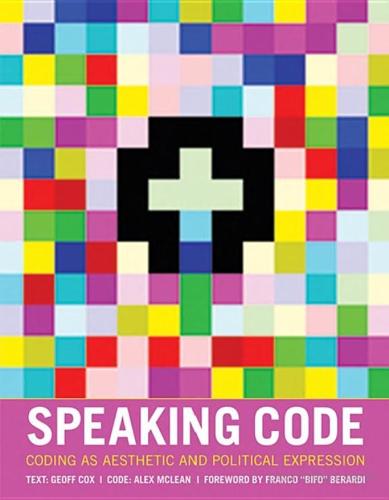
Speaking Code: Coding as Aesthetic and Political Expression
by
Geoff Cox
and
Alex McLean
Published 9 Nov 2012
Sovereignty is in effect enforced through the totality of the diverse opinions and is not in conflict with the operations of plural networks, as previously stated. If this is the case, and networked sovereignty operates through reciprocal relations, then we also need to critically review the oppositions that are perpetuated between free software initiatives and web platforms, between peer-to-peer networks and server-client architectures, as well as between public and private ownership regimes. These examples also demonstrate how sovereignty has been transferred to the market and its hold over telecommunications networks as a Coding Publics 95 new authoritarian voice of democracy. The market seemingly allows for diverse consumer choices and rights, in exchange for a strengthening of its own power and expanding consumption of technological devices that purport to allow for freedom of expression.
…
“Venture communism” is the ironic term Kleiner uses to evoke workers’ self-organization, to address the way that class conflict is conceived across telecommunications networks through the pervasive use of Internet and mobile technologies. This becomes the foundation for a critique of the rise of social media in particular as a project of venture capitalism that expropriates developments in the free software movement and commons-based peer-to-peer technologies.67 The point remains that ownership and property are core issues in these platforms; they are organized in ways that follow the logic of rent, to secure profit from immaterial assets. The owners profit through centralized control, whereas the distinctiveness of peer production lies in the relative independence of workers to control common productive assets and share the benefits.

Remix: Making Art and Commerce Thrive in the Hybrid Economy
by
Lawrence Lessig
Published 2 Jan 2009
But the key to the efficiency of this Little Brother is that it builds upon a principle described best by VisiCalc co-inventor Dan Bricklin in an essay called “The Cornucopia of the Commons.”21 80706 i-xxiv 001-328 r4nk.indd 132 8/12/08 1:55:18 AM T W O EC O NO MIE S: C O MMERC I A L A ND SH A RING 133 Bricklin’s essay was inspired by a quibble he had with those who said Napster was so successful because it was a peer-to-peer technology. Napster’s success, he argued, had nothing to do with peer-to-peer. First, the system was not in fact a “peer-to-peer” technology. Second, not using a p2p architecture may well have been a better technical strategy to serving the ends that Napster sought. Bricklin argued that Napster’s success came not from a technical design, but from an architecture that produced value as a byproduct of people getting what they wanted.
…
In a time when there are so many options to amass a 80706 i-xxiv 001-328 r4nk.indd 284 8/12/08 1:56:14 AM REFORMING US 285 music collection, I take the way that is most convenient for me and most damaging to the artists. Much has been said in the justice system, in the media and online about the legality of these peer to peer networks, but the reality is that millions of people do it and only a few are ever stopped. I shamefully admit that, despite my sympathy for the artists and others who lose money from the filesharing, I consciously take part in it and I have no plans to stop in the near future. Some people can justify stealing music because they do not realize the consequences; that is not the case for me because I am fully aware of them.

The Upstarts: How Uber, Airbnb, and the Killer Companies of the New Silicon Valley Are Changing the World
by
Brad Stone
Published 30 Jan 2017
Despite that setback, Kalanick was ready to dust himself off and try again.19 He started talking to one of his Scour co-founders, Michael Todd, about redeveloping the technology behind Scour and selling it to media companies as a tool to help them distribute their material online. Bandwidth was expensive back then, around six hundred dollars per megabyte (as opposed to about a dollar per megabyte on a broadband internet line today), and peer-to-peer networking could reduce the cost. They called their new company Red Swoosh, after the twin half-moon insignias in the original Scour logo. Kalanick said it was “a revenge business” and recognized a satisfying irony: “The idea is the same peer-to-peer technology but I take those thirty-three litigants that sued me and turn them into customers,” he said. “Now those dudes who sued me are now paying me. It sounded good.”20 In practice, it didn’t work out as well.
…
Kalanick later said that Uber’s first fight in San Francisco added to his personal conviction about the company just as he was taking a more active leadership role. “For me that was the moment where I was like, for whatever reason, I knew this was the right battle to fight,” he told me in 2012. On a tech podcast, he added that the fight with the MTA recalled all the litigation and conflict of his decade in the world of peer-to-peer technology. “The great thing is I’ve seen this before,” he said. “I thought, Oh, man, I have a playbook for this. Let’s do this thing. When that happened, it felt like a homecoming.”28 After that first meeting with Hayashi, Kalanick spent weeks negotiating with Garrett Camp and angel investors Chris Sacca and Rob Hayes over his compensation as CEO.
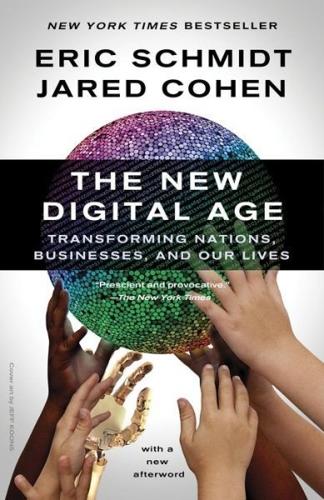
The New Digital Age: Transforming Nations, Businesses, and Our Lives
by
Eric Schmidt
and
Jared Cohen
Published 22 Apr 2013
Today, users already share their iTunes libraries with strangers over Wi-Fi networks, and in the future, they’ll be able to share much more. In places like Yemen, where socially conservative norms limit many teenagers’ ability to socialize with the opposite sex, young people may elect to hide their personal information on peer-to-peer networks when at home or at the mosque—who knows who could be looking?—but reveal it when in public parks and cafés, and at parties. Yet P2P technology is a limited replacement for the richness and convenience of the Internet, despite its myriad advantages. We often need stored and searchable records of our activities and communications, particularly if we want to share something or refer to it later.
…
“give the police the technology”: Rich Trenholm, “Cameron Considers Blocking Twitter, Facebook, BBM after Riots,” CNET, August 11, 2011, http://crave.cnet.co.uk/software/cameron-considers-blocking-twitter-facebook-bbm-after-riots-50004693/; Olivia Solon, “Cameron Suggests Blocking Potential Criminals from Social Media,” Wired UK, August 11, 2011, http://www.wired.co.uk/news/archive/2011-08/11/david-cameron-social-media. industry cooperation with law enforcement was sufficient: “Social Media Talks About Rioting ‘Constructive,’ ” BBC, August 25, 2011, http://www.bbc.co.uk/news/uk-14657456. Bitcoins: Bitcoin is the most successful experiment in digital currency today; it uses a mix of peer-to-peer networking and cryptographic signatures to process online payments. The value of the currency has fluctuated wildly since its inception; the first publicly traded Bitcoins went for 3 cents, and a little more than a year later they were valued at $29.57 apiece. Bitcoins are held in digital “wallets,” and are used to pay for a wide range of virtual and physical goods.
…
Contemporary mobile P2P technologies like Bluetooth allow two physical devices to speak directly to each other rather than having to communicate over the Internet. This is in contrast to P2P file-sharing networks such as BitTorrent, which operate over the Internet. Common to both forms of peer-to-peer technologies is that users connect to each other (acting as both suppliers and receivers) without using a fixed third-party service. For citizens in the future, P2P networking will offer an enticing combination of instant communication and independence from third-party controls or monitoring. All smart phones today are equipped with some form of peer-to-peer capability, and as the wave of cheap smart phones saturates the emerging markets in the next decade, even more people will be able to take advantage of these increasingly sophisticated tools.

How to Fix the Future: Staying Human in the Digital Age
by
Andrew Keen
Published 1 Mar 2018
Sunde was imprisoned for a year in Sweden for allegedly assisting Pirate Bay users with infringement of copyright. So his partnership with Adblock Plus is an attempt to reengineer a legal ecosystem for an online content industry that, in a previous life, he helped undermine. In my 2007 polemic, The Cult of the Amateur, I was extremely critical of the way in which peer-to-peer networks like The Pirate Bay were enabling the theft of online content and thus destroying the livelihood of musicians, photographers, writers, and filmmakers. And so, over the years, Sunde and I had often been on opposite sides of the piracy debate, sometimes even personally clashing in discussions about the need for copyright law and the (im)morality of online piracy.
…
You’ll remember there was even a parallel event in the same month as the Berlin conference—the “Decentralized Web Summit” at San Francisco’s Internet Archive, featuring many of the internet’s original architects, including the inventor Berners-Lee and the TCP/IP creator Vint Cerf. Everyone, it seems, on both sides of the Atlantic, is nostalgic for the future. “The web’s creator looks to reinvent it,” as the New York Times described this June 2016 event, which brought together privacy advocates and pioneers of such peer-to-peer technologies as blockchain to discuss a “new phase of the internet.”1 Brewster Kahle, the Internet Archive founder and summit organizer, believes that the time is now right for a radical re-decentralization of digital power. The future has finally caught up with us, he tells me when I visit him at his office in San Francisco’s Inner Richmond district.

The Future of the Internet: And How to Stop It
by
Jonathan Zittrain
Published 27 May 2009
Instead, any improvements were orchestrated centrally. As the initial offerings of the proprietary networks plateaued, the Internet saw developments in technology that in turn led to developments in content and ultimately in social and economic interaction: the Web and Web sites, online shopping, peer-to-peer networking, wikis, and blogs. The hostility of AT&T toward companies like Hush-A-Phone and of the proprietary networks to the innovations of enterprising subscribers is not unusual, and it is not driven solely by their status as monopolists. Just as behavioral economics shows how individuals can consistently behave irrationally under particular circumstances,18 and how decision-making within groups can fall prey to error and bias,19 so too can the incumbent firms in a given market fail to seize opportunities that they rationally ought to exploit.
…
These remedies can apply to some units and not others, allowing regulators to winnow out bad uses from good ones on the basis of individual adjudication, rather than rely on the generalities of ex ante legislative-style drafting. For example, suppose a particular television broadcast were found to infringe a copyright or to damage someone’s reputation. In a world of old-fashioned televisions and VCRs, or PCs and peer-to-peer networks, the broadcaster or creator could be sued, but anyone who recorded the broadcast could, as a practical matter, retain a copy. Today, it is possible to require DVR makers to delete the offending broadcast from any DVRs that have recorded it or, perhaps acting with more precision, to retroactively edit out the slice of defamatory content from the recorded program.
…
Daniel Solove, for instance, has written extensively on emergent privacy concerns, but he has focused on the danger of “digital dossiers” created by businesses and governments.52 Likewise, Jerry Kang and Dana Cuff have written about how small sensors will lead to “pervasive computing,” but they worry that the technology will be abused by coordinated entities like shopping malls, and their prescriptions thus follow the pattern established by Privacy 1.0.53 Their concerns are not misplaced, but they represent an increasingly smaller part of the total picture. The essence of Privacy 2.0 is that government or corporations, or other intermediaries, need not be the source of the surveillance. Peer-to-peer technologies can eliminate points of control and gatekeeping from the transfer of personal data and information just as they can for movies and music. The intellectual property conflicts raised by the generative Internet, where people can still copy large amounts of copyrighted music without fear of repercussion, are rehearsals for the problems of Privacy 2.0.54 The Rodney King beating was filmed not by a public camera, but by a private one, and its novel use in 1991 is now commonplace.

Who Owns This Sentence?: A History of Copyrights and Wrongs
by
David Bellos
and
Alexandre Montagu
Published 23 Jan 2024
(to licensing).191 “Give me a child till he is seven years old, and I will show you the man,” said St. Ignatius Loyola, and this Jesuit adage has also steered the propaganda campaigns of the movie and recording industries. They successfully lobbied the California legislature to pass a law requiring schools to develop “education technology plans” in which “the implications of illegal peer-to-peer network file sharing are taught” (AB 307, known as the Chavez Bill, passed in 2006). Then they brought pressure to bear on America’s equivalent of the Soviet Young Pioneers by providing printed copyright lesson plans to the Boy Scout movement for a new “Respect Copyright” activity badge.192 Copyright with Cyberbee, Captain Copyright, Join the © Team, Lucky and Flo Sniff Out Movie Pirates were some of the titles of comics and materials for classroom use that were mailed directly to schools.
…
Initially designed as a tool to allow scientists to share their work, it quickly became a means for distributing perfect copies of text, and then sound and image files, at a marginal cost that was, for the first time, zero to the copier, if not to the planet. Publishers feared their entire business would be destroyed, and music companies were in an even greater panic. Peer-to-peer technologies were devised to enable perfect reproductions of music recordings to be made and shared widely – thus rendering C.D.s obsolete overnight. The music industry tried to pursue the compan-ies that hosted these services or facilitated the Internet connections that allowed them to function. In an effort to insulate themselves from this type of liability, the Internet service providers (I.S.P.s) successfully lobbied Congress for a “safe harbor”, which eventually came in 1998, under the Digital Millennium Copyright Act, or D.M.C.A.
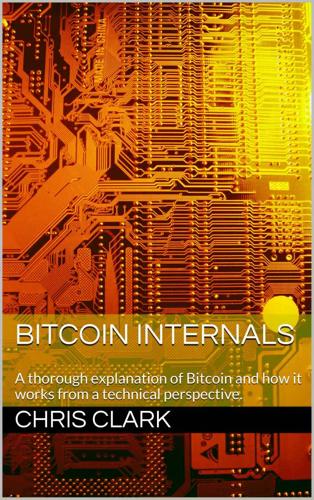
Bitcoin Internals: A Technical Guide to Bitcoin
by
Chris Clark
Published 16 Jun 2013
Chapter 8 The Block Chain 8.1 The Byzantine Generals’ Problem After verification, transactions are relayed to other nodes in the peer-to-peer network. The other nodes will repeat the verification and relay the transaction to more nodes. Within seconds, the transaction should reach most of the nodes on the network. Transactions are then held in pools on the nodes awaiting insertion into the block chain, which is a public record of all transactions that have ever occurred in the Bitcoin network. The block chain is not just a simple list of transaction receipts though. It is specially designed to solve the double-spending problem for a peer-to-peer network of untrusted nodes. As discussed in the Double-Spending section, the goal is to determine the chronological ordering of transactions so that the first payment can be accepted and the second payment can be rejected.
…
However, if there are a large number of chunks, then there is a greater chance that some of the hash values will become corrupted. Furthermore, this is a lot of data for the trusted source to store. Ideally, a trusted source would only have to provide one hash, and the rest of the hashes could be downloaded from untrusted sources, such as peers in a peer-to-peer network. This can be accomplished using a top hash generated by hashing all of the hashes of the chunks. The resulting structure is called a hash list. If the number of chunks is very large, the list of hashes of all the chunks might also be quite large. In order to verify just one chunk against the trusted top hash, one would need to obtain all of the hashes in the hash list.
…
This idea was introduced by Nick Szabos in his digital currency proposal called Bit Gold, which was released between 1998 and 2005.[18] A proof of work chain provides additional security because each individual proof of work gets buried under the subsequent proofs of work. As the chain grows, it becomes more and more difficult to redo all the proofs of work. Chapter 6 Technical Overview 6.1 Architecture Bitcoin is run by a peer-to-peer network of computers called nodes. Nodes are responsible for processing transactions and maintaining all records of ownership. Anyone can download the free open-source Bitcoin software and become a node. All nodes are treated equally; no node is trusted. However, the system is based on the assumption that the majority of computing power will come from honest nodes (see Chapter 8).

To Save Everything, Click Here: The Folly of Technological Solutionism
by
Evgeny Morozov
Published 15 Nov 2013
Internet-centric explanations, at least in their current form, greatly impoverish and infantilize our public debate. We ought to steer away from them as much as possible. If doing so requires imposing a moratorium on using the very term “Internet” and instead going for more precise terminology, like “peer-to-peer networks” or “social networks” or “search engines,” so be it. It’s the very possibility that the whole—that is, “the Internet”—is somehow spiritually and politically greater than the sum of these specific terms that exerts such a corrosive influence on how we think about the world. Hype and Consequences Ahistorical thinking in Internet debates is too ubiquitous and persistent to be written off as ignorance or laziness.
…
Once we move to a post-Internet world, there is a small chance that our technology pundits (and perhaps even some academics) will no longer get away with proclaiming something a revolution and then walking away without supplying good, empirical evidence—as if that revolution were so self-evident and no further proof was needed. I too used to be one of those people—albeit very briefly—sometime between 2005 and 2007. I remember perfectly the thrill that comes from thinking that the lessons of Wikipedia or peer-to-peer networking or Friendster or Skype could and should be applied absolutely everywhere. It’s a very powerful set of hammers, and plenty of people—many of them in Silicon Valley—are dying to hear you cry, “Nail!” regardless of what you are looking at. Thinking that you are living through a revolution and hold the key to how it will unfold is, I confess, rather intoxicating.
…
Close scrutiny of the quote in context, however, reveals how easily Lessig’s brand of Internet-centrism mutates into hopeless technological defeatism: “But the network is not going away. We are not going to kill the ‘darknet’ (as Microsoft called it in a fantastic paper about the inevitable survival of peer-to-peer technologies). We are not going to regulate access to news, or ads for free futons. We are not going back to the twentieth century.” In the context of challenges induced by transparency, Lessig proposes that it would be better to tinker with the laws and embrace publicly funded elections so that citizens wouldn’t even entertain the notion that politicians might be bought off.

Mastering Blockchain, Second Edition
by
Imran Bashir
Published 28 Mar 2018
Consensus algorithms are discussed later in this chapter and throughout the book as appropriate. Blockchain can be thought of as a layer of a distributed peer-to-peer network running on top of the internet, as can be seen in the following diagram. It is analogous to SMTP, HTTP, or FTP running on top of TCP/IP. The network view of a blockchain At the bottom layer in the preceding diagram, there is the internet, which provides a basic communication layer for any network. In this case, a peer-to-peer network runs on top of the internet, which hosts another layer of blockchain. That layer contains transactions, blocks, consensus mechanisms, state machines, and blockchain smart contracts.
…
Transaction: A transaction is the fundamental unit of a blockchain. A transaction represents a transfer of value from one address to another. Block: A block is composed of multiple transactions and other elements, such as the previous block hash (hash pointer), timestamp, and nonce. Peer-to-peer network: As the name implies, a peer-to-peer network is a network topology wherein all peers can communicate with each other and send and receive messages. Scripting or programming language: Scripts or programs perform various operations on a transaction in order to facilitate various functions. For example, in Bitcoin, transaction scripts are predefined in a language called Script, which consist of sets of commands that allow nodes to transfer tokens from one address to another.
…
KYC-Chain This application provides the facility to manage Know Your Customer (KYC) data securely and conveniently based on smart contracts. OpenBazaar This is a decentralized peer-to-peer network that enables commercial activities directly between sellers and buyers instead of relying on a central party, such as eBay and Amazon. It should be noted that this system is not built on top of a blockchain; instead, DHTs are used in a peer-to-peer network to enable direct communication and data sharing among peers. It makes use of Bitcoin and various other cryptocurrencies as a payment method. Lazooz This is the decentralized equivalent of Uber.
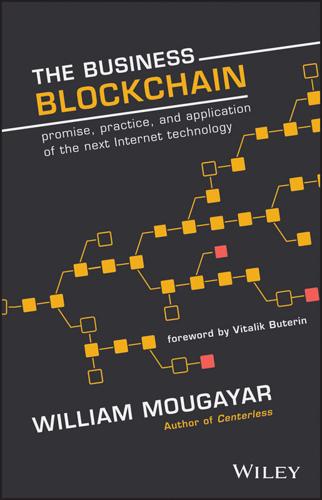
The Business Blockchain: Promise, Practice, and Application of the Next Internet Technology
by
William Mougayar
Published 25 Apr 2016
As cryptocurrency volatilities subside, these will become popular. Derivatives, options, swaps, synthetic instruments, investments, loans, and many other traditional instruments will have their cryptocurrency version, therefore creating a new financial services trading marketplace. 9. Peer-to-Peer Network There is nothing “central” about blockchains. Architecturally, the base layer of the blockchain is a peer-to-peer network. A blockchain pushes for decentralization via peer processing at its node locations. The network is really the computer. You verify each other transaction at the peer-to-peer level. In essence, a blockchain could be regarded as a thin computing cloud that is truly decentralized.
…
Use the blockchain in a more fundamental way, where the app would not function without the blockchain. Typically, you would set-up a specific peer-to-peer network with nodes, for example, OpenBazaar, as a decentralized e-commerce app. Use your own blockchain (could be shared with others), without an economic token or currency unit. This is where most of the permissioned blockchains play within enterprises. Use your own blockchain (or another blockchain), including a token or currency unit, to create an economic network of value, for example, MaidSafe,4 which creates a market for unused computing resources over a peer-to-peer network of users. 12 FEATURES OF A BLOCKCHAIN PLATFORM If you need to evaluate a given blockchain platform, the following features are important: 1.
…
Rather than simply hoping that the parties we interact with behave honorably, we are building technological systems that inherently build the desired properties into the system, in such a way that they will keep functioning with the guarantees that we expect, even if many of the actors involved are corrupt. All transactions under “crypto 2.0” come with auditable trails of cryptographic proofs. Decentralized peer-to-peer networks can be used to reduce reliance on any single server; public key cryptography could create a notion of portable user-controlled identities. More advanced kinds of math, including ring signatures, homomorphic encryption, and zero-knowledge proofs, guarantee privacy, allowing users to put all of their data in the open in such a way that certain properties of it can be verified, and even computed on, without actually revealing any private details.
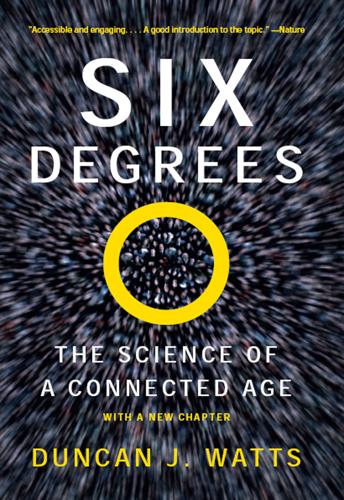
Six Degrees: The Science of a Connected Age
by
Duncan J. Watts
Published 1 Feb 2003
Because no one server knows where all the files are—because there is no central directory—every query becomes a broadcast search that effectively asks each and every node in the network, “Do you have this file?” So a peer-to-peer network like Gnutella, comprising ten thousand nodes, for example, will generate roughly ten thousand times as many messages as a Napster-like network of the same size, where each query is sent only to a single, high-capacity server. Because the aim of peer-to-peer networks is to become as large as possible (in order to increase the number of available files), and because the larger the network is, the worse its performance will be, could it be that truly peer-to-peer networks are inherently self-defeating? A hint of a Gnutella-like world was revealed by accident a year or so ago by Mrs.
…
But there is also a practical reason to understand directed searches in networks—namely, the process of finding a target person in a social network, through a chain of intermediate acquaintances, is essentially the same as finding a file or other piece of uniquely specified information in a distributed database. Quite a lot of attention has been paid recently to the potential of so-called peer-to-peer networks, particularly in the music industry. The first generation of such networks, the archetype of which is the infamous Napster, was actually only a peer-to-peer network in a limited sense. While the files themselves are located on individuals’ personal computers—called peers—and the file exchanges occur directly between peers, a complete directory of all available files (and their locations) is maintained on a central server.
…
D., and Bernard, H. R. The reverse small world experiment. Social Networks, 1, 159–192 (1978). Bernard, H. R., Killworth, P. D., Evans, M. J., McCarty, C., and Shelly, G. A. Studying relations cross-culturally. Ethnology, 27(2), 155–179 (1988). Search in Peer-to-Peer Networks A discussion of the problems facing peer-to-peer networks like Gnutella is Ritter, J. P. Why Gnutella can’t scale. No really (working paper, available on-line at http://www.darkridge.com/~jpr5/doc/gnutella.html, 2000). Two search algorithms that take advantage of Gnutella’s apparent scale-free character are presented in Adamic, L.
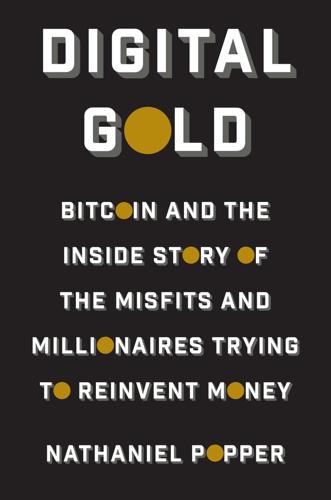
Digital Gold: Bitcoin and the Inside Story of the Misfits and Millionaires Trying to Reinvent Money
by
Nathaniel Popper
Published 18 May 2015
After Martti suggested his own changes, the final version made the more modest assertion that “the community is hopeful the currency will remain outside the reach of any government.” When the item went online, shortly after midnight in Helsinki, it wasn’t anything more than the single paragraph the Bitcoin team had submitted. “How’s this for a disruptive technology?” it began. “Bitcoin is a peer-to-peer, network-based digital currency with no central bank, and no transaction fees.” Despite the modesty of the item, the Internet chat channel that Martti had established for the Bitcoin community quickly lit up. NewLibertyStandard wrote: “FRONT PAGE!!!” Regulars like Laszlo made a point of being on the Bitcoin chat channel, to answer questions and serve as a tour guide of sorts for any newbies who checked in after reading the story.
…
Back when Satoshi had first launched the software, his writings were drily focused on the technical specifications of the programming. But after the first few weeks, Satoshi began emphasizing the broader ideological motivations for the software to help win over a broader audience, and privacy was only a part of it. In a February posting on the website of the P2P Foundation, a group dedicated to decentralized, peer-to-peer technology, Satoshi led off by talking about problems with traditional, or fiat, currencies, a term for money generated by government decree, or fiat. “The root problem with conventional currency is all the trust that’s required to make it work,” Satoshi wrote. “The central bank must be trusted not to debase the currency, but the history of fiat currencies is full of breaches of that trust.”
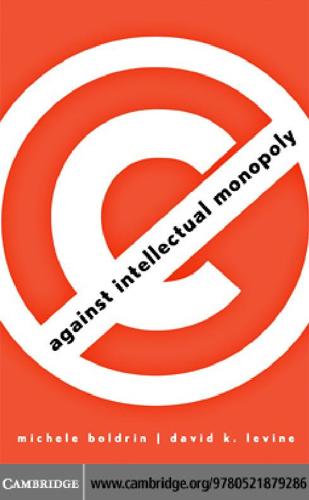
Against Intellectual Monopoly
by
Michele Boldrin
and
David K. Levine
Published 6 Jul 2008
Within the book industry there is considerable evidence with which to answer this question, because, while most publishers have released electronic editions only in encrypted form, a few have sold unencrypted editions. Moreover, many books are currently available on peer-to-peer networks, and there have been lawsuits by a number of authors attempting to prevent this. So, we might expect relatively few sales of unencrypted electronic books because they will immediately appear for free on peer-to-peer networks, while encrypted books will sell better because they are not subject to “piracy.” Strikingly, the data shows exactly the opposite. The case of Fictionwise.com is an especially instructive natural experiment because, depending on the publisher and author, the site sells some books in encrypted form and others in unencrypted form.
…
Demand for Edison’s phonograph obviously increased as cheaper and more abundant recordings of music became available, which was facilitated by a weak enforcement of the composers’ monopoly power. Encrypted versus Unencrypted Sales The book, recorded music, and movie industries have been heavily influenced by the Napster experience, in which music has been given away for free over peer-to-peer networks. Consequently these industries have made a strong effort both to encrypt their products and to lobby the government to mandate encryption schemes. The Digital Millennium Copyright Act, for example, makes it a federal crime to reverse-engineer encryption schemes used to protect copyright. When it comes to competitive markets, P1: KNP head margin: 1/2 gutter margin: 7/8 CUUS245-02 cuus245 978 0 521 87928 6 May 28, 2008 10:35 Creation under Competition 35 the Napster experience is deceptive – the product distributed on Napster-like networks is not only cheaper than the commercial product but also is also better.
…
My friend Dave Drake has given me permission to let the public know that his best-earning book published by anyone other than Baen, in one reporting period, earned him $36,000 in royalties for the paper edition – and $28 for the electronic edition. And that’s about typical for even a successful book issued electronically [in encrypted form].32 Interestingly, searching the Gnutella peer-to-peer network on September 1, 2002, and on a number of subsequent occasions, the keyword e-book turns up several books released by Baen in electronic form. But they are legal copies of books given away by Baen for free – we found none of the books that Baen sells. In the end, it is difficult to avoid the conclusion that it is the unpopularity of the music industry with its customers, combined with the inferiority of the “legitimate” product, that has led to the widespread giving away of MP3s for the cost of personal time and bandwidth.
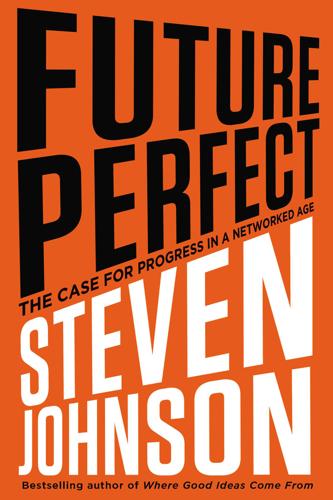
Future Perfect: The Case for Progress in a Networked Age
by
Steven Johnson
Published 14 Jul 2012
Lindahl himself ultimately stopped contributing to Wikipedia, driven off by what he called the “deletionistas.” But over time, the revisions tightened the prose and expanded the scope of the entry. The end result is a rich, informative, well-structured document that covers the technical elements of peer-to-peer networks, but also includes sections on their social and economic impact, and the historical context of their invention. Near the end of the entry, the text even suggests that peer-to-peer networks are increasingly being used to describe human-to-human interactions, including notions of peer governance and peer production. The media like to highlight stories of Wikipedia abuse: the scurrilous attack that a user has added to a rival’s biographical entry; the endless fighting over the content of the abortion entry, or the entry on the Iraq War.
…
Years after both Baran and Davies had published their seminal papers, Davies jokingly said to Baran, “Well, you may have got there first, but I got the name.” In the late 1960s, packet switching became the foundation of ARPANET, the research network that laid the groundwork for the Internet. The ARPANET design relied on several radical principles that broke with existing computing paradigms. ARPANET was what we would now call a peer-to-peer network, as opposed to a client-server or mainframe-terminal network. Traditionally, networks had involved centralized mainframes that contained far more processing power and storage capacity than the less advanced terminals connected to them. The intelligence in the network, in other words, was centralized; decisions about what kind of information should be prioritized in the network were executed in these dominant machines.
…
Bottom-up implies a top, a leadership that gets its support from below, a kind of reverse hierarchy. But the network that Baran, Cerf, and others designed was a network of peers, not a hierarchy. No single agency controlled it absolutely; everyone controlled it partially. Decentralization, peer-to-peer networks, gateways, platform stacks—the principles that Baran, Davies, Cerf, Kahn, and others hit upon together in the 1960s and 1970s provided a brilliant solution to the problem of sharing information on a planetary scale. Tellingly, the solution ultimately outperformed any rival approaches developed by the marketplace.
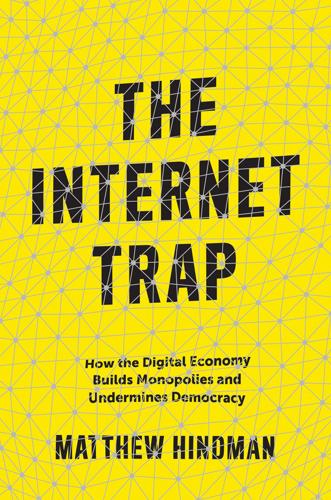
The Internet Trap: How the Digital Economy Builds Monopolies and Undermines Democracy
by
Matthew Hindman
Published 24 Sep 2018
China and, 178; Chrome and, 24–25, 145; Colossus and, 21; cost per thousand impressions (CPM) and, 69; dark fiber and, 21; data centers of, 2, 12, 15–16, 20–23, 54; DeepMind and, 23, 194n24; design advantages and, 25–28; Dremel and, 27; economic geography and, 68–69, 79–80; experiments and, 1–2, 25–26, 31, 55, 153, 158, 193n1; F1 and, 21, 23; Facebook duopoly and, 4, 30, 42, 68, 180; fast architecture of, 2, 21–25, 80, 144, 147, 176; fiber optic cables and, 2, 22; Gmail and, 21, 23; Hitwise and, 87; infrastructure and, 2, 21–22, 26, 28, 54, 158, 168, 176; MapReduce and, 21; market share of, 3, 24, 30–31, 173, 195, 195n63; nature of internet and, 164, 167–70, 179; news and, 32, 61, 102, 105, 108, 134–35, 143–48, 153, 156, 158; Page and, 27; page views and, 24, 108; peering and, 22, 164; Percolator and, 21; performance dashboards and, 24; personalization and, 39–40, 42, 53–55, 57, 61; Plus and, 174; power usage efficiency (PUE) and, 23; Project Kennedy and, 27; recommendation systems and, 53–55; revenue and, 2, 8, 28, 31, 68, 79, 143, 173–74, 179; routers of, 22; Russian hackers and, 178; Sawzall and, 27; Schmidt and, 37, 147; search results speed and, 1–2; server farms of, 15, 20, 28; Spanner and, 21, 23; stickiness and, 2, 24, 156, 167, 171; surveillance and, 176–77; TensorFlow and, 21; Tenzig and, 27; tilted playing field and, 15–16, 18, 20–32, 36–37, 194n24, 195n63; traffic and, 87, 90, 98; user affection for, 31; YouTube and, 21, 79, 145–46, 165 Google Docs, 18 Google File System, 20–21, 26 Google News, 39–40, 53–55, 61, 79, 148 Googlization of Everything, The (Vaidhyanathan), 39 governance, 105, 170–71 government subsidies, 133, 137, 140–42 Graepel, Thore, 59 Grateful Dead, 162 Gravity, 46–47 Groupon, 26 Guardian, 58, 147, 151, 158–59 hackers, 177–78 Hahn, Kyu, 32 Hale Global, 103 Hammerbacher, Jeff, 15 hardware, 22–23, 26–28, 31, 50, 54, 60, 147, 154, 164 Hargittai, Eszter, 31, 33–34 Häubl, Gerald, 34 Hauser Center, 119 headlines, 13, 32, 36, 38, 107, 147, 149–50, 154–57, 160–61 Here Comes Everybody (Shirky), 12 Herfindahl-Hirschman Index (HHI), 111, 115, 126, 127, 128, 130, 175, 200n18 Hill, Benjamin Mako, 170 Hispanics, 123–27, 191 Hitwise, 84, 87–88, 89 Hobbes, Thomas, 165–66 Hölzle, Urs, 24 Howard, Phil, 177 Huffington Post, 9, 19, 30, 102, 137, 145, 149–51, 168 Hundt, Reed, 18 hyperlocal sites, 68, 77–78, 81, 101–4, 119, 121, 130–37, 164, 180 hypertext, 3, 143 increasing returns, 36–37, 63–64, 80–81, 181, 184 information overload, 4 infrastructure: concentration and, 171 (see also concentration); Facebook and, 22, 168, 176; Google and, 2, 21–22, 26, 28, 54, 158, 168, 176; internet and, 2, 13, 21–29, 50, 54, 86, 152–54, 158–59, 168, 171, 176; news and, 152–54, 158–59; peer-to-peer networks and, 3, 19, 22, 37, 164; power laws and, 83, 86, 89, 93, 95–96, 184–85; stickiness and, 13, 23 innovation: attention economy and, 11; cloud computing and, 34, 153–54, 168, 203n28; evolution and, 13, 36, 60, 136–37, 148, 162, 164–73, 176–77, 180; experiments and, 11, 100, 133, 154; fiber optic cables and, 2, 22; hypertext and, 3; mobile devices and, 2–4, 13, 39, 69, 109, 137, 142–44, 147, 152, 160, 165, 167, 170, 179; nature of internet and, 163, 167, 170, 173, 175; news and, 11, 133, Index 139, 154; peer-to-peer networks and, 3, 19, 22, 37, 164; television and, 12; traffic and, 100 Institute for Interactive Journalism, 121 intellectual property, 8 international trade, 5, 62, 80 internet: browsers and, 2, 24–25, 34, 107, 143, 175, 195n63; concentration and, 171 (see also concentration); data centers and, 2, 12, 15–16, 20–23, 54; equality and, 3–4, 9, 13, 18–19, 22, 30, 64, 83–86, 96–101, 153, 164–69, 171, 198n41; founding myth of, 171; governance of, 170–75; hyperlocal sites and, 68, 77–78, 81, 101–4, 119, 121, 130–37, 164, 180; hypertext and, 3; imaginary, 163–64; infrastructure and, 2, 13, 21–29, 50, 54, 86, 152–54, 158–59, 168, 171, 176; lopsided understanding of, 5–8; nature of, 162–80; net neutrality and, 64, 84, 131, 170–72, 175; peer-to-peer networks and, 3, 19, 22, 37, 164; as postindustrial technology, 16, 163, 179; regulation and, 64, 104, 162, 172, 175, 177; search engines and, 168 (see also search engines); server farms and, 4, 15, 20, 28–29, 167; speed and, 1–2, 21–25, 30, 54, 81–82, 147–48, 166–67, 170, 190; surfing and, 77, 79, 107; World Wide Web and, 2–3, 83, 171 Intuit, 26 investment: attention economy and, 4, 9, 12–13; economic geography and, 73; increasing returns and, 36–37, 63–64, 80–81, 181, 184; methodology and, 183; nature of internet and, 169, 171, 174, 180; news and, 145, 148, 150–55, 158–60, 201n13; personalization and, 42, 50, 54; tilted playing field and, 15, 19–23, 28–29, 33; traffic and, 100 iOS, 18, 143, 168 iPad, 39, 142, 144 iPhone, 107, 142–43 Iyengar, Shanto, 32 Jansen, Bernard, 31 Java, 143 Johnson, Eric J., 34 journalism: attention economy and, 7, 10–13; best hope for, 160–61; Columbia Journalism Review and, 119, 148; cooperation and, 158–59; economic geography and, 78, 81; • 231 editors and, 29, 42, 48, 53, 70, 102–3, 132, 135, 149, 152, 155–61; government subsidies for, 133, 137, 140–42; hamster wheel, 148; headlines and, 13, 32, 36, 38, 107, 147, 149–50, 154–57, 160–61; hyperlocal sites and, 103–4, 119, 121, 130–37; Institute for Interactive Journalism and, 121; local, 104–5, 107, 118–21, 129–30; myth of monetization and, 134–35, 140, 145; nature of internet and, 179; nonprofit, 118, 133, 137, 140–42, 146, 160; personalization and, 39–40, 56; philanthropy and, 133, 137, 140–42; postindustrial, 179; profit and, 132–33; Project for Excellence in Journalism and, 107, 121; recommendation systems and, 40; reporters and, 10, 78, 132, 135, 145, 149–50, 156–61; Reynolds Journalism Institute and, 119; shortened articles and, 149; stickiness and, 132–37, 140–48, 152, 154, 157, 159–61; tilted playing field and, 35; traffic and, 101; unions and, 141 Karpf, David, 169 Kidder, Tracy, 82 Kimport, Katrina, 169 K-nearest neighbor algorithm, 44–45, 54 Knight Foundation, 159 Kogan, Aleksandr, 58–59 Kohavi, Ron, 28, 153 Koren, Yehuda, 44–49, 51, 196n15 Kosinski, Mikal, 59 Kovach, Bill, 160 Krugman, Paul, 6, 62–63, 80 Lake Wobegon effect, 187 Lank, Edward, 31–32 leakage, 88–89, 90, 92 legal issues: antitrust laws and, 42, 170, 172–75, 199n15; Campus Network and, 35; Congress and, 104, 141–42; courts and, 6, 129, 148; intellectual property and, 8; licenses and, 7, 30; Netflix Prize and, 47, 49; net neutrality and, 64, 84, 131, 170–72, 175; patents and, 16; Prometheus v.
…
Links within the hypertext could point to other relevant passages, definitions, graphics, tables, or even other documents on the same computer. The second technology was the internet, which by the 1980s had become ubiquitous in universities and research labs. The internet had been created as a peer-to-peer network, in which there were no central hubs: each computer could send and receive data with any other computer. Tim Berners-Lee, the creator of the web, saw that hypertext could piggyback on top of the internet. Instead of being sandboxed within a single computer, hypertext could link documents on computers continents apart.
…
Packets took fewer hops, and users saw their web pages and videos load faster, at least when they visited the largest sites. This shift of traffic to the edges is crucial for high-bandwidth, low-latency uses, like online video or interactive web applications. But it also challenges the notion that the internet is still a peer-to-peer network. Google might have its fiber hooked directly into Comcast’s network, but small sites do not. Google’s hardware, networking infrastructure, and software stack all show how big internet firms become more efficient as they scale up. Google or Facebook or Microsoft or Amazon can deploy more storage, more A Tilted Playing Field • 23 computing power, and more bandwidth per dollar than smaller firms.

The Secret War Between Downloading and Uploading: Tales of the Computer as Culture Machine
by
Peter Lunenfeld
Published 31 Mar 2011
Video games may have begun in arcades, but they are now exponentially more likely to be played in the home than outside it. As for the cinema, which was itself swallowed up by televisual prostheses like videocassette recorders (VCRs), DVRs, and DVDs, the computer simulates it, migrates it online, chops it into YouTube segments, has it pirated on peer-to-peer networks, and shoots, stores, and projects it digitally. When computers simulate telephones, everything becomes available from the free Internet calling on services like Skype to mobile tele/computing hybrids like the iPhone. When we are talking about communication devices, simulation engenders participation.
…
Bespoke futures might well restore some balance. The culture machine offers a growing capacity to create complex visualizations with digital systems and distribute them widely over high-speed networks, engaging with open-source cultural initiatives. We are now capable of taking advantage of peer-to-peer networking, file sharing, and massively scaled distributed computing to develop countervailing forces, or people’s rather than corporate scenario-building strategies. 116 BESPOKE FUTURES Bespoke Futures as Strange Attractors At an earlier cultural moment, we might have looked to the, or at least an, avant-garde for surplus futurity and to generate our bespoke futures.
…
Brenda Laurel once noted that “creating interactive simulations of complex systems is one of the most highly leveraged goals we can achieve with our burgeoning technological power. . . . Good simulations will not only help us learn about systems, they may help us evaluate policies and form political goals.”36 This new century brings new problems, as is always the case, but we would be foolish to not take advantage of peer-to-peer networking, file sharing, and massively scaled distributed computing to develop countervailing forces, from a truly populist scenario-building capacity to as yet unimaginable visualizations of change. Open-source cultural production challenges more than government and corporate centralization; it also serves to empower the citizenry.
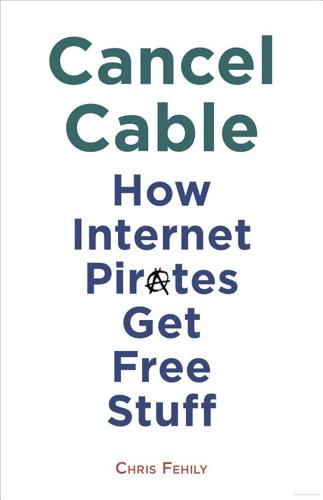
Cancel Cable: How Internet Pirates Get Free Stuff
by
Chris Fehily
Published 1 Feb 2011
The more popular the download, the more it costs the server in bandwidth charges. If the client or server has a problem mid-download (a power outage, lost connection, or system crash), then you’re stuck with an incomplete file and typically must restart the download — possibly a big download — from scratch. Peer-to-Peer Networks Adequate mirroring (use of cloned servers) alleviates some of the problems of client-server networks, but BitTorrent solves them outright by using a peer-to-peer (P2P) file-sharing network. Unlike a server-based network, where most of the resources lie with a few central servers, a P2P network has only peers, which are ordinary computers (like yours) that all act as equal points on the network.
…
Drag the program’s icon to the Applications folder or to your home folder, or follow the instructions in the installer window. In all cases, generate keys, apply cracks, and install and launch the program as the torrent instructs. Table of Contents Title Page Copyright Dedication 1: The Terrain Lawyers Victims Q&A Benefits About This Book 2: Understanding BitTorrent Client-Server Networks Peer-to-Peer Networks What You'll Need BitTorrent, Step by Step 3: File Types About File Types Hidden Extensions Unregistered Extensions Windows Tasks OS X Tasks 4: Malware About Malware Malicious Links Infected Files Vigilance Prevention Antimalware 5: Archives About Archives Types of Archives Working with Archives 6: Installing a BitTorrent Client About BitTorrent Clients Installing a Client Getting Help Limiting Upload Rates Other Settings 7: BitTorrent Search Engines Finding BitTorrent Search Engines Features to Look For Metasearch Sites Private Sites Google and Brethren Links to Torrents 8: Finding Torrents Search Tips Spotting Fakes 9: Customizing Your Client User Interface Main Window Torrent Jobs List 10: Downloading Torrents Finding a Torrent Reading a Torrent's Description and User Comments Downloading a .torrent File Selecting Content Files to Download Setting File Priorities Queueing a Torrent Starting a Torrent Waiting for the Download to Complete Removing a Torrent 11: Movies and TV Shows Movie Torrents Sources TV Torrents Video Formats Media Players Dubbing and Subtitles Other Videos 12: Pictures Image Formats 13: Music and Spoken Word Audio Formats 14: Books, Documents, and Fonts PDF Files Ebook Formats Other Document Formats Fonts 15: Applications and Games Archives Disk Images Executables Mounting Disk Images Burning Disks Keygens, Cracks, and Jailbreaks Installing Programs Table of Contents Title Page Copyright Dedication 1: The Terrain Lawyers Victims Q&A Benefits About This Book 2: Understanding BitTorrent Client-Server Networks Peer-to-Peer Networks What You'll Need BitTorrent, Step by Step 3: File Types About File Types Hidden Extensions Unregistered Extensions Windows Tasks OS X Tasks 4: Malware About Malware Malicious Links Infected Files Vigilance Prevention Antimalware 5: Archives About Archives Types of Archives Working with Archives 6: Installing a BitTorrent Client About BitTorrent Clients Installing a Client Getting Help Limiting Upload Rates Other Settings 7: BitTorrent Search Engines Finding BitTorrent Search Engines Features to Look For Metasearch Sites Private Sites Google and Brethren Links to Torrents 8: Finding Torrents Search Tips Spotting Fakes 9: Customizing Your Client User Interface Main Window Torrent Jobs List 10: Downloading Torrents Finding a Torrent Reading a Torrent's Description and User Comments Downloading a .torrent File Selecting Content Files to Download Setting File Priorities Queueing a Torrent Starting a Torrent Waiting for the Download to Complete Removing a Torrent 11: Movies and TV Shows Movie Torrents Sources TV Torrents Video Formats Media Players Dubbing and Subtitles Other Videos 12: Pictures Image Formats 13: Music and Spoken Word Audio Formats 14: Books, Documents, and Fonts PDF Files Ebook Formats Other Document Formats Fonts 15: Applications and Games Archives Disk Images Executables Mounting Disk Images Burning Disks Keygens, Cracks, and Jailbreaks Installing Programs
…
Table of Contents Title Page Copyright Dedication 1: The Terrain Lawyers Victims Q&A Benefits About This Book 2: Understanding BitTorrent Client-Server Networks Peer-to-Peer Networks What You'll Need BitTorrent, Step by Step 3: File Types About File Types Hidden Extensions Unregistered Extensions Windows Tasks OS X Tasks 4: Malware About Malware Malicious Links Infected Files Vigilance Prevention Antimalware 5: Archives About Archives Types of Archives Working with Archives 6: Installing a BitTorrent Client About BitTorrent Clients Installing a Client Getting Help Limiting Upload Rates Other Settings 7: BitTorrent Search Engines Finding BitTorrent Search Engines Features to Look For Metasearch Sites Private Sites Google and Brethren Links to Torrents 8: Finding Torrents Search Tips Spotting Fakes 9: Customizing Your Client User Interface Main Window Torrent Jobs List 10: Downloading Torrents Finding a Torrent Reading a Torrent's Description and User Comments Downloading a .torrent File Selecting Content Files to Download Setting File Priorities Queueing a Torrent Starting a Torrent Waiting for the Download to Complete Removing a Torrent 11: Movies and TV Shows Movie Torrents Sources TV Torrents Video Formats Media Players Dubbing and Subtitles Other Videos 12: Pictures Image Formats 13: Music and Spoken Word Audio Formats 14: Books, Documents, and Fonts PDF Files Ebook Formats Other Document Formats Fonts 15: Applications and Games Archives Disk Images Executables Mounting Disk Images Burning Disks Keygens, Cracks, and Jailbreaks Installing Programs Table of Contents Title Page Copyright Dedication 1: The Terrain Lawyers Victims Q&A Benefits About This Book 2: Understanding BitTorrent Client-Server Networks Peer-to-Peer Networks What You'll Need BitTorrent, Step by Step 3: File Types About File Types Hidden Extensions Unregistered Extensions Windows Tasks OS X Tasks 4: Malware About Malware Malicious Links Infected Files Vigilance Prevention Antimalware 5: Archives About Archives Types of Archives Working with Archives 6: Installing a BitTorrent Client About BitTorrent Clients Installing a Client Getting Help Limiting Upload Rates Other Settings 7: BitTorrent Search Engines Finding BitTorrent Search Engines Features to Look For Metasearch Sites Private Sites Google and Brethren Links to Torrents 8: Finding Torrents Search Tips Spotting Fakes 9: Customizing Your Client User Interface Main Window Torrent Jobs List 10: Downloading Torrents Finding a Torrent Reading a Torrent's Description and User Comments Downloading a .torrent File Selecting Content Files to Download Setting File Priorities Queueing a Torrent Starting a Torrent Waiting for the Download to Complete Removing a Torrent 11: Movies and TV Shows Movie Torrents Sources TV Torrents Video Formats Media Players Dubbing and Subtitles Other Videos 12: Pictures Image Formats 13: Music and Spoken Word Audio Formats 14: Books, Documents, and Fonts PDF Files Ebook Formats Other Document Formats Fonts 15: Applications and Games Archives Disk Images Executables Mounting Disk Images Burning Disks Keygens, Cracks, and Jailbreaks Installing Programs
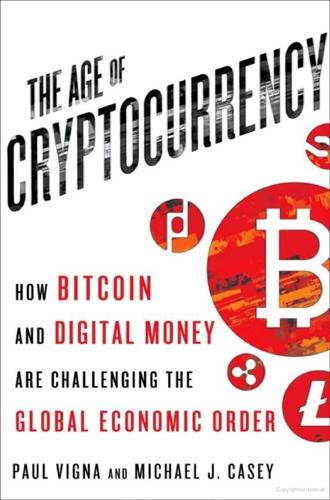
The Age of Cryptocurrency: How Bitcoin and Digital Money Are Challenging the Global Economic Order
by
Paul Vigna
and
Michael J. Casey
Published 27 Jan 2015
If a hallmark of a currency is utility, at this early point bitcoin had absolutely none. He had to get others to join. So, six days after the Genesis Block, Nakamoto went back to the same cryptography mailing list and told its readers that the program was ready: “Announcing the first release of bitcoin, a new electronic cash system that uses a peer-to-peer network to prevent double-spending.” And then the sales pitch: “It’s completely decentralized with no server or central authority.” The people on that list, who’d heard claims like this before, had no evidence yet that Nakamoto had overcome the challenge that had felled his predecessors: preventing fraudulent transactions—the so-called double-spending problem—when no central authority is charged with authenticating transactions.
…
Other investigators have gone off on interesting but equally fruitless tangents. Writing for The New Yorker, Joshua Davis fixated on some of the British spellings in Nakamoto’s writings and headed to the British Isles to find their author. He zeroed in on Michael Clear, a Dublin-based computer-science student who’d worked for Allied Irish Banks on peer-to-peer technology and who responded to Davis’s inquiries with the enticing line “I’m not Satoshi, but even if I was I wouldn’t tell you.” Davis’s work was inconclusive, but Clear’s comment, which he later said was intended as a harmless joke, meant the Irishman was inundated with e-mails. He has since vehemently denied creating bitcoin and has pleaded with people to leave him alone.
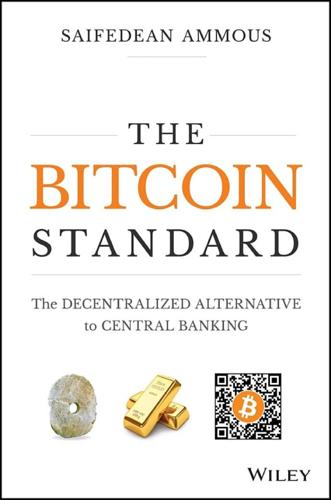
The Bitcoin Standard: The Decentralized Alternative to Central Banking
by
Saifedean Ammous
Published 23 Mar 2018
All network members can verify the validity of the transaction by verifying that the transactions sending the money came from the owner of the right private key. In Bitcoin, the only form of ownership that exists is through the ownership of the private keys. Peer‐to‐peer network is a network structure in which all members have equal privileges and obligations toward one another. There are no central coordinators who can change the rules of the network. Node operators that disagree with how the network functions cannot impose their opinions on other members of the network or override their privileges. The most well‐known example of a peer‐to‐peer network is BitTorrent, a protocol for sharing files online. Whereas in centralized networks members download files from a central server that hosts them, in BitTorrent, users download files from each other directly, divided into small pieces.
…
In other words, Bitcoin would bring the desirable features of physical cash (lack of intermediaries, finality of transactions) to the digital realm and combine them with an ironclad monetary policy that cannot be manipulated to produce unexpected inflation to benefit an outside party at the expense of holders. Nakamoto succeeded in achieving this through the utilization of a few important though not widely understood technologies: a distributed peer‐to‐peer network with no single point of failure, hashing, digital signatures, and proof‐of‐work.2 Nakamoto removed the need for trust in a third party by building Bitcoin on a foundation of very thorough and ironclad proof and verification. It is fair to say that the central operational feature of Bitcoin is verification, and only because of that can Bitcoin remove the need for trust completely.3 Every transaction has to be recorded by every member of the network so that they all share one common ledger of balances and transactions.
…
ASIC chips are now specialized only in verifying transactions to receive reward coins (which is why they are commonly referred to as miners). Node operators can now generate unlimited wallets, allowing businesses to offer convenient wallets for users who can send and receive bitcoins without operating a node or spending processing power on verifying transactions. This has moved Bitcoin away from being a pure peer‐to‐peer network between identical nodes, but the main functional importance of the decentralized and distributed nature of the network has arguably remained intact, as a large number of nodes still exists and no single party is relied on to operate the network. Further, specialized mining has allowed for the processing power backing the network to grow to the astoundingly large size it has reached.
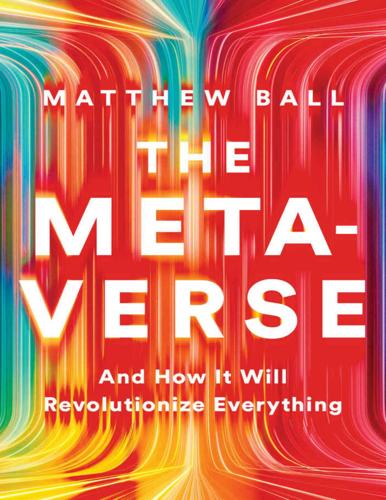
The Metaverse: And How It Will Revolutionize Everything
by
Matthew Ball
Published 18 Jul 2022
As anyone with a credit card knows, they are typically the least secure way to make a payment, and often suffer the most fraud. An estimated $6 trillion was spent via credit card in the US in 2021, with an average of $90 across more than 50 billion transactions. Finally, there are the digital payment networks (also known as peer-to-peer networks) such as PayPal and Venmo. Although users do not need bank accounts to open a PayPal or Venmo account, these accounts must be funded, with the money coming from an ACH payment (a bank account), credit card payment, or transfer from another user. Once funded, these platforms then serve as a centralized bank used by all accounts; transfers between users are effectively just reassignments of money held by the platform itself.
…
As of March 5, 2022, Helium’s network spanned more than 625,000 hot spots, up from fewer than 25,000 roughly a year earlier, distributed across nearly 50,000 cities in 165 countries.7 The total value of Helium’s tokens exceeds $5 billion.8 Notably, the company was founded in 2013, but struggled to gain adoption until it pivoted from a traditional (i.e., unpaid) peer-to-peer model to one which offered contributors direct compensation via cryptocurrency. The long-term viability and potential of Helium remains uncertain; most internet service providers (ISPs) prohibit their customers from rebroadcasting their internet connection, and while the ISPs typically have ignored such service violations as long as the connection was not resold and total data usage was low, there is no guarantee that the ISPs will continue to ignore such violations by users of Helium or any analogous system.
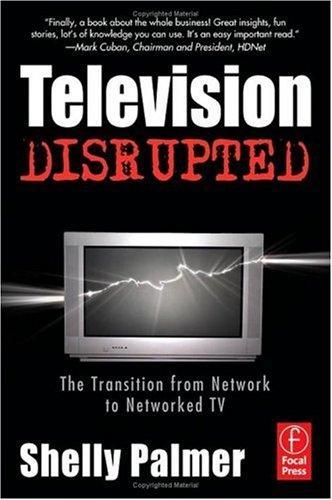
Television disrupted: the transition from network to networked TV
by
Shelly Palmer
Published 14 Apr 2006
And, of utmost importance to this argument, most people cannot differentiate between the most expensive and the least expensive work product. Conversely, it takes an army of talented creative people to manufacture a professional television show or motion picture: writers, directors, producers, camera operators, Copyright © 2006, Shelly Palmer. All rights reserved. 5-Television.Chap Five v3.qxd 3/20/06 7:22 AM Page 71 Peer-to-Peer Networks 71 actors, art directors, wardrobe wranglers, set designers, set builders, script supervisors, hair, make-up, editors, graphic artists, composers, musicians, post-production supervisors… the list goes on and on. You might have all of the skills individually, but you probably don’t. And, even though you can make a video or a movie with a home video camera and the post-production suite of programs on your laptop, absolutely everyone who watches it will know it was “made with loving hands at home.”
…
There are already movies legally available for 99-cent downloads that are guaranteed to be virus-free and exactly as advertised. Again, respect for time, value and convenience is a good weapon against piracy. Is this to say that video and movies are not going to be pirated? Don’t be silly. People are going to trade them like baseball cards — but not all people, not every movie and not all of the time. Peer-to-Peer Networks It was easy to shut down Napster. All you had to do was disconnect the index server from the network and it was over. That’s because Napster was based upon a client-server network architecture where there was a central server with client “nodes” attached to it over the Internet, as in Figure 5.2.
…
As each peer is added to the network, it brings along computing power, bandwidth and storage that it can share with everyone, which increases the total capacity of the system as it expands. It is the distributed nature of P2P networks that make them powerful. Should a Copyright © 2006, Shelly Palmer. All rights reserved. 5-Television.Chap Five v3.qxd 3/20/06 7:22 AM Page 72 72 C H A P T E R 5 Emerging Networks FIGURE 5.2 Client-Server Network: FIGURE 5.3 Peer-to-peer networks do This type of network can be easily shut not have central file servers; since each down because each network node is con- node is connected to more than one other nected to a central server. node, they are very hard to shut down. single node fail, peers can find replicas of the data on multiple other peers.

Americana: A 400-Year History of American Capitalism
by
Bhu Srinivasan
Published 25 Sep 2017
As the record labels refused to sell music digitally, the technology for sharing music surpassed the music industry’s ability to invent a business model to keep up. This piracy was an early look into the next iteration of Internet technologies beyond simple Web sites. Peer-to-peer networks allowed a single individual’s computer to act as a server. Rather than have the entire library of millions of songs on a set of centralized servers controlled by one company, which would have made it easy for the courts and law enforcement to shut music sharing down, peer-to-peer technology now meant anyone could upload or download a song directly to or from another individual. With millions of people uploading songs, the entire recording industry’s catalog was dispersed across millions of computers for downloading by millions of others.
…
See films muckraker, 272 Multimixer, 398, 399 Munich Agreement, 351 Murdoch, Rupert, 441 Murrow, Edward R., 383, 389–90 music piracy, 481–82 mutual fund companies, 419 Myers, Bill and Daisy, 379 Namath, Joe, 394 Napoleon Bonaparte, 55, 104–5 Napster, 482, 483 NASA, 417 National Broadcasting Company (NBC), 306, 382, 394 National Cash Register (NCR), 414 National Football League (NFL), 391–93, 394 nationalism, 253–54 Mexican-American War and, 105–6 National Prohibition Act (Volstead Act), 309 Native Americans beaver fur trade and, 14–15, 17 buffalo and, 177 contact and trade with Pilgrims, 13–15 Jamestown massacre and, 18 Plains Indians, 175–77 tobacco and, 18 transcontinental railroad and, 176–77 natural selection, 174–75 NEC, 434 Nelson, Ted, 467 Nelson, Walter Henry, 404 Netherlands New York surrender to British, 24–25 slave trade and, 22 Netscape, 469, 471–75, 475, 481 networking, 416–17 Neutrality Act, 353 New Balance, 454 New Jersey, 25 New Netherlands, 24–25 New Orleans, Louisiana, 79 New World Dutch in, 24–25 English economic conditions and, 20–21 financing of ventures to, 3–17 indentured servitude and, 21–23 slavery arrives in, 20 New York Dutch surrender of, 24–25 Erie Canal, building and financing of, 74–78 New York City, 194–95 Draft Riots in, 148 economic growth of, 79 Harlem renaissance and, 313–14 New York Morning Journal, 232–33, 240–41 New York Times, 238–39 New York World, 226–29, 242 NeXT, 479–80 Niemann, Albert, 263 Nike, 453–59 and Jackson, Bo, 456–57 and Jordan, Michael, 454–56, 460–62 9/11 terrorist attacks, 481 Nirvana, 454 Nissan, 489 Nixon, Richard, 389, 390 Northern Securities Company, 251, 255 North Korea, 484 North River Steamboat (steamboat), 62–63 Noyce, Bob, 423 nuclear bomb, 365 N.W.A., 452 O’Banion, Dion, 316, 317 Occupy Wall Street, 487, 491 Ochs, Adolph, 237–39 Ogden, Aaron, 64, 65, 66 Ohio, 78, 118–19 Ohio and Erie Canal, 78 Ohio Company, 30–31 oil, 149–62, 490 crisis of 1973, 438 discovery in Pennsylvania of, 149–50 Drake’s technique for drilling for, 151 federal highway policy and, 406 pipeline companies and, 157 Rockefeller and, 154–56, 158–60 storage tanks for, 151–52 transportation of, 152–53, 156–58 Oldfield, Barney, 282 Olds, Ransom Eli, 279–80 Olds Motor Vehicle Company, 279–80, 286 Onitsuka, 457–58 Oregon country, 105 Organization Man, The (Whyte), 374, 428 Origin of Species (Darwin), 174 Other People’s Money (film), 444–45 Ottoman Empire, 296 Pabst, 179–80, 183, 184, 311 Pacific Railway Act, 147–48 Packard, 300 paddle wheel, 62 Paley, William, 306, 382–83 Panama Canal, 254 panics of 1837, 85, 87 of 1873, 169–71 of 1893, 226, 230–31 gold and, 229–30 papers, 226–39 Hearst and, 232–33, 239, 240–41 Ochs and, 237–39 patent medicine advertising and, 265–66 Pulitzer and, 226–29, 239, 241 Paramount, 341 Pasteur, Louis, 179 pasteurization, 179 patent medicines, 208–9, 262–66 patents, 51, 96, 189–90 Pearl Harbor bombing, 363 Pearl Jam, 454 peer-to-peer networks, 482 Pemberton, John, 263–65 Penn, William, 25, 32 Pennsylvania, 25, 32 Pennsylvania Gazette, 30 Pennsylvania Railroad, 140, 141, 164–65, 166 Pennsylvania Rock Oil Company (Seneca Oil Company), 150–51 Pennsylvania Transportation Company, 157 Perot, Ross, 418, 419, 420, 464 philanthropy, 219–20, 249 Philip Morris, 383 Philippines, 246, 247 Pilgrims/Plymouth Colony, 3–6, 8–17 buy-out of shares of Merchant Adventurers, 16–17 collective farming and, 15–16 contact and trade with Native Americans, 13–15 financing of Mayflower voyage, 5–6, 10–12, 425 in Holland, 3–4 loss of Fortune’s cargo, effects of, 15 mortality rates, of first winter, 13 patent to settle in New World granted to, 5 Pinkerton, Robert, 221 Pixar, 480, 482 Plain Facts for Old and Young (Kellogg), 260 Plains Indians, 175–77 Of Plymouth Plantation (Bradford), 12–13 Polk, James, 104, 106, 108 Pong (computer game), 427, 430–31 Post, Charles William, 259, 261–62 potato famine, 89 Potomac Canal Company, 71–72 Presidential elections of 1860, 137 of 1896, 235–37, 239, 240–41 of 1900, 246–47 of 1904, 265 of 1912, 296 of 1928, 321 of 1932, 330–31 of 1936, 335 of 1940, 359–60 of 1952, 389 of 1980, 433 of 1992, 463–64 Pretty Woman (film), 449 price fixing, 241 private equity (leverage buyouts), 448–49 privateering syndicates, 7–8 Prodigy, 465 Progressive Networks, 471 Progressives, 209 Prohibition, 307–19 bootlegging and, 315–19 cultural activity during, 313–15 Eighteenth Amendment and Volstead Act, passage of, 309 exemptions, 309–10, 312 grape growers and, 310–11 politics leading to, 307–9 property, slaves as, 44–45, 117–18 Prudential Insurance, 331 public/private partnerships, 81–82, 86 Puerto Rico, 246 Pulitzer, Joseph, 148, 226–29, 239, 241 Pullman Palace Car Company, 231 Pure Food and Drug Act, 208–9, 274–75 Quantum Computer Services, 465 radio, 292–96, 301–6 audio transmission and, 302–6 government regulation of, 295–96 Titanic sinking and, 293–94 World War I and, 301 Radio Corporation of America (RCA), 302–4, 305–6, 381 Radio Dealer, 304–5 railroads, 80–91 Civil War and, 140–42 coal and, 80–81 commercial trucking supplanting, 402 corporate entities and, 83–84, 85–86 eminent domain and, 84–85 first tracks and locomotives in U.S., 81–82 immigration and, 89–90 oil transportation and, 157–58 Plains Indians and, 176–77 slow growth of, in 1830s, 83, 85 stock financing of, 83–84 telegraph and, 100–101 transcontinental, 147–48 Vanderbilt and, 87–89 World War I and, 300 Rand, Ayn, 388 Randolph, William, 111 RCA, 438 Reagan, Ronald, 388–89, 433 acting and television career of, 385–87, 390 childhood and education of, 384–85 Remington, 181, 182 repeater, 189 Republican Party, 121, 183, 224 residential construction Great Depression and, 328–29 Levitt’s mass-manufacturing techniques for, 369, 370–72 returning World War II servicemen and, 368–69 retail, 198–210 catalogs and, 205–9 consumer protection laws, need for, 210 country stores, 205 department stores, 201–4 discount stores, 402–4 economies of scale in, 202–3 general stores, 201, 202 mom-and-pop shops, 404 specialty, 201, 202 U.S.

Americana
by
Bhu Srinivasan
As the record labels refused to sell music digitally, the technology for sharing music surpassed the music industry’s ability to invent a business model to keep up. This piracy was an early look into the next iteration of Internet technologies beyond simple Web sites. Peer-to-peer networks allowed a single individual’s computer to act as a server. Rather than have the entire library of millions of songs on a set of centralized servers controlled by one company, which would have made it easy for the courts and law enforcement to shut music sharing down, peer-to-peer technology now meant anyone could upload or download a song directly to or from another individual. With millions of people uploading songs, the entire recording industry’s catalog was dispersed across millions of computers for downloading by millions of others.
…
See films muckraker, 272 Multimixer, 398, 399 Munich Agreement, 351 Murdoch, Rupert, 441 Murrow, Edward R., 383, 389–90 music piracy, 481–82 mutual fund companies, 419 Myers, Bill and Daisy, 379 Namath, Joe, 394 Napoleon Bonaparte, 55, 104–5 Napster, 482, 483 NASA, 417 National Broadcasting Company (NBC), 306, 382, 394 National Cash Register (NCR), 414 National Football League (NFL), 391–93, 394 nationalism, 253–54 Mexican-American War and, 105–6 National Prohibition Act (Volstead Act), 309 Native Americans beaver fur trade and, 14–15, 17 buffalo and, 177 contact and trade with Pilgrims, 13–15 Jamestown massacre and, 18 Plains Indians, 175–77 tobacco and, 18 transcontinental railroad and, 176–77 natural selection, 174–75 NEC, 434 Nelson, Ted, 467 Nelson, Walter Henry, 404 Netherlands New York surrender to British, 24–25 slave trade and, 22 Netscape, 469, 471–75, 475, 481 networking, 416–17 Neutrality Act, 353 New Balance, 454 New Jersey, 25 New Netherlands, 24–25 New Orleans, Louisiana, 79 New World Dutch in, 24–25 English economic conditions and, 20–21 financing of ventures to, 3–17 indentured servitude and, 21–23 slavery arrives in, 20 New York Dutch surrender of, 24–25 Erie Canal, building and financing of, 74–78 New York City, 194–95 Draft Riots in, 148 economic growth of, 79 Harlem renaissance and, 313–14 New York Morning Journal, 232–33, 240–41 New York Times, 238–39 New York World, 226–29, 242 NeXT, 479–80 Niemann, Albert, 263 Nike, 453–59 and Jackson, Bo, 456–57 and Jordan, Michael, 454–56, 460–62 9/11 terrorist attacks, 481 Nirvana, 454 Nissan, 489 Nixon, Richard, 389, 390 Northern Securities Company, 251, 255 North Korea, 484 North River Steamboat (steamboat), 62–63 Noyce, Bob, 423 nuclear bomb, 365 N.W.A., 452 O’Banion, Dion, 316, 317 Occupy Wall Street, 487, 491 Ochs, Adolph, 237–39 Ogden, Aaron, 64, 65, 66 Ohio, 78, 118–19 Ohio and Erie Canal, 78 Ohio Company, 30–31 oil, 149–62, 490 crisis of 1973, 438 discovery in Pennsylvania of, 149–50 Drake’s technique for drilling for, 151 federal highway policy and, 406 pipeline companies and, 157 Rockefeller and, 154–56, 158–60 storage tanks for, 151–52 transportation of, 152–53, 156–58 Oldfield, Barney, 282 Olds, Ransom Eli, 279–80 Olds Motor Vehicle Company, 279–80, 286 Onitsuka, 457–58 Oregon country, 105 Organization Man, The (Whyte), 374, 428 Origin of Species (Darwin), 174 Other People’s Money (film), 444–45 Ottoman Empire, 296 Pabst, 179–80, 183, 184, 311 Pacific Railway Act, 147–48 Packard, 300 paddle wheel, 62 Paley, William, 306, 382–83 Panama Canal, 254 panics of 1837, 85, 87 of 1873, 169–71 of 1893, 226, 230–31 gold and, 229–30 papers, 226–39 Hearst and, 232–33, 239, 240–41 Ochs and, 237–39 patent medicine advertising and, 265–66 Pulitzer and, 226–29, 239, 241 Paramount, 341 Pasteur, Louis, 179 pasteurization, 179 patent medicines, 208–9, 262–66 patents, 51, 96, 189–90 Pearl Harbor bombing, 363 Pearl Jam, 454 peer-to-peer networks, 482 Pemberton, John, 263–65 Penn, William, 25, 32 Pennsylvania, 25, 32 Pennsylvania Gazette, 30 Pennsylvania Railroad, 140, 141, 164–65, 166 Pennsylvania Rock Oil Company (Seneca Oil Company), 150–51 Pennsylvania Transportation Company, 157 Perot, Ross, 418, 419, 420, 464 philanthropy, 219–20, 249 Philip Morris, 383 Philippines, 246, 247 Pilgrims/Plymouth Colony, 3–6, 8–17 buy-out of shares of Merchant Adventurers, 16–17 collective farming and, 15–16 contact and trade with Native Americans, 13–15 financing of Mayflower voyage, 5–6, 10–12, 425 in Holland, 3–4 loss of Fortune’s cargo, effects of, 15 mortality rates, of first winter, 13 patent to settle in New World granted to, 5 Pinkerton, Robert, 221 Pixar, 480, 482 Plain Facts for Old and Young (Kellogg), 260 Plains Indians, 175–77 Of Plymouth Plantation (Bradford), 12–13 Polk, James, 104, 106, 108 Pong (computer game), 427, 430–31 Post, Charles William, 259, 261–62 potato famine, 89 Potomac Canal Company, 71–72 Presidential elections of 1860, 137 of 1896, 235–37, 239, 240–41 of 1900, 246–47 of 1904, 265 of 1912, 296 of 1928, 321 of 1932, 330–31 of 1936, 335 of 1940, 359–60 of 1952, 389 of 1980, 433 of 1992, 463–64 Pretty Woman (film), 449 price fixing, 241 private equity (leverage buyouts), 448–49 privateering syndicates, 7–8 Prodigy, 465 Progressive Networks, 471 Progressives, 209 Prohibition, 307–19 bootlegging and, 315–19 cultural activity during, 313–15 Eighteenth Amendment and Volstead Act, passage of, 309 exemptions, 309–10, 312 grape growers and, 310–11 politics leading to, 307–9 property, slaves as, 44–45, 117–18 Prudential Insurance, 331 public/private partnerships, 81–82, 86 Puerto Rico, 246 Pulitzer, Joseph, 148, 226–29, 239, 241 Pullman Palace Car Company, 231 Pure Food and Drug Act, 208–9, 274–75 Quantum Computer Services, 465 radio, 292–96, 301–6 audio transmission and, 302–6 government regulation of, 295–96 Titanic sinking and, 293–94 World War I and, 301 Radio Corporation of America (RCA), 302–4, 305–6, 381 Radio Dealer, 304–5 railroads, 80–91 Civil War and, 140–42 coal and, 80–81 commercial trucking supplanting, 402 corporate entities and, 83–84, 85–86 eminent domain and, 84–85 first tracks and locomotives in U.S., 81–82 immigration and, 89–90 oil transportation and, 157–58 Plains Indians and, 176–77 slow growth of, in 1830s, 83, 85 stock financing of, 83–84 telegraph and, 100–101 transcontinental, 147–48 Vanderbilt and, 87–89 World War I and, 300 Rand, Ayn, 388 Randolph, William, 111 RCA, 438 Reagan, Ronald, 388–89, 433 acting and television career of, 385–87, 390 childhood and education of, 384–85 Remington, 181, 182 repeater, 189 Republican Party, 121, 183, 224 residential construction Great Depression and, 328–29 Levitt’s mass-manufacturing techniques for, 369, 370–72 returning World War II servicemen and, 368–69 retail, 198–210 catalogs and, 205–9 consumer protection laws, need for, 210 country stores, 205 department stores, 201–4 discount stores, 402–4 economies of scale in, 202–3 general stores, 201, 202 mom-and-pop shops, 404 specialty, 201, 202 U.S.

The Smartphone Society
by
Nicole Aschoff
Silicon Valley, we’re told, is building an architecture for inclusive growth. Its platforms promise to not only enhance connection but to bring a new world of interpersonal trust and innovation.16 Each of us can participate easily, seamlessly, through our phones. By creating online profiles, sharing, and connecting with others in new decentralized, peer-to-peer networks the individual can shine and thrive, gaining not only attention and followers but also power and potentially money. These networks of empowered individuals are creating something from nothing—new consumption experiences, new economic activity. We are growing the pie, making new space for individuals who were left out in neoliberalism.
…
Smartphones, which are “1 million times cheaper, 1000 times more powerful, and about 100,000 times smaller than one computer in MIT in 1965,” seem to exemplify this arrival.18 The explosive growth in connectivity at all scales over the past decade, in combination with advances in data collection and storage, computing power, and machine learning, have convinced many scholars that we’re on the precipice of something fundamentally different and new. Two MIT professors, Eric Brynjolfsson and Andrew McAfee, say we’ve reached the “second machine age.” Brynjolfsson and McAfee liken the impact of computers, big data, peer-to-peer networks, and other digital advances in our technological capabilities to the monumental societal impact of the steam engine and electricity: However, unlike the steam engine or electricity, second machine age technologies continue to improve at a remarkably rapid exponential pace, replicating their power with digital perfection and creating even more opportunities for combinatorial innovation. . . .
…
Perhaps following in the footsteps of Henry Ford’s model city, Fordlandia, built in the Brazilian state of Pará, Microsoft purchased twenty-five thousand acres in Arizona to build the City of the Future, while Page has invested in research on the feasibility of privately owned city-states.26 More recently Jeffrey Berns, a cryptocurrency millionaire, bought a chunk of land in Nevada bigger than Reno to build a Utopian blockchain community. Berns believes that blockchains—decentralized, distributed, public digital ledgers facilitated by autonomous, peer-to-peer networks—will give people rather than companies or governments power: “I don’t know why,” says Berns. I just—something inside me tells me this is the answer, that if we can get enough people to trust the blockchain, we can begin to change all the systems we operate by.”27 Blockchain Utopias and the Singularity are pretty far afield from phone apps and social networks, but the expansive simplicity of its vision is what makes the emergent Silicon Valley spirit of capitalism so appealing.

Without Copyrights: Piracy, Publishing, and the Public Domain (Modernist Literature and Culture)
by
Robert Spoo
Published 1 Aug 2013
Applied, as it often is today, to unauthorized file sharing by countless anonymous or pseudonymous users in decentralized peer-to-peer networks,17 the phrase conjures up conspiratorial intent to break the law—a gigantic, orchestrated music heist—when in fact the very nature of decentralized file sharing scatters concerted intent and mens rea over the vast reaches of the World Wide Web. This is why the music and movie industries have focused much of their litigation efforts on the purveyors of peer-to-peer technologies and services: Napster, Aimster, Grokster, Kazaa, LimeWire, BitTorrent, and, of course, The Pirate Bay.
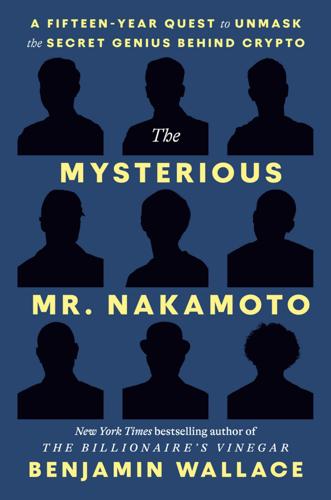
The Mysterious Mr. Nakamoto: A Fifteen-Year Quest to Unmask the Secret Genius Behind Crypto
by
Benjamin Wallace
Published 18 Mar 2025
“I don’t know his real name,” Gavin said. “I’m hoping one day he decides not to be anonymous anymore, and I’ll meet him, but I expect not.” Gavin and the other developers agreed on a few things. The second place Nakamoto had announced his white paper was the website of the P2P Foundation, an idealistic nonprofit dedicated to peer-to-peer networks of all kinds. In his profile on the site, Nakamoto gave his residence as Japan. But no one really believed he was Japanese. His English was flawless, with the supple confidence of a native speaker. He sounded British, or at least from a Commonwealth country. The Genesis Block had had embedded within it a headline from the London Times, and in both the Bitcoin source code and his posts to the BitcoinTalk forum, Nakamoto favored Anglo spellings like colour and optimise.
…
Wei Wei Dai was an amateur cryptographer who’d created Crypto++, a library of software tools that Bitcoin used, and Dai still maintained it, but the main reason some people thought he might be Nakamoto was a concept Dai had written about in 1998. B-money, as he called it, combined several ideas that would later show up in Bitcoin: these included a peer-to-peer network that collectively maintained a common record of all transactions; a money-minting mechanism that depended on solving computational puzzles; and the use of public-key cryptography to shield users’ identities. And Dai’s b-money, like Back’s Hashcash, was among the handful of precursors Nakamoto credited by name at the end of the Bitcoin white paper.
…
There, he tracked down a long-haired, twenty-three-year-old Irish attendee named Michael Clear. Clear ticked several Nakamoto boxes: he was a cryptography grad student, a user of British spelling, a guarded personality (his Trinity College profile page, unlike those of his peers, displayed no photos or phone numbers), a student of peer-to-peer networks, and a brilliant mind (as an undergraduate, he’d been top of his class in computer science) who’d worked on currency-trading software. On the steps in front of the building where lectures were held, Davis was able to elicit a salient fact—Clear knew how to code in C++, the language Bitcoin was written in—but when Davis asked directly whether he was Nakamoto, Clear laughed and didn’t answer, instead offering to “review” Bitcoin’s design for him.

Content: Selected Essays on Technology, Creativity, Copyright, and the Future of the Future
by
Cory Doctorow
Published 15 Sep 2008
Seventy years later, Napster showed us that, as William Gibson noted, "We may be at the end of the brief period during which it is possible to charge for recorded music." Surely we're at the end of the period where it's possible to exclude those who don't wish to pay. Every song released can be downloaded gratis from a peer-to-peer network (and will shortly get easier to download, as hard-drive price/performance curves take us to a place where all the music ever recorded will fit on a disposable pocket-drive that you can just walk over to a friend's place and copy). But have no fear: the Internet makes it possible for recording artists to reach a wider audience than ever dreamt of before.
…
Having to compete with free copies handed from user to user makes life harder — hasn't it always? But it is most assuredly possible. Look at Apple's wildly popular iTunes Music Store, which has sold over one billion tracks since 2003. Every song on iTunes is available as a free download from user-to-user, peer-to-peer networks like Kazaa. Indeed, the P2P monitoring company Big Champagne reports that the average time-lapse between a iTunes-exclusive song being offered by Apple and that same song being offered on P2P networks is 180 seconds. Every iTunes customer could readily acquire every iTunes song for free, using the fastest-adopted technology in history.
…
[fn: My lifestyle is as gypsy and fancy-free as the characters in H2G2, and as a result my copies of the Adams books are thousands of miles away in storages in other countries, and this essay was penned on public transit and cheap hotel rooms in Chile, Boston, London, Geneva, Brussels, Bergen, Geneva (again), Toronto, Edinburgh, and Helsinki. Luckily, I was able to download a dodgy, re-keyed version of the Adams books from a peer-to-peer network, which network I accessed via an open wireless network on a random street-corner in an anonymous city, a fact that I note here as testimony to the power of the Internet to do what the Guide does for Ford and Arthur: put all the information I need at my fingertips, wherever I am. However, these texts are a little on the dodgy side, as noted, so you might want to confirm these quotes before, say, uttering them before an Adams truefan.]
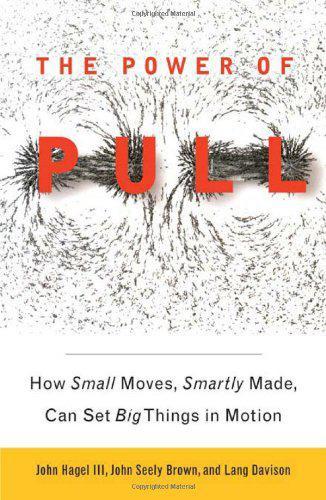
The Power of Pull: How Small Moves, Smartly Made, Can Set Big Things in Motion
by
John Hagel Iii
and
John Seely Brown
Published 12 Apr 2010
The team-and-leader dynamic will be familiar to fans of the Tour de France, where the team keeps its leader out of the wind for the first 100 miles of a mountain stage only to fall away as the leader rides the final 10 miles, up the steepest grade, battling mano a mano with the leaders from other teams. But teams can only get so big. One way to address this limitation is to design a space where large numbers of teams can operate in parallel. Creation spaces go one step further by introducing the opportunity to participate in peer-to-peer networks that cut across teams, leveraging their individual experiences and providing access to a much more diverse body of expertise than would otherwise exist. These learning networks organize around shared resources such as discussion boards, video repositories, and archives of previous contributions.
…
In some cases, they may also benefit from physical gatherings, such as conferences or competitions. Although much of the interaction at this level involves the transfer of knowledge, new knowledge is often generated as participants hold sustained discussions about their performance challenges. New knowledge also emerges as peer-to-peer networks like these apply innovations and new knowledge in diverse environments where they can be tested and improved. Environments Creation spaces need careful planning and design at their inception, but the organizers’ initial design often evolves rapidly thereafter as participants begin to make their own contributions.
…
To work successfully, the creation space must be designed to work at three levels, with the second level building on the first and the third building on the first two. First, the creation space must be designed to foster the formation of teams and interactions within each of the teams. Second, it must be designed to encourage the formation of robust and diverse peer-to-peer networks that expand knowledge-sharing and knowledge-creation activities across teams. Third, it must be designed to reach beyond the creation space and engage a broader set of participants in the products of the creation space, as when nightclub DJs play music created online at ccMixter, or when employees of other corporations participate in SAP’s Developer Network.
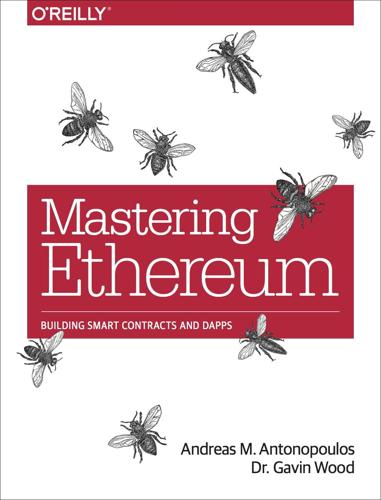
Mastering Ethereum: Building Smart Contracts and DApps
by
Andreas M. Antonopoulos
and
Gavin Wood Ph. D.
Published 23 Dec 2018
Mist was also the first wallet to introduce the camelCase checksum (EIP-55; see “Hex Encoding with Checksum in Capitalization (EIP-55)”). Mist runs a full node and offers a full DApp browser with support for Swarm-based storage and ENS addresses. Network Referring to the Ethereum network, a peer-to-peer network that propagates transactions and blocks to every Ethereum node (network participant). NFT A non-fungible token (also known as a “deed”). This is a token standard introduced by the ERC721 proposal. NFTs can be tracked and traded, but each token is unique and distinct; they are not interchangeable like ERC20 tokens.
…
While providing high availability, auditability, transparency, and neutrality, it also reduces or eliminates censorship and reduces certain counterparty risks. Compared to Bitcoin Many people will come to Ethereum with some prior experience of cryptocurrencies, specifically Bitcoin. Ethereum shares many common elements with other open blockchains: a peer-to-peer network connecting participants, a Byzantine fault–tolerant consensus algorithm for synchronization of state updates (a proof-of-work blockchain), the use of cryptographic primitives such as digital signatures and hashes, and a digital currency (ether). Yet in many ways, both the purpose and construction of Ethereum are strikingly different from those of the open blockchains that preceded it, including Bitcoin.
…
Ethereum’s founders were thinking about a blockchain without a specific purpose, that could support a broad variety of applications by being programmed. The idea was that by using a general-purpose blockchain like Ethereum, a developer could program their particular application without having to implement the underlying mechanisms of peer-to-peer networks, blockchains, consensus algorithms, etc. The Ethereum platform was designed to abstract these details and provide a deterministic and secure programming environment for decentralized blockchain applications. Much like Satoshi, Vitalik and Gavin didn’t just invent a new technology; they combined new inventions with existing technologies in a novel way and delivered the prototype code to prove their ideas to the world.
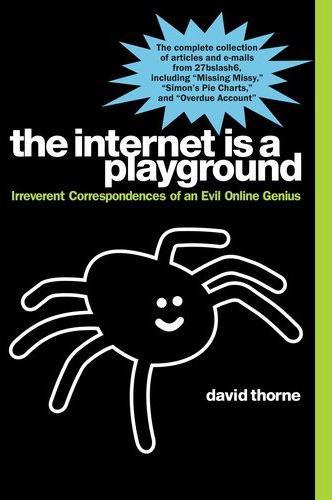
The Internet Is a Playground
by
David Thorne
Published 24 Mar 2010
I would no doubt find your ideas more “cutting edge” and original if I had traveled forward in time from the 1950s, but as it stands, your ideas for technology-based projects that have already been put into application by other people several years before you thought of them fail to generate the enthusiasm they possibly deserve. Having said that, though, if I had traveled forward in time, my time machine would probably put your peer-to-peer networking technology to shame, because it would have not only commercial viability but also an awesome logo and accompanying pie charts. Regardless, I have, as requested, attached a logo that represents the peer-to-peer-networking project you are currently working on and how it feels working with you in general. Regards, David From: Simon Edhouse Date: Tuesday 17 November 2009 11:07 a.m. To: David Thorne Subject: Re: Re: Re: Re: Logo Design You just crossed the line.
…
Not once did the secretary there call me a wanker or have her grotty old G-strings poking out the top of her fat arse every day, making me feel ill”—which I found much more entertaining than having to do the work that maintaining new clients would have entailed. From: Simon Edhouse Date: Monday 16 November 2009 2:19 p.m. To: David Thorne Subject: Logo Design Hello David, I would like to catch up as I am working on a really exciting project at the moment and need a logo designed. Basically something representing peer to peer networking. I have to have something to show prospective clients this week so would you be able to pull something together in the next few days? I will also need a couple of pie charts done for a 1 page website. If deal goes ahead there will be some good money in it for you. Simon From: David Thorne Date: Monday 16 November 2009 3:52 p.m.

The Inevitable: Understanding the 12 Technological Forces That Will Shape Our Future
by
Kevin Kelly
Published 6 Jun 2016
Second, even though a purely decentralized power won’t take us all the way, it is almost always the best way to start. It’s fast, cheap, and out of control. The barriers to start a new crowd-powered service are low and getting lower. A hive mind scales up wonderfully smoothly. That is why there were 9,000 startups in 2015 trying to exploit the sharing power of decentralized peer-to-peer networks. It does not matter if they morph over time. Perhaps a hundred years from now these shared processes, such as Wikipedia, will be layered up with so much management that they’ll resemble the old-school centralized businesses. Even so, the bottom up was still the best way to start. • • • We live in a golden age now.
…
There are websites today that feature only movie trailers or great commercials, but they don’t earn anything from the sources for hosting them. Soon enough they will. This arrangement completely reverses the power of the established ad industry. Like Uber and other decentralized systems, it takes what was once a highly refined job performed by a few professionals and spreads it across a peer-to-peer network of amateurs. No advertising professional in 2016 believes it could work, and even reasonable people think it sounds crazy, but one thing we know about the last 30 years is that seemingly impossible things can be accomplished by peers of amateurs when connected smartly. A couple of maverick startups in 2016 are trying to disrupt the current attention system, but it may take a number of tries before some of the radical new modes stick.
…
See also work environments on-demand expectations, 64–65, 114–17 OpenOffice, 151 open source industry, 135, 141–42, 143, 271 oral communication, 204 Oscar Awards, 187–88 overfitting, 170 ownership, 112–13, 117–18, 121–22, 124–25, 127, 138 Page, Larry, 36–37 Pandora, 169 parallel computation, 38–39, 40 passive archives, 249 passwords, 220, 235 patents, 283 PatientsLikeMe, 145 patronage, 71–72 PayPal, 65, 119–20, 124 pedometers, 238 peer-to-peer networks, 129–30, 184–85 Periscope, 76 “personal analytics” engine, 239 personalization, 68–69, 172–73, 175, 191, 240–41, 261–62 pharmaceutical research, 241–42 pharmacies, 50 phase transitions, 294–97 phones automatic updates of, 62 cameras in, 34 and clouds, 126 and decentralized communications, 129–31 and on-demand model of access, 114 directories, 285 and interactivity, 219 lifespan of apps for, 11 as reading devices, 91–92 in rural China, 56 and self-tracking technology, 239–40 and tracking technology, 239–40, 250, 253 and virtual reality technology, 215, 222 photography and images and artificial intelligence, 33–34 and classic film production, 198–99 and content recognition, 43, 203 and Creative Commons licensing, 139 democratization of, 77 and digital storage capacity, 266 and facial recognition, 39, 43 flexible images, 204 and Google Photo, 43 and lifelogging, 248–49 and new media genres, 195 and photo captioning, 51 and reproductive imperative, 87 sharing of, 140 Picard, Rosalind, 220 Picasso, Pablo, 288 Pichai, Sundar, 37 Pine, Joseph, 172–73 Pinterest, 32, 136, 139, 140, 183 piracy, 124 placebo effect, 242 platform synergy, 122–25, 131 PlayStation Now, 109 porn sites, 202–3 postal mail, 253 postindustrial economy, 57 “presence,” 216–17 printing, 85, 87.
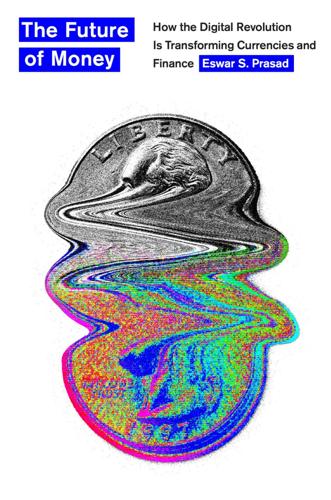
The Future of Money: How the Digital Revolution Is Transforming Currencies and Finance
by
Eswar S. Prasad
Published 27 Sep 2021
So how does Bitcoin accomplish the twin objectives of validation and immutability without relying on a trusted third party? The answer turns out to rely on a high degree of transactional transparency. Bitcoin’s elegant solution to the validation and immutability issues is to use a public consensus mechanism managed through a peer-to-peer network that alerts participants in a network to every transaction nearly in real time. Let us break down the elements of this process. A peer-to-peer network is essentially a large network of computers (nodes), none of which has any special status, that are linked through the internet and do not require a central server to distribute information to other members. The network is not managed or controlled by any official or private entity.
…
Thus, owners of Bitcoin wallets hold the keys to their own money and transact directly with each other. What happens when Jack sends a payment of one bitcoin to Jill? The proposed transaction, which involves the transfer of a digital coin using Jack’s and Jill’s public digital identities—their digital wallets—is broadcast on the peer-to-peer network. Transactions submitted to the network are not validated instantaneously. Rather, they are queued up and collated into a block. Every block contains a set of separate transactions, each of which has to be validated independently. That is, each transaction has to be validated as a legitimate one that does not involve double-spending of any coins that have already been spent.
…
The Bitcoin white paper argues that the blockchain obviates the need for trust: “We have proposed a system for electronic transactions without relying on trust. We started with the usual framework of coins made from digital signatures, which provides strong control of ownership, but is incomplete without a way to prevent double-spending. To solve this, we proposed a peer-to-peer network using proof-of-work to record a public history of transactions that quickly becomes computationally impractical for an attacker to change if honest nodes control a majority of CPU power. The network is robust in its unstructured simplicity. Nodes work all at once with little coordination.” A subtle but crucial feature of Bitcoin is that many of the parameters discussed above—block size, block rewards, cap on total stock of bitcoins—are in fact not immutable.

Beautiful Architecture: Leading Thinkers Reveal the Hidden Beauty in Software Design
by
Diomidis Spinellis
and
Georgios Gousios
Published 30 Dec 2008
It would be ridiculous to permanently attach a customer to a single workstation—not just unworkable for scheduling, but also risky. Workstations break! So any workstation in the studio must be interchangeable, but “interchangeable” presents some problems. The images for a single session can consume close to a gigabyte. We briefly contemplated building the workstations as a peer-to-peer network with distributed replication. Ultimately, we opted for a more traditional client-server model, as shown in Figure 4-5. Figure 4-5. Studio deployment The server is equipped with larger disks than the clients, and they are RAIDed for resilience. The server runs a MySQL database to hold structured data about customers, sessions, and orders.
…
Channels are a form of one-to-many communication. Conceptually, channels can be joined by any number of clients, and any message that is sent on the channel will be delivered to all of the clients that have been associated with the channel. This might seem to be a perfect place to utilize peer-to-peer technologies, allowing clients to directly communicate with other clients without adding any load to the server. However, these sorts of communications need to be monitored by some code that is trusted to ensure that neither inappropriate messages nor cheating can take place by utilizing different client implementations.
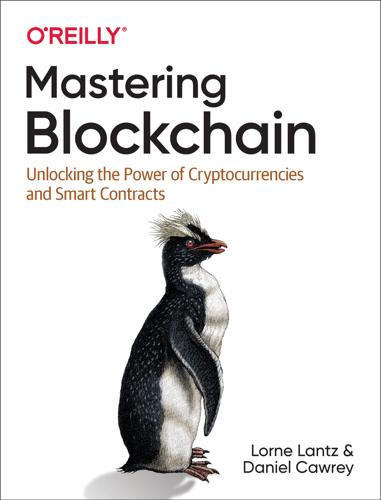
Mastering Blockchain: Unlocking the Power of Cryptocurrencies and Smart Contracts
by
Lorne Lantz
and
Daniel Cawrey
Published 8 Dec 2020
Hidden identities Participants on public blockchains are identified by their blockchain address, which can make many participants essentially pseudo-anonymous. Businesses want to know who they are transacting with. The Corda protocol was built to satisfy all those business requirements. The Corda network A Corda network is a peer-to-peer network of nodes. Each node represents a legal entity, and each runs an instance of Corda with one or more Corda applications. Figure 9-2 illustrates. Figure 9-2. Example of a Corda network Anyone can start their own Corda network, but every node in the network must receive permission by the network operator to join, and must also be identified to all participants in the network.
…
Trustless sidechains, still under development, use the concept of a “two-way peg,” which enables users to move funds from one chain to another in a more decentralized manner. Sharding A process to break up bigger chunks of data, sharding is used in database systems and is a proposed solution for scaling cryptocurrency networks. In peer-to-peer networks underpinned by blockchains, sharding would split datasets between nodes. The information would then be shared with other nodes on the network. Sharding on blockchain networks adds another layer of complexity since there has to be a secure communication protocol to share data. STARKs Scalable Transparent Arguments of Knowledge, or STARKs, takes advantage of the privacy-focused zk-SNARKs technology mentioned in previous chapters.
…
Privacy Privacy is expected to be one of the biggest growth areas for blockchain technology in the coming years. Developers and other stakeholders are realizing the need to not publicly transmit all data about transactions. Here are a few privacy-related projects that are in the works: Secret Network Originally an MIT-based project called Enigma, Secret Network is a type of peer-to-peer network enabling computation of data in private. A blockchain manages access control and identities, with the ERC-20 SCRT token used to compensate “secret nodes” for providing computing power to the network. This allows users to share data while keeping it private using cryptography, removing the need for a third party to store information for users (which can be susceptible to breaches).
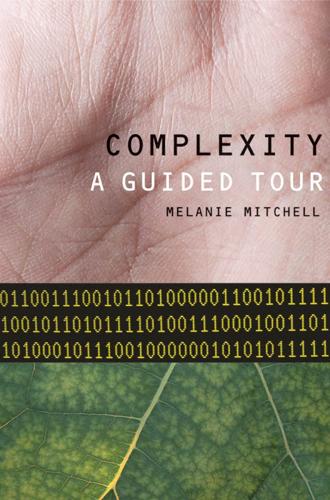
Complexity: A Guided Tour
by
Melanie Mitchell
Published 31 Mar 2009
“That territoriality favours cooperation”: Sigmund, K., On prisoners and cells, Nature, 359 (6398), 1992, p. 774. “John Holland has likened such models to ‘flight simulators’”: Holland, J. H., Emergence: From Chaos to Order. Perseus Books, 1998, p. 243. “proposals for improving peer-to-peer networks”: e.g., Hales, D. and Arteconi, S., SLACER: A Self-Organizing Protocol for Coordination in Peer-to-Peer Networks. IEEE Intelligent Systems, 21 (2), 2006, pp. 29–35. “preventing fraud in electronic commerce”: e.g., see Kollock, P., The production of trust in online markets. In E. J. Lawler, M. Macy, S. Thyne, and H. A. Walker (editors), Advances in Group Processes, Vol. 16.
…
John Holland has likened such models to “flight simulators” for testing one’s ideas and for improving one’s intuitions. Inspire new technologies. Results from the Prisoner’s Dilemma modeling literature—namely, the conditions needed for cooperation to arise and persist—have been used in proposals for improving peer-to-peer networks and preventing fraud in electronic commerce, to name but two applications. Lead to mathematical theories. Several people have used the results from Prisoner’s Dilemma computer simulations to formulate general mathematical theories about the conditions needed for cooperation. A recent example is work by Martin Nowak, in a paper called “Five Rules for the Evolution of Cooperation.”
…
The rise and fall of Darwin’s second theory. Journal of the History of Biology, 18(1), 1985, pp. 51–70. Grosshans, H. and Filipowicz, W. The expanding world of small RNAs. Nature, 451, 2008, pp. 414–416. Hales, D. and Arteconi, S. SLACER: A Self-Organizing Protocol for Coordination in Peer-to-Peer Networks. IEEE Intelligent Systems, 21(2), 2006, pp. 29–35. Hardin, G. The tragedy of the commons. Science, 162, 1968, pp. 1243–1248. Heims, S. The Cybernetics Group. Cambridge, MA: MIT Press, 1991. Heims, S. J. John von Neumann and Norbert Wiener: From Mathematics to the Technologies of Life and Death.

The Evolution of Everything: How New Ideas Emerge
by
Matt Ridley
Take the example of Twister, a blockchain-based rival to Twitter, built entirely on a peer-to-peer network. If you live under a despotic regime, sending a message critical of your government on Twitter leaves you vulnerable to that government coercing Twitter, the company, into handing over your details. With Twister, that will not be possible. Then there is Namecoin, which aims to issue internet names in a decentralised, peer-to-peer fashion; Storj, which plans to allow cloud storage of files hidden inside blockchains; and Ethereum, which is a decentralised peer-to-peer network ‘designed to replace absolutely anything that can be described in code’, as Matthew Sparkes puts it.
…
The names would be different, and some of the procedures too, but an alternative internet would exist today whoever had lived. The true origin of the internet does not lie in brilliant individuals, nor in private companies, nor in government funding. It lies, as Steven Berlin Johnson has argued persuasively, in open-source, peer-to-peer networking of an almost hippie, sixties-California-commune kind. ‘Like many of the bedrock technologies that have come to define the digital age, the internet was created by – and continues to be shaped by – decentralised groups of scientists and programmers and hobbyists (and more than a few entrepreneurs) freely sharing the fruits of their intellectual labor with the entire world.’
…
The Constitution of Liberty. University of Chicago Press. On East German televisions, and telephones, Kupferberg, Feiwel 2002. The Rise and Fall of the German Democratic Republic. Transaction Publishers. On the Arpanet, Crovitz, Gordon 2012. Who really invented the internet?. Wall Street Journal 22 July 2012. On peer-to-peer networks, Johnson, Steven 2012. Future Perfect. Penguin. On the balkanisation of the web, Sparkes, Matthew 2014. The Coming Digital Anarchy. Daily Telegraph 9 June 2014. On Wikipedia editing, Scott, Nigel 2014. Wikipedia: where truth dies online. Spiked 29 April 2014. Filipachi, Amanda 2013. Sexism on Wikipedia is Not the Work of ‘a Single Misguided Editor’.

The People's Platform: Taking Back Power and Culture in the Digital Age
by
Astra Taylor
Published 4 Mar 2014
Zeynep Tufekci, a sociologist at the University of Maryland, took issue with these claims in a fascinating post called “Can ‘Leaderless Revolutions’ Stay Leaderless?” Even if the democratic movement in Egypt had truly lacked leaders (a debatable assertion given the role trade unions played, for example), Tufekci argued that social media and peer-to-peer networks in no way guaranteed that the situation would stay that way. Social media, Tufekci explained, do not guard against the “iron law of oligarchy,” the tendency of even democratic groups to develop oligarchic characteristics—they may, in fact, facilitate it. “Networks which start out as diffuse can and likely will quickly evolve into hierarchies not in spite but because of their open and flat nature,” she explained.23 “Influence in the online world can actually spontaneously exhibit even sharper all-or-nothing dynamics compared to the off-line world, with everything below a certain threshold becoming increasingly weaker while those who first manage to cross the threshold becoming widely popular.”
…
We surf and skim, passing along songs instead of albums, quotes instead of essays, clips instead of films. Artists who share their work with the world (or find it leaked) see it repurposed in ways they didn’t anticipate. The minute a film is released or an essay is published, it begins to race around the Internet, passed through peer-to-peer networks, posted on personal Web sites, quoted in social media streams. In one sense, therefore, any ownership claim is purely theoretical, since, in practice, people’s creations circulate in ways they cannot control. In practice, though, the laws underpinning ownership are stronger than ever before, so strong that some experts warn we are living through a “second enclosure,” a reference to the eighteenth-century privatization of collectively managed fields and forests in England.
…
According to Mason’s Web site, his speaking performances have left Procter and Gamble “delighted,” struck the executives of Miller Genuine Draft as “amazing.” Disney, only slightly more restrained, found Mason “very stimulating!” Mason’s argument also holds true for most mainstream culture. The most downloaded files are, without fail, the biggest blockbusters and mainstream hits. While peer-to-peer networks can be used to share amateur and independent creativity, in practice they are more often used to trade Lady Gaga or Game of Thrones. Of course, big business is loath to lose potential sales to free distribution (the push for SOPA and PIPA in the United States and the draconian “three strikes” laws abroad, which can slow or suspend Internet access to repeat copyright infringers, prove as much), but pirate sites also increase the reach of American commercial culture, spreading it around to distant corners of the globe.
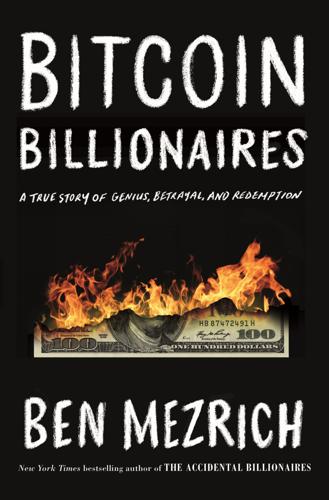
Bitcoin Billionaires: A True Story of Genius, Betrayal, and Redemption
by
Ben Mezrich
Published 20 May 2019
Stranger still, Satoshi, who claimed to be a Japanese man in his midthirties, wrote his emails in perfect, idiomatic English. Once Charlie read the white paper, however, it was obvious that Satoshi was a polymath, a multidisciplinary genius who was an expert in cryptography, math, computer science, peer-to-peer networking, economics, and more. How could this person be that smart and accomplished and yet be a ghost to the internet, a complete phantom? How could Charlie not at least even know of him? Or her. Or them. Charlie would have gone on with his life, ignored the email and the white paper, if it wasn’t for the enthusiasm of a new, online friend he’d met while perusing crypto boards and forums under the handle “Yankee”: the autistic Welshman Gareth Nelson.
…
On October 31, 2008, Satoshi Nakamoto had published his famous white paper titled: Bitcoin: A Peer-to-Peer Electronic Cash System, to the Cryptography Mailing List—“a low-noise moderated mailing list devoted to cryptographic technology and its political impact,” laying out “a new electronic cash system that’s fully peer-to-peer, with no trusted third party.” The white paper detailed bitcoin’s specific features: • Double-spending is prevented with a peer-to-peer network. • No mint or other trusted parties. • Participants can be anonymous. • New coins are made from Hashcash-style proof-of-work. • The proof-of-work for new coin generation also powers the network to prevent double-spending. And then three months later, the first version of the Bitcoin software was released into the wild.
…
They were the engineering equivalent of the back office, not the shiny front office types. They were often called “neckbeards”—they weren’t exactly client-facing. But when people talked about someone being the smartest person in the room—well, this was a room full of them. They were intensely interested in cryptography, protocols, and peer-to-peer networking, and coding in lower-level languages like C and C++. They were close to the bare metal, the 1s and 0s, bits and bytes, not the more user-friendly, abstracted layers. Tyler certainly recognized brilliant billionaires among them, such as Max Levchin, who had cofounded PayPal with Thiel. Levchin was credited with decimating fraud on the network in the early days, and was a leading member of the PayPal Mafia.
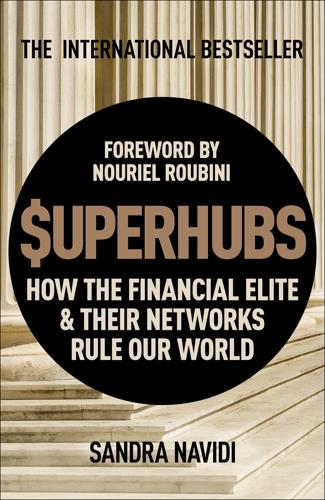
SUPERHUBS: How the Financial Elite and Their Networks Rule Our World
by
Sandra Navidi
Published 24 Jan 2017
In 2014, Krawcheck gave it the clever moniker Ellevate and launched the Pax Ellevate Global Women’s Index Fund, which invests in companies highly rated in terms of advancing female leadership. The verdict on the Ellevate network’s effectiveness is still out, but it is a promising start. THE NETWORKING GAP: SCHMOOZE OR LOSE The comparative weakness of female networks also results from women’s dispositions. Studies show that women are more reluctant than men to use their peer-to-peer networks because they feel uncomfortable using connections opportunistically. Also, some argue that since women have had top job opportunities only for a few decades, they lack role models and are still learning practices that men have long internalized.15 Often women are hired for their soft skills to attract new clients, sell financial services, and maintain client relationships.
…
Shaw, 188 Dakota building, 199–200 Daley, William, 165 Dalio, Ray, xxvii Anthony Scaramucci and, 24 background on, 69–72 meditation by, 62, 70 net worth of, 88 Principles, 63, 71 Robin Hood Foundation and, 76 spouse of, 135 Dallara, Charles, 27, 107, 131–133 Dallara, Peixin, 131–133 D’Andrea Tyson, Laura, 185 Das, Satyajit, 210 Davos access to, 113 attendees of, 2, 4, 113–114 central bankers at, 33 critics of, 95 description of, 1–4, 96, 112–116 drawbacks of, 113 environment of, 2–3 hierarchy at, 114 hotels in, 2–3 networking at, 113–114 parties at, 114–116 peer-to-peer networking at, 5, 9 purpose of, 4 status markers at, 114 superhubs at, 8–12 Dealbreaker, 71 Debt, 210 Decision makers, proximity to, 42 Dell, Michael, 115 Democratic Party, 168 Den of Thieves, 190 Depression, 137 Deripaska, Oleg, 9, 69 Deutsche Bank, 27, 42, 101, 105, 118, 120–121, 131, 136, 141, 143, 176 Diamond, Bob, 43, 137, 205 Dijsselbloem, Jeroen, 121 DiMartino, Joseph, 199 Dimon, Jamie alma mater of, 174 as superhub, 11, 56 as type A personality, 56–57 background on, 55–58 charity by, 76 Elizabeth Warren and, 225 financial losses by, 23, 51 firings by, 140–141 general references to, xxv, 79 at JPMorgan, 9.
…
See Davos need for, 112 Network power communication used to form, 41 description of, xxv of Klaus Schwab, 95 network strength and, 97 Network science description of, xxvi financial system viewed through, 6–7 human relationships viewed through, 7 patterns in, 7 Networkers, 100–101 Networking at charity events, 128–129 at Davos, 5, 9 family office platform for, 123–124 at fitness clubs, 125–126 mind-set of, 100–101 power lunches for, 124–125 at Private parties, 126–128 purpose of, 100, 104, 108 resistance to, 104 by Superhubs, 100 by women, 151 Networking gap, 151, 161–162 New York charity events in, 128 Four Seasons restaurant in, 124 real estate in, 90–91 New York Fed, 45–46, 183, 208–209, 215 New York Times, 17, 56, 71, 125, 148, 158, 189 New York University, 36, 47, 64 New Zealand, 13 Newsweek, 80 Niccolini, Julian, 124 Niederauer, Duncan, 85 Nodes definition of, xxvi description of, 18–19 failure of, 216 in financial system, 19–20 hierarchy of, 19 with limited connections, 20 links to, 19 preferential attachment of, xxvi senior, 77 superhub connections to, 19–20 Nonverbal communication, 99–100, 149 Nooyi, Indra, 157 Norms, 222 Northwestern University, 220 Norway, 114 Novogratz, Michael, 109 Noyer, Christian, 160 O Oaktree Capital Management, 90 Obama, Barack, 58, 165, 168, 173–174, 188–189, 196 Observer, 87 Obsessiveness, 69 Och, Dan, 170 Och-Ziff, 170 “Office housework,” 152 Office of the Chief Economist, 164 Old boys’ network, 82–85, 150 Old Lane Partners, 139 On the Brink, 172 On Tour with the IMF, 160 O’Neal, Stanley, 56 O’Neill, Michael, 140 Open-mindedness, 62 Opportunities, 52–53 Opportunity gap, 13 Orszag, Peter, 168 Osborne, George, 121, 137 Osório, Horta, 137 Oxfam, 213 P Pain, 71 Paine Webber, 209 Palantir Technologies, 72 Panama Papers, 211 Pandit, Vikram, 23, 53, 57, 139–140, 203 Pao, Ellen, 196–203 Papandreou, George, 27 Paranoia, 71 Paris, 131–132 Parties private, 126–128 at World Economic Forum, 114–116 Patton, Arch, 87 Paulson & Co., 42, 88 Paulson, Hank AIG and, 183 Alan Greenspan and, 36 as U.S. treasury secretary, 36, 167 background on, 172 at Bilderberg conference, 121 networking by, 172–173, 182 personal relationships, 11 in public and private sectors, 165 revolving door phenomenon and, 165 Robert Rubin and, 167 Paulson, John, xxvii, 7, 82, 88, 129 Pax Ellevate Global Women’s Index Fund, 151 Peer-to-peer networking at Davos, 5, 9 by women, 151 P=EFT formula, 63–64, 192 Pelosi, Nancy, 27, 173 Peltz, Nelson, 154 People’s Bank of China, 209 Pepsi, 157 Perfectionism, 137 Performance-based assessments, 152 Performance-based compensation, 86 “Perma-bears,” 48 Perry, Richard, 170 Perry Capital, 170 Personal connections access and, 52 benefits of, 45–46 description of, 7–8, 10–12 in financial crisis of 2007–2008 resolution, 172–173 influence of, 41–42 information from, 41–42 leveraging of, 175 need for, 98 networking to create, 100–101 technology’s role in, 99–100 value of, 175 Peterson, Pete, 27, 30, 53, 61, 79, 124 Peterson Institute, 107 Petraeus, General David, 121 Petro Saudi, 170 “Philanthrocapitalism,” 128 Philanthropy, 17, 70, 75–76, 128, 129, 169, 171, 192, 199 Philippe, King of Belgium, 114 Picasso, Pablo, 124–125 Piketty, Thomas, 49 PIMCO, 42, 44, 53, 66–67, 69 Pinchuk, Victor, 195 Place Vendôme, 132 Plato, 79 Plaza Hotel, 158 Point72 Asset Management, 88 Policy makers, 85 Political capital, 169 Political protection, 175–176 Politics, finance and, 163 Ponzi schemes, 196, 201–202 Pool Room, 124 Pope, 220 Portugal, 177 “Positive linking,” 100 Potential versus performance, 152–153 Poverty, 213 Power network.
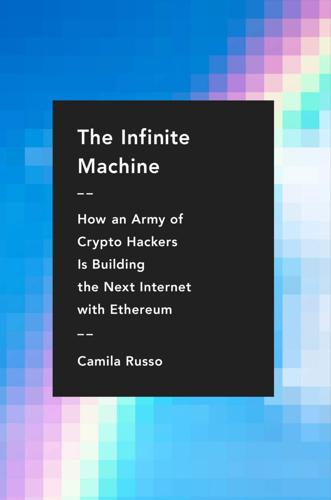
The Infinite Machine: How an Army of Crypto-Hackers Is Building the Next Internet With Ethereum
by
Camila Russo
Published 13 Jul 2020
The now-defunct website allowed users to share digital files among a web of participants, instantly making hundreds of thousands of MP3 songs available for free to anyone in the world. Then in 2001, BitTorrent was released, doing to movies and larger files what Napster had done with music. They arguably brought peer-to-peer (P2P) applications into the mainstream. Peer-to-peer networks interconnect equally privileged nodes with each other, allowing users to share and transfer data without the need of a centralized administrative entity. Systems using this architecture are resilient against censorship, attacks, and manipulation. Just like the mythological Hydra, there’s no one head that you can cut off to kill it, and it gets stronger after each attack.
…
Cypherpunks had continued incrementally improving past work until the major breakthrough came in October 2008, when an anonymous person or persons going by the name Satoshi Nakamoto emailed the group. “I’ve been working on a new electronic cash system that’s fully peer-to-peer, with no trusted third party,” the email began, and linked to a nine-page PDF that underlined how the system worked. He said he proposed solving the double-spend problem by using a “peer-to-peer network which timestamps transactions by linking them into an ongoing chain of hash-based proof-of-work.”3 In the paper titled “Bitcoin: A Peer-to-Peer Electronic Cash System,” Satoshi Nakamoto proposed a network of computers, where each computer holds the copy of the entire transaction history for the network, a ledger with what everyone owns.
…
This new internet is made up of concepts including the “semantic web,” or a web of data that can be processed by machines, artificial intelligence, machine learning, and data mining. When algorithms decide what to recommend someone should purchase on Amazon, that’s a glimpse of Web 3. Besides all those features, Gavin’s version of Web 3 would allow people to interact without needing to trust each other. It should be a peer-to-peer network with no servers and no authorities to manage the flow of information. Ethereum would be instrumental for this Web 3 vision to become a reality, and much of how the project was defined, with teams focusing on decentralized messaging, storage, and browsers, had the goal of helping shape this next version of the internet.
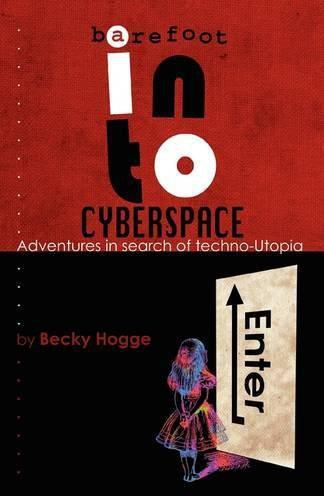
Barefoot Into Cyberspace: Adventures in Search of Techno-Utopia
by
Becky Hogge
,
Damien Morris
and
Christopher Scally
Published 26 Jul 2011
I haven’t really come here to see art projects – cool as they may be. I want to find some cracking. The lightning talks offer up a couple of titbits. One talk, entitled “cache games”, shows how to manipulate someone else’s computer from afar using the web caching system. Another details how to launch a distributed denial of service (DDoS) attack using peer-to-peer networks. If this was the magician’s circle, then think of these guys as fairground conjurers. For the really good tricks, it’s clear I’m going to have to leave the sideshows. The main lecture hall is accessed from the first, and top floor of the Berliner. Its domed roof has something of the Biosphere 1 about it, but despite this, the lecture hall is pretty normal.
…
MIT: Massachusetts Institute of Technology n00bie: Hacker jargon for “newbie” NORAD: North American Aerospace Defense Command ONI: Open Net Initiative Open Rights Group (ORG): UK-based organisation that works to preserve digital rights and freedoms open source: Practices in production and development that promote access to the end products source materials ORG: See Open Rights Group paywall: A paywall blocks access to a webpage with a screen requiring payment. PDP11: 16-bit minicomputer sold by Digital Equipment Corporation (DEC) from 1970 into the 1990s peer-to-peer: A distributed application architecture that partitions tasks or workloads between equally privileged participants in the application which are said to form a peer-to-peer network of nodes. The peer-to-peer application structure was popularised by file sharing systems like Napster. phreaking: A slang term coined to describe the activity of a culture of people who study, experiment with, or explore telecommunication systems, such as equipment and systems connected to public telephone networks.

Attack of the 50 Foot Blockchain: Bitcoin, Blockchain, Ethereum & Smart Contracts
by
David Gerard
Published 23 Jul 2017
Mining benefits from economies of scale, so it’s progressed from mining on your PC, to graphics cards, to programmable chips (FPGAs), to ASICs. Nakamoto’s original Bitcoin white paper assumes a peer-to-peer network that anyone can join. In practice, the miners operate their own centralised communication pool, previously the Bitcoin Relay Network and now called the Fast Internet Bitcoin Relay Engine (FIBRE), as it’s more efficient. (This came close to being a single point of failure in January 2016, as the BRN was about to shut down from lack of funding, and the decentralised peer-to-peer network would not have been able to handle the traffic.) As of March 2017, three pools controlled over 50% and six pools over 75% of the hash rate, with the largest individual pool at 21.3%.135 There is no reason that multiple pools could not have a single owner.
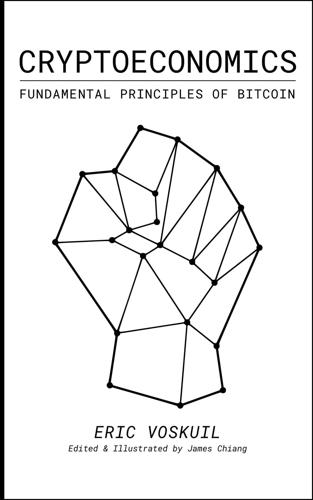
Cryptoeconomics: Fundamental Principles of Bitcoin
by
Eric Voskuil
,
James Chiang
and
Amir Taaki
Published 28 Feb 2020
To do this hash power must be distributed broadly among people so that it becomes difficult to co-opt . However pooling pressures inherent in the consensus work against this objective. As such the characteristic is termed a flaw, though no way to eliminate the flaw has been discovered. Relay Fallacy The peer-to-peer network disseminates blocks and unconfirmed transactions . The protocol itself allows nodes to protect against denial of service . Consequently this communication requires no identity . This protection is how the network avoids the need for permission to participate. However this protection comes at a cost in terms of announcement latency , and because of the advantage to proximity , lower latency translates into higher apparent hash power .
…
Therefore miners compete for reduced latency. One way to reduce latency is pooling , another is to use a more efficient dissemination network. Given that pooling surrenders power to the operator, presumably the latter option is preferable. One way to improve dissemination is to optimize the peer-to-peer network. The other is to join a distinct network, called a relay , that has lower latency due to elimination of denial-of-service protections, for example [408] : [T]he cmpctblock message format was designed to ensure it fits neatly into a UDP-FEC-based relay mechanism. The only difference is that we send it over UDP with FEC...
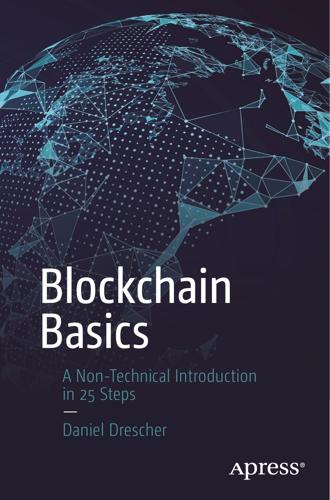
Blockchain Basics: A Non-Technical Introduction in 25 Steps
by
Daniel Drescher
Published 16 Mar 2017
However, sending information through a network implies security concerns as untrustworthy entities may misuse the network in order to access and exploit information. Hence, any distributed system has to address security concerns. The less restricted the access to the network over which the distributed nodes communicate is, the higher the security concerns are for the distributed system. Distributed Peer-to-Peer Systems Peer-to-peer networks are a special kind of distributed systems. They consist of individual computers (also called nodes), which make their computational resources (e.g., processing power, storage capacity, data or network band- width) directly available to all other members of the network without having Blockchain Basics 15 any central point of coordination.
…
As a result, something as simple as transferring an amount of money from one bank account to another in a different country involves a long 1Hong, Seung-Hyun. The effect of Napster on recorded music sales: evidence from the consumer expenditure survey. Stanford Institute for Economic Policy Research Working Paper (2004): 3–18; Leyshon, Andrew. Scary monsters? Software formats, peer-to-peer networks, and the spectre of the gift. Environment and Planning D: Society and Space 21.5 (2003): 533–558. 22 Step 3 | Recognizing the Potential processing time and incurs high transactions costs. In a peer-to-peer system, the same transfer would be much simpler and it would take less time and costs since it could be processed as what it is: a transfer of bits and bytes between two peers or nodes, respectively.
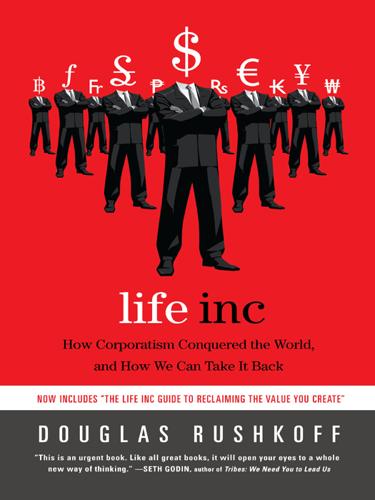
Life Inc.: How the World Became a Corporation and How to Take It Back
by
Douglas Rushkoff
Published 1 Jun 2009
Instead of paying a record company to listen to their artists’ music on a CD player, we pay a computer company for the hardware, an Internet-access company for the bandwidth, and a software company for the media player to do all this. And that’s when we’re doing it illegally, instead of just paying ninety-nine cents to Apple’s iTunes. “Silicon Valley consultants call it Web 2.0, as if it were a new version of some old software. But it’s really a revolution,” Time enthused. Peer-to-peer networking is terrific, indeed, but revolutions are those moments in history when a mob storms the palace and cuts off the heads of the people who have been exploiting them. This is something else. Yes, bloggers and YouTubers have had many successes, particularly against government. They have brought down a Republican senator, an attorney general, and even made headway against the repressive net censorship of the Chinese.
…
The bias of the Internet for abundance over scarcity appeared to be taking its toll. Hollywood studios and record companies began lobbying Congress for laws and enforcement to prevent their entire libraries from becoming worthless. Comcast, a cable company that offers broadband Internet service, began blocking traffic from peer-to-peer networks in an effort to prevent losses to its corporate brethren and subsidiaries. Other corporations lobbied for changes to the way Internet access is billed, making it easier for large companies to support fast content distribution, but much harder for smaller groups or individuals to share their data.
…
This team-up is based on the premise that a group of small companies can outperform a single large contractor—doing large projects faster, cheaper, and better than the “big boys.” Big contractors form their own Contract Teaming Arrangements when necessary, but these teams are organized hierarchically, like a military unit, with the “prime” contractor commanding and controlling its subcontractors. A Super CTA is very different: It’s organized as a peer-to-peer network, like a modern software development team. It’s a partnership of equals; in a Super CTA, one company handles the team’s communication and coordination functions, but no company in the team dictates to any other. A Super CTA is a contracting democracy, and, like democracy in general, it requires checks, balances, and good communications to function well.

Actionable Gamification: Beyond Points, Badges and Leaderboards
by
Yu-Kai Chou
Published 13 Apr 2015
“Future of Retail: How Companies Can Employ Big Data to Create a Better Shopping Experience”. 08/31/2012.↩ Mangalindan, JP. Fortune. “Amazon’s Recommendation Secret”. 07/30/2012.↩ Yao Wang and Julita Vassileva. University of Saskatchewan. Trust and reputation model in peer-to-peer networks. 2003.↩ Minaxi Gupta, Paul Judge, and Mostafa Ammar. Georgia Institute of Technology. A Reputation System for Peer-to-Peer Networks. 2003.↩ David Vise & Mark Malseed. The Google Story. p42. Random House, New York, New York. 2005.↩ David Vise & Mark Malseed. The Google Story. p88. Random House, New York, New York. 2005.↩ Gareth Llewellyn. Quora.com: “Are Facebook and Twitter the best tools for social media marketing?”.
…
Of course, another “Social Influence & Relatedness” factor of Amazon that heavily contributed to its early success, was the millions of user reviews on books and other items. “My friend Bob says the doctor is wrong – and he reads a lot about health.” Studies on Trust and Reputation in Peer-to-Peer Networks by researchers like Yao Wang and Julita Vassileva of the University of Saskatchewan, as well as Minaxi Gupta, Paul Judge, and Mostafa Ammar of the Georgia Institute of Technology found that the average consumer prefers and trusts reviews by peers over those by professional critics78. This is somewhat odd, because professional critics have made it their life mission to distinguish the good from the bad.

WTF?: What's the Future and Why It's Up to Us
by
Tim O'Reilly
Published 9 Oct 2017
Yet over the next few years, Uber developed into a force that transformed the market for on-demand transportation, and today it has more drivers providing services than the entire previous taxi and limousine industry. How did this happen? The game changer came early in 2012 when two companies, Sidecar and Lyft, introduced a peer-to-peer model in which ordinary people, not just licensed limousine drivers, provided the service using their personal cars. It was this further innovation that reshaped the way we think about employment, with drivers who not only have no guaranteed work from the company, but also make no guarantees to the company about whether they will work when they are needed.
…
There are many historical examples of peer-to-peer public transportation. Zimride, Logan Green and John Zimmer’s predecessor to Lyft, was inspired by the informal jitney systems they observed in Zimbabwe. But using the smartphone to create a two-sided, real-time market in physical space was something profoundly new. After initial skepticism, Uber copied the peer-to-peer model a year later. Driven by an aggressive CEO, a stronger technical focus on logistics and marketplace incentives, a take-no-prisoners corporate culture, and huge amounts of capital, it has spent billions to outpace its rivals. Lyft is still a strong contender in the United States, gaining, but in distant second place.
…
Drivers Who Show Up When You Need Them. Transportation on demand for passengers requires a critical mass of drivers. Uber’s original vision of black car drivers on demand served only a narrow slice of the potential market. As their ambitions grew, they needed a much larger supply of drivers, which the peer-to-peer model supplied. Augmented Workers. GPS and automated dispatch technology inherently increase the supply of drivers because they make it possible for even part-time drivers to be successful at finding passengers and navigating to out-of-the-way locations. There was formerly an experience premium, whereby experienced taxi and limousine drivers knew the best way to reach a given destination or to avoid traffic.
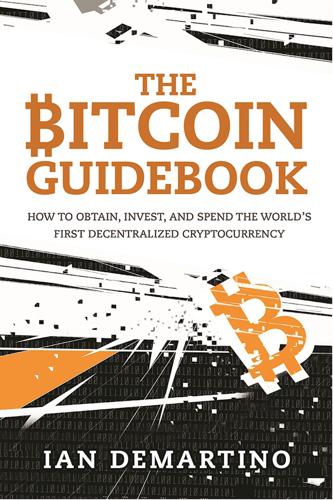
The Bitcoin Guidebook: How to Obtain, Invest, and Spend the World's First Decentralized Cryptocurrency
by
Ian Demartino
Published 2 Feb 2016
Chapter 3: Precursors, History and Creation, Satoshi’s White Paper I’ve been working on a new electronic cash system that’s fully peer-to-peer, with no trusted third party. The paper is available at: http://www.bitcoin.org/bitcoin.pdf The main properties: Double-spending is prevented with a peer-to-peer network. No mint or other trusted parties. Participants can be anonymous. New coins are made from Hashcash style proof-of-work. The proof-of-work for new coin generation also powers the network to prevent double-spending. —Satoshi Nakamoto’s announcement of Bitcoin, The Cryptography and Cryptography Policy Mailing List, November 1, 2008 With this message, an anonymous person or group posting under the name Satoshi Nakamoto started the revolution known to the public as Bitcoin.
…
Farivar describes the process by which Arscoin turned from a hypothetical cryptocurrency into an actual one: I called Corallo, the Coingen creator, for some guidance. First, he said, I needed one of my colleagues to install the app as well so that person could be added as a peer. Soon Peter Bright joined the grand experiment, allowing me to open the Arscoin-qt console and type: “addnode [Peter’s IP address] add.” Bam! Suddenly there was an Arscoin peer-to-peer network of two. The next step was to begin mining with the command “setgenerate true.” In the Windows version of the Arscoin app, a pop-up soon flashed in the taskbar to denote a successfully mined block. The reward? Fifty Arscoins. Now Arscoin was officially born. While this might have been worthless mathematical crunching, the thrill of minting “coins” quickly attracted a host of other staffers.
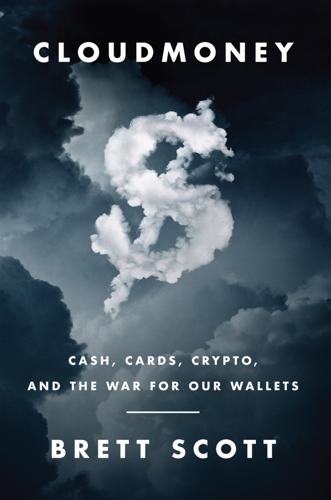
Cloudmoney: Cash, Cards, Crypto, and the War for Our Wallets
by
Brett Scott
Published 4 Jul 2022
To compose and send this message to the techno-clerks, the ordinary user will have downloaded a ‘wallet’. The term is somewhat misleading. Think of it rather as being a little bit like a single-purpose email client, designed for the sole purpose of sending these digital envelopes into cyberspace. The wallet broadcasts the envelope via a peer-to-peer network: picture it being passed from ‘hand-to-hand’ (or, more accurately, from computer to computer) across the Internet via a network of peers, rippling out. The techno-clerks are scattered all over the world and are waiting to catch these incoming digital envelopes. Once received, they add them to a pending queue of wannabe alterations to the big public database.
…
The watchers seek to weave this into their new timeline sculptures, and upon success shout back in unison, ‘He does a twirl!’, which sends him spinning around. This takes us back to our ‘envelope’ starting point. In the Bitcoin system, the ordinary user is a bit like that dancer, writing out a request in a digital envelope, and sending it through the peer-to-peer network to the watchers. After you have sent the request nothing changes to begin with. Your address sits frozen in the same position as you wait for the watchers to stitch your proposed alteration into their chains. And then, suddenly, you see your wish animated into reality. Your tokens move. 5.

Wonderland: How Play Made the Modern World
by
Steven Johnson
Published 15 Nov 2016
The migration to digital music is recent enough that most of us grasp its wider repercussions: think of the still-simmering debates over music in the post-Napster era, the challenges it has posed to our intellectual property laws and the economics of all creative industries. But, as always, what began with an attempt to create and share new kinds of sounds ended up triggering other revolutions in other domains. The first true peer-to-peer networks for sharing information were designed specifically for the swapping of musical files. It is still too early to tell, but this innovation may turn out to be as influential as those piano keyboards and pinned cylinders, if in fact peer-to-peer platforms like Bitcoin eventually become an important part of the global financial infrastructure, as many people believe.
…
It is entirely possible that the most significant advance in the history of money since the invention of a government-backed currency will end up having its roots in teenagers sharing Metallica songs. Whenever waves of new information technology have crested, music has been there to greet them. Music was among the first activities to be encoded, the first to be automated, the first to be programmed, the first to be digitized as a commercial product, the first to be distributed via peer-to-peer networks. There is something undeniably pleasing about that litany, something hopeful. Think about the history behind the most influential device of the modern age: a digital computer sharing information across wireless networks. What were the enabling technologies that made it possible to invent such a device in the first place?

@War: The Rise of the Military-Internet Complex
by
Shane Harris
Published 14 Sep 2014
In 2013, LabMD, an Atlanta company that performs cancer diagnoses, filed a complaint accusing Tiversa of stealing patient information from it and other health care companies through peer-to-peer networks. LabMD had been under investigation by the Federal Trade Commission after a data breach allegedly exposed patient information. The company claimed that the government had hired Tiversa to take the documents without LabMD’s knowledge or consent. According to court documents, Tiversa found LabMD patient information on a peer-to-peer network and then allegedly made repeated phone calls and sent e-mails to the health care company trying to sell Tiversa’s cyber security services.
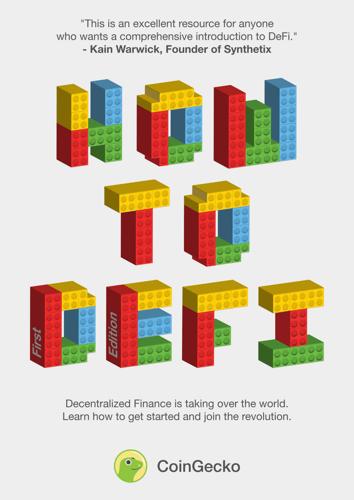
How to DeFi
by
Coingecko
,
Darren Lau
,
Sze Jin Teh
,
Kristian Kho
,
Erina Azmi
,
Tm Lee
and
Bobby Ong
Published 22 Mar 2020
D Decentralized Finance (DeFi) DeFi is an ecosystem that allows for the utilization of financial services such as borrowing, lending, trading, getting access to insurance, and more without the need to rely on a centralized entity. Decentralized Applications (Dapps) Applications that run on decentralized peer-to-peer networks such as Ethereum. Decentralized Autonomous Organization (DAO) Decentralized Autonomous Organizations are rules encoded by smart contracts on the blockchain. The rules and dealings of the DAO are transparent and the DAO is controlled by token holders. Decentralized Exchange (DEX) Decentralized Exchange (DEX) allows for trading and direct swapping of tokens without the need to use a centralized exchange.
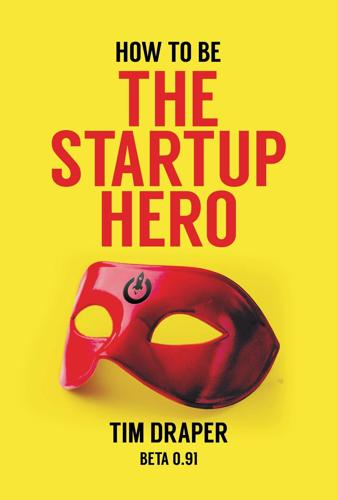
How to Be the Startup Hero: A Guide and Textbook for Entrepreneurs and Aspiring Entrepreneurs
by
Tim Draper
Published 18 Dec 2017
The AT&T Friends and Family marketing program, the LinkedIn network and the Twitter hashtag are some obvious examples. Facebook and Snapchat use viral marketing to share photos. The founders of Skype implemented several viral elements in growing their audio business and even more when Skype video was introduced. The Skype Video Story I was fascinated by the new peer-to-peer technology that allowed people to share files. I met with Napster, Streamcast, and Grokster as I researched the industry. I had gotten the distinct impression that the file-sharing business was pretty much crushed by a powerful and litigious music industry, but I was pretty sure there would be other applications to this revolutionary technology.
…
The Hotmail founders first came to us pitching a lookup table for people’s personal and contact information on the Internet. It was only when they were walking out the door that Steve Jurvetson asked if they had any other ideas. It turned out that their riskier, less safe idea was free, web-based email. The Skype founders initially pitched me on using peer-to-peer technology to generate shared Wi-Fi, then changed course and took on the long-distance carriers with Skype. Google, Baidu, and Yahoo were only search tools that were growing but hemorrhaging money before they all got wind of what GoTo was doing with paid search. When they copied the GoTo model, they were able to build profitable business models.

Perfection
by
Vincenzo Latronico
Published 18 Mar 2025
They hadn’t actively chosen that line of work. It had formed out of their passions, more or less at the same time the internet —their teenage obsession—had crystallized into an industry destined to subsume all others. They had gotten into music just as online piracy was prompting the rise of peer-to-peer networks. At the end of the school day, their long afternoons would be spent jumping between History and Math homework and Photoshop and Flash, feeling their way blindly through bugs and mistakes as they tried to improve their GeoCities sites. They would spend hours building personal websites and profiles that reflected their tastes and interests, lists of things that made them special.

The Price of Everything: And the Hidden Logic of Value
by
Eduardo Porter
Published 4 Jan 2011
Since most of what advanced economies produce is made of information, this could mean that much of the product of modern economic activity would inevitably become gratis. The dictum seems to be true. Retail sales of music in the United States—from CDs to ring tones—declined by about a fifth in 2008 to $8.5 billion, as consumers stopped buying music and turned to peer-to-peer networks, where it is available for free. Globally, wholesale shipments of recorded music fell by nearly a tenth, to $18.4 billion. This changed the very meaning of success. The biggest album of 2008, Lil Wayne’s Tha Carter III, sold 2.87 million copies in the United States, according to Nielsen SoundScan.
…
In 2005, a report commissioned by the Motion Picture Association of America found that piracy cost the movie industry worldwide $18.2 billion a year and online theft accounted for 39 percent of the total. These days, more people copy movies than go see them in theaters. In May of 2008 the French bought 12.2 million tickets to see films but downloaded 13.7 million free copies of movies online through peer-to-peer networks. In the summer of 2008 Warner Bros. made an impressive display of security to launch the hit Batman movie The Dark Knight, using technology that allowed it to track each and every copy of the film. A few months later I sat in Bryant Park, behind the New York Public Library with a lanky, twenty-four-year-old philosophy major from the State University of New York.
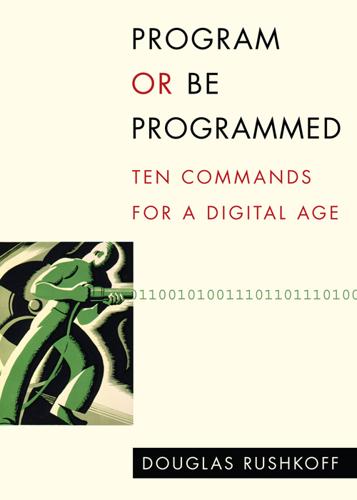
Program Or Be Programmed: Ten Commands for a Digital Age
by
Douglas Rushkoff
Published 1 Nov 2010
The truth about what they do and how well they do it is already a topic of conversation. The real way to “go social,” if they wanted to, would not be to accumulate more page friends or message followers, but rather to get their friends and followers to befriend and follow one another. That’s how to create a culture in a peer-to-peer, networked medium. Instead of looking to monetize or otherwise intercede between existing social connections, those promoting networks should be looking to foster connections between people who are as yet unknown to each other yet potentially in need of each other. And then let them go about their business—or their socializing.
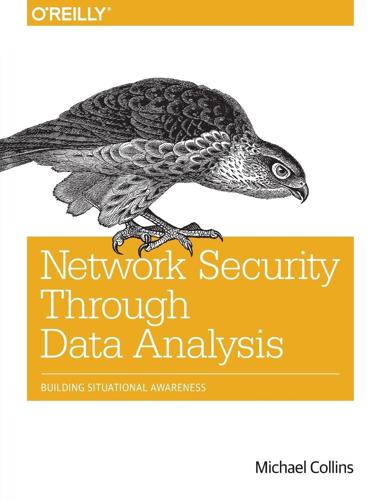
Network Security Through Data Analysis: Building Situational Awareness
by
Michael S Collins
Published 23 Feb 2014
These attacks rely on a target clicking a link or accessing a file, which requires that the bait (the filename or story surrounding it) be attractive enough to merit a click. At the time of this writing, for example, there’s a spate of phishing attacks using credit ratings as the bait—the earliest informed me that my credit rating had risen and the latest batch is more ominously warning me of the consequences of a recently dropped credit rating. On peer-to-peer networks, attackers will drop Trojans with the names of current games or albums in order to attract victims. Even in this case, “surveillance” is still possible. The phishing attacks done in many APT attacks often depend on scouting out the population and posting habits of a site before identifying victims likely to respond to a crafted mail.
…
An SMTP client in one interaction may operate as a server for another interaction, and there should be interactions between each other. Spammers, however, operate effectively as superclients—they talk to servers, but never operate as a server for anyone else. This behavior manifests as a low clustering coefficient. Remove the spammers, and the SMTP network starts to look more like a peer-to-peer network and the clustering coefficent rises. Figure 13-3. Clustering coefficient and large email networks Analyzing Graphs Graph analysis can be used for a number of purposes. Centrality metrics are a useful tool both for engineering and for forensic analysis, while components and graph attributes can be used to generate a number of alarms.

The Boy Who Could Change the World: The Writings of Aaron Swartz
by
Aaron Swartz
and
Lawrence Lessig
Published 5 Jan 2016
Since the government can’t open the envelope (we use crypto to ensure this), they have no idea of knowing which gift certificate they signed, so they can’t associate you with it when you spend it later. Now, to anonymously submit the gift certificates to the government, you reuse the peer-to-peer network you downloaded the songs from as a remailer network. You encrypt your gift certificate so only the government can read it, then you pass it to a friend on the peer-to-peer network, who passes it to a friend, etc., until someone gives it to the government. The government publishes the list of identifiers for gift certificates they’ve received, so you can make sure it got through and resend it if it didn’t.
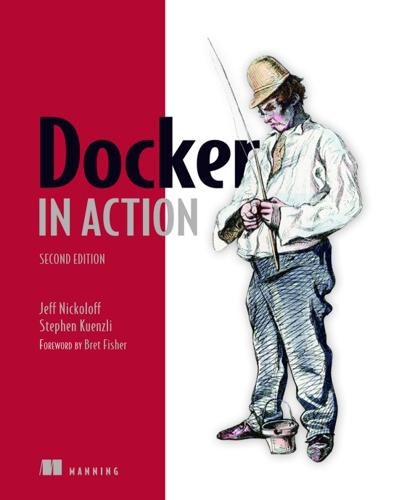
Docker in Action
by
Jeff Nickoloff
and
Stephen Kuenzli
Published 10 Dec 2019
If you need greater control over transport, storage, and artifact management, you should consider working directly with images in a manual distribution system. 9.4. Manual image publishing and distribution Images are files, and you can distribute them as you would any other file. It’s common to see software available for download on websites, File Transport Protocol (FTP) servers, corporate storage networks, or via peer-to-peer networks. You could use any of these distribution channels for image distribution. You can even use email or a USB drive in cases where you know your image recipients. Manual image distribution methods provide the ultimate in flexibility, enabling varied use cases such as distributing images to many people at an event simultaneously or to a secure air-gapped network.
…
imperative pattern import command, 2nd, 3rd indexes, 2nd info subcommand ingress network, 2nd, 3rd init command - -init option init systems initialization processes in-memory storage insecure.key inspect command, 2nd installing software Docker registries, working with from command line from Dockerfiles installation files and isolation container filesystem abstraction and isolation filesystem structure image layers layer relationships union filesystems, weaknesses of using alternative registries using Docker Hub from website working with images as files integrity, artifact - -interactive (-i) option interactive containers, running interfaces, network intermediate images interprocess communication (IPC) IP (Internet Protocol) IP address IPC (interprocess communication) - -ipc flag IPC namespace IPC primitives - -ipc=host option iptables rule ipvlan driver ipvs rule isolation, containers and J jail Jenkins JVM (Java Virtual Machine), 2nd K key/value pairs kill program, Linux Kubernetes, 2nd L label confinement, SELinux - -label flag LABEL instruction, 2nd LABEL maintainer Label Schema project, 2nd - -label-add option - -label-rm option LAMP (Linux, Apache, MySQL PHP) stack lamp-test container latest tag, 2nd, 3rd, 4th layer IDs layer relationships level label, SELinux LFTP client lighthouse container linting tool Linux Security Modules (LSM) Linux, Apache, MySQL PHP (LAMP) stack Linux’s user (USR) namespace lists (block sequences) load balancing, 2nd load command local value local volume driver local volume plugin localhost node logging service login command logs command longevity control loopback interface, 2nd low-level system services LSM (Linux Security Modules) M -m flag MAC_ADMIN capability macvlan driver mailer container, 2nd mailer program mailer-base image mailer-logging image Major.Minor.Patch scheme, 2nd make command manager1 node, 2nd, 3rd manager2 node, 2nd manager3 node manual image publishing mariadb container MariaDB database mariadb key, 2nd mariadb service maturity Maven tool Memcached - -memory flag memory limits Mercurial metaconflicts, eliminating container state and dependencies flexible container identification metadata naming Dockerfiles organizing metadata with labels overview record metadata at image build time, 2nd MNT namespaces, 2nd, 3rd mod_ubuntu container, 2nd MongoDB - -mount flag, 2nd - -mount option mount points blind shared multistage Dockerfile multi-tier-app_api, 2nd multi-tier-app_postgres multi-tier-app_private network, 2nd multi-tier-app_public mutable tags my-databases stack my-databases_default network my-databases_mariadb MySQL, 2nd, 3rd N - -name flag namespaces, Linux NAT (network address translation) nc client program - -net host flag NET namespace NET_ADMIN capability NET_RAW capability network address translation (NAT) - -network flag - -network host option network interface network-explorer container networks overview policies for, lack of with Compose networks property NGINX web server, 2nd, 3rd, 4th, 5th nginx:latest, 2nd, 3rd - -no-cache flag node.hostname attribute node.id attribute NodePort publishing node.role attribute - -no-healthcheck flagp none network, 2nd, 3rd - -no-trunc option npm package manager, 2nd nslookup lighthouse null driver O –o flag ONBUILD instruction onbuild suffixes - -output (-o) option overlay networks, 2nd discovering services on isolating service-to-service communication with OverlayFS P package managers passwd file - -password flag pause option peer-to-peer networks Permission denied message pg-data volume pgdata volume PID (process identifier) namespace, 2nd, 3rd PID, 2nd - -pid flag pip package manager placement constraints plain style plath container Play with Docker (PWD), 2nd polymorphic tools port conflict portability, improving ports ports property postgres database postgres key postgres service, 2nd, 3rd, 4th, 5th postgres user POSTGRES_* environment variable POSTGRES_DB variable POSTGRES_HOST variable POSTGRES_PASSWORD variable PostgreSQL database, 2nd postgresql driver POSTGRES_USER variable private hosted repositories private network, 2nd, 3rd private registries consuming images from registry performance of registry image, using private zone - -privileged flag process identifier (PID) namespace, 2nd, 3rd protecting computer protocols, network - -prune flag ps command public hosted repositories public network, 2nd, 3rd - -publish (-p) option PublishMode pull commands push command, 2nd PWD (Play with Docker), 2nd Q Quay.io, 2nd - -quiet (-q) flag R reader container read-only filesystems - -read-only flag readonly=true argument registries alternative working with from command line registry repository remove command replicas property replicated mode replicated services repositories reserved status resource controls adjusting OS feature access with capabilities allowances, setting access to devices CPU memory limits building use-case-appropriate containers applications high-level system services low-level system services running containers with full privileges sharing memory strengthening containers with enhanced tools users and Linux’s user (USR) namespace run-as users UID remapping volumes and - -restart flag, 2nd restart_policy REX-Ray, 2nd rm command - -rm flag rm operation - -rm option role label, SELinux roll forward command rollback - -rollback flag rollout, automated rsync tool rules run command, 2nd, 3rd, 4th RUN instruction, 2nd, 3rd, 4th, 5th run-as users runit, 2nd Running state Running x minutes ago state runtime stage, 2nd Rust programming language S scanners, using to identify vulnerabilities scope property, 2nd scp tooling scratch image, 2nd scratch repository $SECRET variable secrets, 2nd secrets key, 2nd security modules - -security-opt flag sed command SELinux semantic versioning Serverspec Service converged service create subcommand service rollback subcommand service-level agreement (SLA) services, 2nd, 3rd autoscaling declarative service environments with Compose collections of services YAML primer “Hello World” automated resurrection and replication automated rollout service health and rollback load balancing, service discovery, and networks with Compose placing service tasks on clusters constraining where tasks run deploying real applications onto real clusters replicating services using global services for one task per node running on Swarm cluster, communicating with load balancing overlay networks routing client requests to services by using Swarm routing mesh stateful services and preserving data services key services property - -ServiceV2 flag setgid attribute setuid attribute sh program shared mount points shell form shell variables shipping containers short-form flags SIG_HUP signal SIG_KILL signal Simple Email Service SLA (service-level agreement) software finding identifying installation files and isolation container filesystem abstraction and isolation filesystem structure image layers layer relationships union filesystems, weaknesses of installing from Dockerfiles using alternative registries using Docker Hub from website working with Docker registries from command line working with images as files Spring Boot framework src parameter SSH protocol stack deploy command stacks start period startup scripts and multiprocess containers, 2nd environmental preconditions validation health checks initialization processes stateful services STATUS column stop command storage in-memory mount points blind shared volume plugins volumes cleaning up container-independent data management using using with NoSQL databases - -storage-driver (-s) option subgid map subuid map success status SUID and SGID permissions suid-enabled program supervisord process, 2nd, 3rd swap space Swarm, 2nd, 3rd, 4th, 5th, 6th Swarm Admin Guide swarm value Swarm3K project SYS_ADMIN capability SYSLOG capability SYS_MODULE capability SYS_NICE capability SYS_RAWIO capability SYS_RESOURCE capability System up message systemd SYS_TIME capability SysV T -t option - -tag (-t) flag tag command tagging images, patterns for background configuration image per deployment stage continuous delivery with unique tags semantic versioning TAR archive files - -target option tasks TCP (Transmission Control Protocol) testing images in build pipelines time-out tini TLS (Transport Layer Security) tmpfs device tmpfs filesystem, 2nd tmpfs-mode option tmpfs-size option Tomcat top subcommand Transmission Control Protocol (TCP) Transport Layer Security (TLS) transportation speed, of distribution method Travis CI tree root point trusted repository - -tty (-t) option type label, SELinux type option type=bind option U Ubuntu image, 2nd ubuntu:latest ubuntu:latest image, 2nd ubuntu-git images, 2nd, 3rd ubuntu-git:removed image UDP (User Datagram Protocol) UFS (union filesystem), 2nd, 3rd, 4th UID (user ID) UID remapping unconfined value union filesystem (UFS), 2nd, 3rd, 4th unique ID (identifier) unique tags Unique Tags scheme update command update_config - -update-failure-action flag - -update-max-failure-ratio flag Upstart - -user (-u) flag user (USR) namespace, 2nd, 3rd User Datagram Protocol (UDP) user ID (UID) USER instruction, 2nd user label, SELinux user namespaces user permissions user space memory - -username flag username/repository pattern user-network userns-remap option, 2nd USR (Linux’s user) namespace USR (user) namespace, 2nd, 3rd UTS namespace V v option v2 tag, 2nd VCS (version-control system) version property VERSION variable, 2nd version-control system (VCS) versioning practices VIP (virtual IP) addresses, 2nd, 3rd vip endpoint mode virtual machine (VM), 2nd, 3rd, 4th VirtualIPs virtualization, containers different than visibility, of distribution method VM (virtual machine), 2nd, 3rd, 4th _vNNN character sequence - -volume flag VOLUME instruction volume plugins volumes, 2nd, 3rd, 4th cleaning up container-independent data management using using with NoSQL databases volumes key volumes property - -volumes-from flag vulnerabilities, using scanners to identify W watcher program web browsers WEB_HOST environment variable wget program whoami command Windows Subsystem for Linux (WSL) WordPress, 2nd, 3rd, 4th, 5th WORDPRESS_AUTH_KEY environment variable WORDPRESS_AUTH_SALT environment variable WORDPRESS_DB_HOST environment variable WORDPRESS_DB_NAME environment variable WORDPRESS_DB_PASSWORD environment variable WORDPRESS_DB_USER environment variable WORDPRESS_LOGGED_IN_KEY environment variable WORDPRESS_LOGGED_IN_SALT environment variable WORDPRESS_NONCE_KEY environment variable WORDPRESS_NONCE_SALT environment variable WORDPRESS_SECURE_AUTH_KEY environment variable WORDPRESS_SECURE_AUTH_SALT environment variable WORKDIR instruction wp container, 2nd WSL (Windows Subsystem for Linux) Y YAML (Yet Another Markup Language), 2nd YUM Z zone label, 2nd List of Figures Chapter 1.

Boom: Bubbles and the End of Stagnation
by
Byrne Hobart
and
Tobias Huber
Published 29 Oct 2024
(The quasi-religious zeal of Bitcoin “hodlers” can be cryptographically verified by the number of bitcoin that haven’t moved after a market crash, which is etched into the blockchain—but we’re getting ahead of ourselves.) It’s the rare asset that has been called too expensive at $1 and too cheap at $65,000 without significant changes in its fundamentals. Bitcoin: From zero to one Bitcoin combines various preexisting technical components, such as peer-to-peer network technology, asymmetric public-key cryptography, and proof of work algorithms. It’s not the first attempt at a virtual currency, but it is the first virtual currency to achieve widespread adoption. 297 DigiCash, one of the earliest and most prominent digital money firms, debuted in 1989. Founded by computer scientist David Chaum, DigiCash applied public-key cryptography to the specific problem of monetary transactions, attempting to create cryptographically secure digital cash that emulated the properties of physical money. 298 DigiCash’s untraceable digital currency, eCash, attracted interest from banks and from Microsoft, which at one point considered integrating the currency into Windows.
…
Only by embracing a radically different future with singular commitment and sacrifice, often in defiance of the many, can we release ourselves from stagnation, stasis, and decline. This is our transcendent mission. 354 Similar to today’s Bitcoiners, many early cypherpunks envisioned the free exchange of money and information in anonymous peer-to-peer networks outside the control of the state as a means to radically transform social power structures. 355 As an aside, it’s worth noting that cryptography, by enabling modern e-commerce, has probably produced more wealth overall than cryptocurrency, even though cryptocurrency receives more public attention, even usurping the moniker “crypto.” 356 George Soros, “Financial Markets,” speech delivered at Central European University, October 27, 2009, Open Society Foundations, https://www.opensocietyfoundations.org/uploads/2b96bb8c-e2e1-4d88-9eea-badf16d0a2b8/george-soros-financial-markets-transcript.pdf. 357 The unifying sense of optimism needs to be definite and the vision constrained.

Mood Machine: The Rise of Spotify and the Costs of the Perfect Playlist
by
Liz Pelly
Published 7 Jan 2025
But no, we never had a perfect answer for this, and I still don’t have it.” * * * Some researchers have connected the mainstreaming of piracy in Sweden directly to how the country treated the internet as a public good: starting in the nineties, the government provided high-quality public broadband for much of its population, allowing file-sharing and peer-to-peer technology to quickly take hold. And while Sweden had passed legislation discouraging piracy in 2005, it also had privacy laws preventing companies from easily attaching an IP address to a name in order to enforce penalties. Labels had trouble identifying downloaders. Another factor was simply that copyright laws were less rigid in European countries than in the U.S., which was largely considered to be the force exporting aggressive copyright penalties across the world at the time.8 In the spring of 2006, the U.S. government threatened to impose trade sanctions on Sweden through the World Trade Organization if it did not “effectively combat crimes against copyright law,” a spokesperson for Sweden’s Justice Department said at the time.
…
This was the season when Ek began pitching the thirty-six-year-old tech entrepreneur Martin Lorentzon—whose affiliate marketing company was soon to go public and make him a multimillionaire—on the idea that would become Spotify. The concept was not yet music-specific, but he wanted to build something that would combine advertising, streaming, and peer-to-peer technology (which also underpinned file-sharing).1 Ek and Lorentzon had some things in common: they both knew a lot about search engine optimization, metadata, and selling ads. But they were by no means music guys. The pair had met for the first time a few months earlier, when Ek unsuccessfully pitched Lorentzon’s company on a search product.
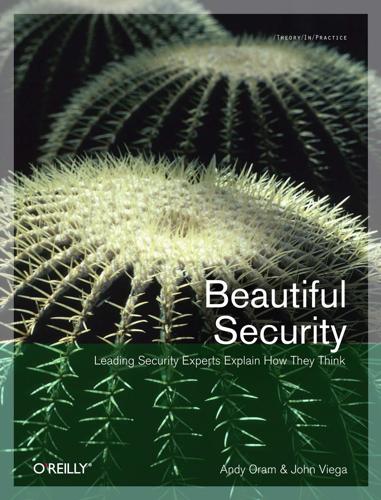
Beautiful security
by
Andy Oram
and
John Viega
Published 15 Dec 2009
Brazos, 206 Gutmann, Peter, 117 H handshakes, 28 Hannaford Brothers security breach, 67, 68, 211 hash algorithms data translucency and, 241 LAN Manager, 4 SET procedure, 78 INDEX 273 Windows NT, 5 Hasselbacher, Kyle, 127 health care field infosecurity and, 208 security metrics, 34–38 Health Insurance Portability and Accountability Act (HIPAA), 80, 214 hierarchical trust cumulative trust comparison, 110 defined, 109 HijackThis change tracker, 92 HIPAA (Health Insurance Portability and Accountability Act), 80, 214 HIPS (Host-based Intrusion Prevention Systems), 253 Holz, Thorsten, 145 Homeland Security, Department of, 36 honeyclients defined, 133 future of, 146 implementation limitations, 143 open source, 133–135 operational results, 139–140 operational steps, 134, 137 related work, 144–145 second-generation, 135–138 storing and correlating data, 140 honeymonkeys, 144 Honeynet Project, 138, 145 honeypot systems defined, 133 proliferation of malware, 252 Honeywall, 138 host logging, 232–237 Host-based Intrusion Prevention Systems (HIPS), 253 hostile environments confirmation traps and, 10 specialization in, 249 hotspot services, 22 House Committee on Homeland Security, 201 Howard, Michael, 195 HTTPS protocol, 66 Hubbard, Dan, 144 Hula Direct ad broker, 98, 99 I IBM, social networking and, 159 IDEA (International Data Encryption Algorithm), 117, 118 iDefense Labs, 59, 156 identity certificates, 111 identity management services, 154 identity theft devaluing credit card information, 71 274 INDEX wireless networking, 23–25 IDS (intrusion detection system) building a resilient model, 233–237 challenges detecting botnets, 231 false positives, 217 functionality, 226 honeyclient support, 133, 144 host logging, 232–237 host-based, 253 improving detection with context, 228–231 limitations, 227, 229 log handling considerations, 218 Iframedollars.biz, 132 incident detection, 233 (see also malicious attacks) building a resilient model, 233–237 host logging and, 232–237 improving with context, 228–231 percentage identified, 226, 227 SQL Slammer worm, 225 InCtrl change tracker, 92 information dealers defined, 64 IRC data exchange, 67 malware producers and, 64 sources of information, 68 information security as long tail market, 165–167 balance in, 202–207 basic concepts, 200 cloud computing, 150–154 communication considerations, 207–211 connecting people and processes, 154–158 doing the right thing, 211–212 historical review, 248–251 host logging, 232 need for new strategies, 247 organizational culture, 200–202 overview, 147–150 September 11, 2001 and, 249 social networking and, 158–162 strict scrutiny, 252–254 suggested practices, 257 supercrunching, 153, 162–164 taking a security history, 44–46 web services, 150–154 Information Security Economics, 162–164 Information Security Group, 168 injected iFrames, 69 International Data Encryption Algorithm (IDEA), 117, 118 International Tariff on Arms Regulations (ITAR), 3 Internet Explorer exploit-based installs and, 92 open source honeyclients, 134 recent vulnerabilities, 131 Internet Relay Chat (see IRC) intranets, security flaws, 25 introducers in PGP, 113 (see also certificate authorities) defined, 109, 112 extended, 123 Web of Trust process, 113 intrusion detection system (see IDS) investment metrics, 47 IRC (Internet Relay Chat) botnet communication, 66 cyber underground communication, 65, 67 ISO 2700x standard, 214 ISPs, costs versus profits, 16–17 ITAR (International Tariff on Arms Regulations), 3 ITIL regulation, 214 iTunes, 165 J J/Secure, 76 JCB International, 76 Jericho Forum, 156 Jerusalem virus, 248 K Kaminsky, Dan, 161 KBA (knowledge-based authentication), 68 key loggers as information source, 68 specialization in, 249 key signatures bloat and harassment, 124 certificate support, 111 exportable, 125 freshness considerations, 122 in-certificate preferences, 126 Web of Trust, 113, 115, 120 keyrings, 112 keys (see certificates; public key cryptography) keyservers defined, 112 key-editing policies, 126 PGP Global Directory, 127 Klez virus, 248 knowledge-based authentication (KBA), 68 Kovah, Xeno, 138 L L0phtCrack government interest in, 13 learned helplessness example, 3–6 Lai, Xuejia, 117 LAN Manager, 4 Lancaster, Branko, 117 Langevin, Jim, 201 LANs, physical security inherent in, 28 Lansky, Jared, 90–92 learned helplessness backward compatibility and, 2 defined, 2, 7 L0phtCrack example, 3–6 overview, 2–7 Leeson, Nick, 38–49 legacy systems backward compatibility, 7 e-commerce security and, 74 end-of-life upgrades, 2, 7 password security and, 4–6 legal considerations balance in information security, 202–207 communication and information security, 207– 211 doing the right thing, 211–212 information security concepts, 200 log handling, 223 organizational culture, 200–202 value of logs, 214 Levy, Steven, 119 LinkShare affiliate network, 102 Linux systems, 221 log management tools, 222–223 log messages, 215 logs case study, 218–221 challenges with, 216–218 classifying, 214 database, 221 defined, 215 email tracking, 221 future possibilities, 221–223 host logging, 232–237 incident detection and, 226, 228 regulatory compliance and, 214 universal standard considerations, 217 usefulness of, 153, 214, 215 long straddle trading strategy, 40 Lucent (see Bell Labs) Lynch, Aidan, 144 M machine learning, 254 malicious attacks, 228 (see also cyber underground; incident detection) attack indicators, 233–237 Blaster, 248 INDEX 275 Code Red, 248 confirmation traps, 10 directionality of, 227 energy companies vulnerabilities, 18 identity theft, 22–28 Jerusalem, 248 Klez, 248 Melissa, 248 Michelangelo, 248 Morris, 248 MyDoom, 248 Nimda, 248 Pakistani Flu, 248 Slammer, 248 Snort signatures, 228 Sober, 248 Sobig, 248 SQL Slammer worm, 225–227, 229 Symantec reports on, 229 VBS/Loveletter—“I Love you”, 248 W32.Gaobot worm, 229 malvertisements, 92–94 malware anti-virus software and, 251 as cyber attack method, 69 banking trojans, 141, 249 client-side exploitation, 15, 132, 141–143 common distribution methods, 69 current market values, 67 directionality of attacks, 227 gaming trojans, 141, 249 historical review, 248–249 polymorphic, 70 production cycle, 64 streamlining identification of, 254 targeted advertising, 250 testing, 65 zero-day exploits, 252 malware producers defined, 64 information dealers and, 64 polymorphic malware, 70 testing code, 65 man-in-the-middle attacks, 25 manual penetration testing, 190 Massey, James, 117 MasterCard 3-D Secure protocol, 76 SET protocol, 78 Maurer, Ueli, 128 MBNA, 79 McAfee online safety survey, 187 SiteAdvisor, 97 vulnerability management, 152 276 INDEX McBurnett, Neal, 128 McCabe, Jim, 178, 179 McCaul, Mike, 201 McDougle, John, 178 McGraw, Gary, 186 McManus, John, 171–182 Mean Time Between Security Incidents (MTBSI), 48 Mean Time to Repair (MTTR), 58 Mean Time to Repair Security Incidents (MTTRSI), 48 Media Guard product, 94 medical field infosecurity and, 208 security metrics, 34–38 Melissa virus, 248 Merchant Server Plug-in (MPI), 77 meta-introducers, 123 metrician, 34 metrics Barings Bank security breach, 38–49 coverage, 46 for data responsibility, 72 health care field, 34–38 investment, 47 measuring ROI, 163 scan coverage, 58 software development lifecycle and, 172–174, 189 TJX security breach, 49–59 treatment effect, 48 MetricsCenter technology, 45 MetricsCenter.org, 54 Michelangelo virus, 248 microchunking, 166 Microsoft, 134 (see also Internet Explorer) Authenticode, 110 Azure cloud operating system, 152 Commission on Cyber Security, 201 CPC advertising, 100 hierarchical trust, 110 honeymonkeys, 144 L0phtCrack example, 3–6 security controls in SDLC, 194 SQL Server, 225 supporting legacy systems, 7 testing approach, 10 Unix systems and, 8 MITRE Corporation, 135, 222 money, 44, 70, 141 (see also financial institutions; PCI) Monroe Doctrine, 201 Morris virus, 248 mothership systems, 230 Motorola Corporation, 31 Mozilla Firefox honeyclient support, 140, 145 malware exploits and, 141 MPI (Merchant Server Plug-in), 77 MTBSI (Mean Time Between Security Incidents), 48 MTTR (Mean Time to Repair), 58 MTTRSI (Mean Time to Repair Security Incidents), 48 Murray, Daragh, 144 MyDoom virus, 248 MySpace social network, 159 N naïveté client counterpart of, 8–9 learned helplessness and, 2–7 NASA background, 171 perception of closed systems, 172 software development lifecycle, 172–174, 178– 181 National Institute for Standards, 159 National Office for Cyberspace (NOC), 201, 202 Nazario, Jose, 145 newsgroups, 250 Nichols, Elizabeth, 33–61 Nichols, Elizabeth A., 30 Nimda virus, 248 NOC (National Office for Cyberspace), 201, 202 NTLM authentication, 6 O OCC, 191 off-the-shelf software (see software acquisition) Office Max, 50 online advertising advertisers as victims, 98–105 attacks on users, 89–98 CPA advertising, 102–103 CPC advertising, 100–101 CPM advertising, 100–103 creating accountability, 105 deceptive ads, 94–98 exploit-laden banner ads, 89–92 false impressions, 98–99 fighting fraud, 103–104 malvertisements, 92–94 special procurement challenges, 104 targeted, 250 online advertising, targeted, 249 online forums, 250 Open Security Foundation, 55 open source honeyclients, 133–135 Open Web Application Security Project (see OWASP) OpenID identity management, 154 OpenPGP standard/protocol background, 108 certification support, 111, 112 designated revokers, 122 direct trust, 109 exportable signatures, 125 extended introducers, 123 in-certificate preferences, 126 key support, 112 key-editing policies, 126 revoking certificates, 122 OpenSocial API, 159 operating systems, host logging, 232, 236 OptOut spyware removal tool, 251 Orange Book, 213 organizational culture, 200–202 outsourcing extending security initiative to, 190 trends in, 154 vulnerability research, 156 OWASP (Open Web Application Security Project) background, 159 CLASP methodology, 187 Top 10 list, 187 P P2P (peer-to-peer) networks botnet communication, 66 honeyclient considerations, 146 packet sniffers, 92 packets handshake, 28 SQL Slammer worm, 227 Pakistani Flu virus, 248 PAN (Primary Account Number), 77 Panda Labs, 69 PAR (Payer Authentication Request), 77 PARAM tag, 94 passive sniffing, 9 passphrases, 29 password grinding, 28 password-cracking tools L0phtCrack example, 3–6 passphrases and, 29 passwords authentication security, 7 identity theft and, 24 NTLM authentication and, 6 PATHSERVER, 129 Payer Authentication Request (PAR), 77 Payment Card Industry (see PCI) INDEX 277 PayPal, 79 PCI (Payment Card Industry) Data Security Standard, 75, 82, 159, 211, 214, 237 protecting credit card data, 44 peer-to-peer networks (see P2P networks) PEM (Privacy Enhanced Mail), 117 perma-vendors, 156 Personally Identifiable Information (PII), 180 Pezzonavante honeyclient, 144 PGP (Pretty Good Privacy), 111 (see also Web of Trust) background, 107, 108, 116 backward compatibility issues, 117 Crypto Wars, 118 designated revokers, 122 encryption support, 107, 116–120 key validity, 108 patent and export problems, 117 source download, 116 trust models, 109–116 trust relationships, 108 PGP Corporation, 108 PGP Global Directory, 127 pharmware, 68 phishing 3-D Secure protocol, 77 as information source, 68 botnet support, 66 challenges detecting, 231 spam and, 70 specialization in, 249 PhoneyC website, 145 PII (Personally Identifiable Information), 180 Piper, Fred, 168 PKI (Public Key Infrastructure) authoritative keys, 123 defined, 111 DSG support, 203 revoking certificates, 120 SET considerations, 79 PlexLogic, 45 Plumb, Colin, 119 port scanning, 231 pragmatic security, 200, 209 Pre-Shared Key (PSK), 28 Pretty Good Privacy (see PGP) Price, Will, 127 Primary Account Number (PAN), 77 Privacy Enhanced Mail (PEM), 117 proof-of-concept project, 191–193 Provos, Niels, 145 PSK (Pre-Shared Key), 28 psychological traps confirmation traps, 10–14 278 INDEX functional fixation, 14–20 learned helplessness, 2 public key cryptography cumulative trust systems, 111 key revocation, 121 PGP support, 107 RSA algorithm, 117 SET support, 78 steganographic applications, 245 validity, 108 Public Key Infrastructure (see PKI) Public Key Partners, 118 put options, 39 Q Qualys vulnerability management, 151 R Raduege, Harry, 201 Regular, Bob, 90 regulatory compliance (see legal considerations) Reiter, Mark, 129 Reliable Software Technologies, 171, 173 reputation economy, 167 resource dealers, 64 Return on Investment (ROI), 163, 205–207 Return on Security Investment (ROSI), 206 Returnil, 254, 255, 256, 257 revoking certificates, 120–122 RFC 1991, 108, 119 RFC 3156, 108 RFC 4880, 108 Right Media, 94 ROI (Return on Investment), 163, 205–207 root certificates defined, 109 direct trust, 110 rootkits example investigating, 220 Rustock.C, 252 specialization in, 249 ROSI (Return on Security Investment), 206 routers DDoS attacks on, 16 host logging, 232 watch lists, 231 Routh, Jim, 183–197 RSA Data Security Incorporated, 117 RSA public-key algorithm, 117 RSAREF library, 117 Rustock.C rootkit, 252 S Sabett, Randy V., 199–212 sandboxing functionality, 254 HIPS support, 253 need for new strategies, 248 Santa Fe Group, 44 Sarbanes-Oxley Act (SOX), 80, 214 SCADA systems, 18 Schoen, Seth, 127 SDLC (see software development lifecycle) Second Life virtual world, 159 Secret Service Shadowcrew network and, 65 TJX security breach and, 50 Secunia, 156 Secure Electronic Transaction (see SET) security breaches attorney involvement in investigating, 211 Barings Bank, 38–49 California data privacy law, 203–205 cyber underground and, 63–72 databases and, 239 impact of, 208 logs in investigating, 218–221 public data sources, 59 tiger team responses, 210–211 TJX, 49–59 security certificates defined, 22 encryption and, 22, 24 fundamental flaw, 25 paying attention to, 26 wireless access points, 26, 27 Security Event Managers (SEMs), 153 security metrics (see metrics) Security Metrics Catalog project, 54 security traps (see psychological traps) SecurityFocus database, 132 SecurityMetrics.org, 54 SEI (Software Engineering Institute), 176 Seifert, Christian, 138, 145 self-signed certificates, 109 SEMs (Security Event Managers), 153 separation of duties, 39 September 11, 2001, 249 server applications, host logging, 232 Service Set Identifier (SSID), 52 service-oriented architecture (SOA), 150 SET (Secure Electronic Transaction) background, 78 evaluation of, 79 protections supported, 78 transaction process, 79 SHA256 hash algorithm, 241 Shadowcrew network, 65 short straddle trading strategy, 39, 40 signature harassment, 125 Sinclair, Upton, 149 Skinner, B.
…
Brazos, 206 Gutmann, Peter, 117 H handshakes, 28 Hannaford Brothers security breach, 67, 68, 211 hash algorithms data translucency and, 241 LAN Manager, 4 SET procedure, 78 INDEX 273 Windows NT, 5 Hasselbacher, Kyle, 127 health care field infosecurity and, 208 security metrics, 34–38 Health Insurance Portability and Accountability Act (HIPAA), 80, 214 hierarchical trust cumulative trust comparison, 110 defined, 109 HijackThis change tracker, 92 HIPAA (Health Insurance Portability and Accountability Act), 80, 214 HIPS (Host-based Intrusion Prevention Systems), 253 Holz, Thorsten, 145 Homeland Security, Department of, 36 honeyclients defined, 133 future of, 146 implementation limitations, 143 open source, 133–135 operational results, 139–140 operational steps, 134, 137 related work, 144–145 second-generation, 135–138 storing and correlating data, 140 honeymonkeys, 144 Honeynet Project, 138, 145 honeypot systems defined, 133 proliferation of malware, 252 Honeywall, 138 host logging, 232–237 Host-based Intrusion Prevention Systems (HIPS), 253 hostile environments confirmation traps and, 10 specialization in, 249 hotspot services, 22 House Committee on Homeland Security, 201 Howard, Michael, 195 HTTPS protocol, 66 Hubbard, Dan, 144 Hula Direct ad broker, 98, 99 I IBM, social networking and, 159 IDEA (International Data Encryption Algorithm), 117, 118 iDefense Labs, 59, 156 identity certificates, 111 identity management services, 154 identity theft devaluing credit card information, 71 274 INDEX wireless networking, 23–25 IDS (intrusion detection system) building a resilient model, 233–237 challenges detecting botnets, 231 false positives, 217 functionality, 226 honeyclient support, 133, 144 host logging, 232–237 host-based, 253 improving detection with context, 228–231 limitations, 227, 229 log handling considerations, 218 Iframedollars.biz, 132 incident detection, 233 (see also malicious attacks) building a resilient model, 233–237 host logging and, 232–237 improving with context, 228–231 percentage identified, 226, 227 SQL Slammer worm, 225 InCtrl change tracker, 92 information dealers defined, 64 IRC data exchange, 67 malware producers and, 64 sources of information, 68 information security as long tail market, 165–167 balance in, 202–207 basic concepts, 200 cloud computing, 150–154 communication considerations, 207–211 connecting people and processes, 154–158 doing the right thing, 211–212 historical review, 248–251 host logging, 232 need for new strategies, 247 organizational culture, 200–202 overview, 147–150 September 11, 2001 and, 249 social networking and, 158–162 strict scrutiny, 252–254 suggested practices, 257 supercrunching, 153, 162–164 taking a security history, 44–46 web services, 150–154 Information Security Economics, 162–164 Information Security Group, 168 injected iFrames, 69 International Data Encryption Algorithm (IDEA), 117, 118 International Tariff on Arms Regulations (ITAR), 3 Internet Explorer exploit-based installs and, 92 open source honeyclients, 134 recent vulnerabilities, 131 Internet Relay Chat (see IRC) intranets, security flaws, 25 introducers in PGP, 113 (see also certificate authorities) defined, 109, 112 extended, 123 Web of Trust process, 113 intrusion detection system (see IDS) investment metrics, 47 IRC (Internet Relay Chat) botnet communication, 66 cyber underground communication, 65, 67 ISO 2700x standard, 214 ISPs, costs versus profits, 16–17 ITAR (International Tariff on Arms Regulations), 3 ITIL regulation, 214 iTunes, 165 J J/Secure, 76 JCB International, 76 Jericho Forum, 156 Jerusalem virus, 248 K Kaminsky, Dan, 161 KBA (knowledge-based authentication), 68 key loggers as information source, 68 specialization in, 249 key signatures bloat and harassment, 124 certificate support, 111 exportable, 125 freshness considerations, 122 in-certificate preferences, 126 Web of Trust, 113, 115, 120 keyrings, 112 keys (see certificates; public key cryptography) keyservers defined, 112 key-editing policies, 126 PGP Global Directory, 127 Klez virus, 248 knowledge-based authentication (KBA), 68 Kovah, Xeno, 138 L L0phtCrack government interest in, 13 learned helplessness example, 3–6 Lai, Xuejia, 117 LAN Manager, 4 Lancaster, Branko, 117 Langevin, Jim, 201 LANs, physical security inherent in, 28 Lansky, Jared, 90–92 learned helplessness backward compatibility and, 2 defined, 2, 7 L0phtCrack example, 3–6 overview, 2–7 Leeson, Nick, 38–49 legacy systems backward compatibility, 7 e-commerce security and, 74 end-of-life upgrades, 2, 7 password security and, 4–6 legal considerations balance in information security, 202–207 communication and information security, 207– 211 doing the right thing, 211–212 information security concepts, 200 log handling, 223 organizational culture, 200–202 value of logs, 214 Levy, Steven, 119 LinkShare affiliate network, 102 Linux systems, 221 log management tools, 222–223 log messages, 215 logs case study, 218–221 challenges with, 216–218 classifying, 214 database, 221 defined, 215 email tracking, 221 future possibilities, 221–223 host logging, 232–237 incident detection and, 226, 228 regulatory compliance and, 214 universal standard considerations, 217 usefulness of, 153, 214, 215 long straddle trading strategy, 40 Lucent (see Bell Labs) Lynch, Aidan, 144 M machine learning, 254 malicious attacks, 228 (see also cyber underground; incident detection) attack indicators, 233–237 Blaster, 248 INDEX 275 Code Red, 248 confirmation traps, 10 directionality of, 227 energy companies vulnerabilities, 18 identity theft, 22–28 Jerusalem, 248 Klez, 248 Melissa, 248 Michelangelo, 248 Morris, 248 MyDoom, 248 Nimda, 248 Pakistani Flu, 248 Slammer, 248 Snort signatures, 228 Sober, 248 Sobig, 248 SQL Slammer worm, 225–227, 229 Symantec reports on, 229 VBS/Loveletter—“I Love you”, 248 W32.Gaobot worm, 229 malvertisements, 92–94 malware anti-virus software and, 251 as cyber attack method, 69 banking trojans, 141, 249 client-side exploitation, 15, 132, 141–143 common distribution methods, 69 current market values, 67 directionality of attacks, 227 gaming trojans, 141, 249 historical review, 248–249 polymorphic, 70 production cycle, 64 streamlining identification of, 254 targeted advertising, 250 testing, 65 zero-day exploits, 252 malware producers defined, 64 information dealers and, 64 polymorphic malware, 70 testing code, 65 man-in-the-middle attacks, 25 manual penetration testing, 190 Massey, James, 117 MasterCard 3-D Secure protocol, 76 SET protocol, 78 Maurer, Ueli, 128 MBNA, 79 McAfee online safety survey, 187 SiteAdvisor, 97 vulnerability management, 152 276 INDEX McBurnett, Neal, 128 McCabe, Jim, 178, 179 McCaul, Mike, 201 McDougle, John, 178 McGraw, Gary, 186 McManus, John, 171–182 Mean Time Between Security Incidents (MTBSI), 48 Mean Time to Repair (MTTR), 58 Mean Time to Repair Security Incidents (MTTRSI), 48 Media Guard product, 94 medical field infosecurity and, 208 security metrics, 34–38 Melissa virus, 248 Merchant Server Plug-in (MPI), 77 meta-introducers, 123 metrician, 34 metrics Barings Bank security breach, 38–49 coverage, 46 for data responsibility, 72 health care field, 34–38 investment, 47 measuring ROI, 163 scan coverage, 58 software development lifecycle and, 172–174, 189 TJX security breach, 49–59 treatment effect, 48 MetricsCenter technology, 45 MetricsCenter.org, 54 Michelangelo virus, 248 microchunking, 166 Microsoft, 134 (see also Internet Explorer) Authenticode, 110 Azure cloud operating system, 152 Commission on Cyber Security, 201 CPC advertising, 100 hierarchical trust, 110 honeymonkeys, 144 L0phtCrack example, 3–6 security controls in SDLC, 194 SQL Server, 225 supporting legacy systems, 7 testing approach, 10 Unix systems and, 8 MITRE Corporation, 135, 222 money, 44, 70, 141 (see also financial institutions; PCI) Monroe Doctrine, 201 Morris virus, 248 mothership systems, 230 Motorola Corporation, 31 Mozilla Firefox honeyclient support, 140, 145 malware exploits and, 141 MPI (Merchant Server Plug-in), 77 MTBSI (Mean Time Between Security Incidents), 48 MTTR (Mean Time to Repair), 58 MTTRSI (Mean Time to Repair Security Incidents), 48 Murray, Daragh, 144 MyDoom virus, 248 MySpace social network, 159 N naïveté client counterpart of, 8–9 learned helplessness and, 2–7 NASA background, 171 perception of closed systems, 172 software development lifecycle, 172–174, 178– 181 National Institute for Standards, 159 National Office for Cyberspace (NOC), 201, 202 Nazario, Jose, 145 newsgroups, 250 Nichols, Elizabeth, 33–61 Nichols, Elizabeth A., 30 Nimda virus, 248 NOC (National Office for Cyberspace), 201, 202 NTLM authentication, 6 O OCC, 191 off-the-shelf software (see software acquisition) Office Max, 50 online advertising advertisers as victims, 98–105 attacks on users, 89–98 CPA advertising, 102–103 CPC advertising, 100–101 CPM advertising, 100–103 creating accountability, 105 deceptive ads, 94–98 exploit-laden banner ads, 89–92 false impressions, 98–99 fighting fraud, 103–104 malvertisements, 92–94 special procurement challenges, 104 targeted, 250 online advertising, targeted, 249 online forums, 250 Open Security Foundation, 55 open source honeyclients, 133–135 Open Web Application Security Project (see OWASP) OpenID identity management, 154 OpenPGP standard/protocol background, 108 certification support, 111, 112 designated revokers, 122 direct trust, 109 exportable signatures, 125 extended introducers, 123 in-certificate preferences, 126 key support, 112 key-editing policies, 126 revoking certificates, 122 OpenSocial API, 159 operating systems, host logging, 232, 236 OptOut spyware removal tool, 251 Orange Book, 213 organizational culture, 200–202 outsourcing extending security initiative to, 190 trends in, 154 vulnerability research, 156 OWASP (Open Web Application Security Project) background, 159 CLASP methodology, 187 Top 10 list, 187 P P2P (peer-to-peer) networks botnet communication, 66 honeyclient considerations, 146 packet sniffers, 92 packets handshake, 28 SQL Slammer worm, 227 Pakistani Flu virus, 248 PAN (Primary Account Number), 77 Panda Labs, 69 PAR (Payer Authentication Request), 77 PARAM tag, 94 passive sniffing, 9 passphrases, 29 password grinding, 28 password-cracking tools L0phtCrack example, 3–6 passphrases and, 29 passwords authentication security, 7 identity theft and, 24 NTLM authentication and, 6 PATHSERVER, 129 Payer Authentication Request (PAR), 77 Payment Card Industry (see PCI) INDEX 277 PayPal, 79 PCI (Payment Card Industry) Data Security Standard, 75, 82, 159, 211, 214, 237 protecting credit card data, 44 peer-to-peer networks (see P2P networks) PEM (Privacy Enhanced Mail), 117 perma-vendors, 156 Personally Identifiable Information (PII), 180 Pezzonavante honeyclient, 144 PGP (Pretty Good Privacy), 111 (see also Web of Trust) background, 107, 108, 116 backward compatibility issues, 117 Crypto Wars, 118 designated revokers, 122 encryption support, 107, 116–120 key validity, 108 patent and export problems, 117 source download, 116 trust models, 109–116 trust relationships, 108 PGP Corporation, 108 PGP Global Directory, 127 pharmware, 68 phishing 3-D Secure protocol, 77 as information source, 68 botnet support, 66 challenges detecting, 231 spam and, 70 specialization in, 249 PhoneyC website, 145 PII (Personally Identifiable Information), 180 Piper, Fred, 168 PKI (Public Key Infrastructure) authoritative keys, 123 defined, 111 DSG support, 203 revoking certificates, 120 SET considerations, 79 PlexLogic, 45 Plumb, Colin, 119 port scanning, 231 pragmatic security, 200, 209 Pre-Shared Key (PSK), 28 Pretty Good Privacy (see PGP) Price, Will, 127 Primary Account Number (PAN), 77 Privacy Enhanced Mail (PEM), 117 proof-of-concept project, 191–193 Provos, Niels, 145 PSK (Pre-Shared Key), 28 psychological traps confirmation traps, 10–14 278 INDEX functional fixation, 14–20 learned helplessness, 2 public key cryptography cumulative trust systems, 111 key revocation, 121 PGP support, 107 RSA algorithm, 117 SET support, 78 steganographic applications, 245 validity, 108 Public Key Infrastructure (see PKI) Public Key Partners, 118 put options, 39 Q Qualys vulnerability management, 151 R Raduege, Harry, 201 Regular, Bob, 90 regulatory compliance (see legal considerations) Reiter, Mark, 129 Reliable Software Technologies, 171, 173 reputation economy, 167 resource dealers, 64 Return on Investment (ROI), 163, 205–207 Return on Security Investment (ROSI), 206 Returnil, 254, 255, 256, 257 revoking certificates, 120–122 RFC 1991, 108, 119 RFC 3156, 108 RFC 4880, 108 Right Media, 94 ROI (Return on Investment), 163, 205–207 root certificates defined, 109 direct trust, 110 rootkits example investigating, 220 Rustock.C, 252 specialization in, 249 ROSI (Return on Security Investment), 206 routers DDoS attacks on, 16 host logging, 232 watch lists, 231 Routh, Jim, 183–197 RSA Data Security Incorporated, 117 RSA public-key algorithm, 117 RSAREF library, 117 Rustock.C rootkit, 252 S Sabett, Randy V., 199–212 sandboxing functionality, 254 HIPS support, 253 need for new strategies, 248 Santa Fe Group, 44 Sarbanes-Oxley Act (SOX), 80, 214 SCADA systems, 18 Schoen, Seth, 127 SDLC (see software development lifecycle) Second Life virtual world, 159 Secret Service Shadowcrew network and, 65 TJX security breach and, 50 Secunia, 156 Secure Electronic Transaction (see SET) security breaches attorney involvement in investigating, 211 Barings Bank, 38–49 California data privacy law, 203–205 cyber underground and, 63–72 databases and, 239 impact of, 208 logs in investigating, 218–221 public data sources, 59 tiger team responses, 210–211 TJX, 49–59 security certificates defined, 22 encryption and, 22, 24 fundamental flaw, 25 paying attention to, 26 wireless access points, 26, 27 Security Event Managers (SEMs), 153 security metrics (see metrics) Security Metrics Catalog project, 54 security traps (see psychological traps) SecurityFocus database, 132 SecurityMetrics.org, 54 SEI (Software Engineering Institute), 176 Seifert, Christian, 138, 145 self-signed certificates, 109 SEMs (Security Event Managers), 153 separation of duties, 39 September 11, 2001, 249 server applications, host logging, 232 Service Set Identifier (SSID), 52 service-oriented architecture (SOA), 150 SET (Secure Electronic Transaction) background, 78 evaluation of, 79 protections supported, 78 transaction process, 79 SHA256 hash algorithm, 241 Shadowcrew network, 65 short straddle trading strategy, 39, 40 signature harassment, 125 Sinclair, Upton, 149 Skinner, B.

Doughnut Economics: Seven Ways to Think Like a 21st-Century Economist
by
Kate Raworth
Published 22 Mar 2017
Fourth, publicly fund the set-up of community makerspaces – places where innovators can meet and experiment with shared use of 3D printers and essential tools for hardware construction. And lastly, encourage the spread of civic organisations – from cooperative societies and student groups to innovation clubs and neighbourhood associations – because their interconnections turn into the very nodes that bring such peer-to-peer networks alive. Going global Despite the importance of tackling national inequalities, global inequalities are still of great concern. Since 2000, global income inequality has narrowed slightly – largely thanks to poverty reduction in China – but the world as a whole still remains more unequal than any single country within it.85 And that extreme skew in global incomes helps to push humanity beyond both sides of the Doughnut.
…
Page numbers in italics denote illustrations A Aalborg, Denmark, 290 Abbott, Anthony ‘Tony’, 31 ABCD group, 148 Abramovitz, Moses, 262 absolute decoupling, 260–61 Acemoglu, Daron, 86 advertising, 58, 106–7, 112, 281 Agbodjinou, Sénamé, 231 agriculture, 5, 46, 72–3, 148, 155, 178, 181, 183 Alaska, 9 Alaska Permanent Fund, 194 Alperovitz, Gar, 177 alternative enterprise designs, 190–91 altruism, 100, 104 Amazon, 192, 196, 276 Amazon rainforest, 105–6, 253 American Economic Association, 3 American Enterprise Institute, 67 American Tobacco Corporation, 107 Andes, 54 animal spirits, 110 Anthropocene epoch, 48, 253 anthropocentrism, 115 Apertuso, 230 Apple, 85, 192 Archer Daniels Midland (ADM), 148 Arendt, Hannah, 115–16 Argentina, 55, 274 Aristotle, 32, 272 Arrow, Kenneth, 134 Articles of Association and Memoranda, 233 Arusha, Tanzania, 202 Asia Wage Floor Alliance, 177 Asian financial crisis (1997), 90 Asknature.org, 232 Athens, 57 austerity, 163 Australia, 31, 103, 177, 180, 211, 224–6, 255, 260 Austria, 263, 274 availability bias, 112 AXIOM, 230 Axtell, Robert, 150 Ayres, Robert, 263 B B Corp, 241 Babylon, 13 Baker, Josephine, 157 balancing feedback loops, 138–41, 155, 271 Ballmer, Steve, 231 Bangla Pesa, 185–6, 293 Bangladesh, 10, 226 Bank for International Settlements, 256 Bank of America, 149 Bank of England, 145, 147, 256 banking, see under finance Barnes, Peter, 201 Barroso, José Manuel, 41 Bartlett, Albert Allen ‘Al’, 247 basic income, 177, 194, 199–201 basic personal values, 107–9 Basle, Switzerland, 80 Bauwens, Michel, 197 Beckerman, Wilfred, 258 Beckham, David, 171 Beech-Nut Packing Company, 107 behavioural economics, 11, 111–14 behavioural psychology, 103, 128 Beinhocker, Eric, 158 Belgium, 236, 252 Bentham, Jeremy, 98 Benyus, Janine, 116, 218, 223–4, 227, 232, 237, 241 Berger, John, 12, 281 Berlin Wall, 141 Bermuda, 277 Bernanke, Ben, 146 Bernays, Edward, 107, 112, 281–3 Bhopal gas disaster (1984), 9 Bible, 19, 114, 151 Big Bang (1986), 87 billionaires, 171, 200, 289 biodiversity, 10, 46, 48–9, 52, 85, 115, 155, 208, 210, 242, 299 as common pool resource, 201 and land conversion, 49 and inequality, 172 and reforesting, 50 biomass, 73, 118, 210, 212, 221 biomimicry, 116, 218, 227, 229 bioplastic, 224, 293 Birmingham, West Midlands, 10 Black, Fischer, 100–101 Blair, Anthony ‘Tony’, 171 Blockchain, 187, 192 blood donation, 104, 118 Body Shop, The, 232–4 Bogotá, Colombia, 119 Bolivia, 54 Boston, Massachusetts, 3 Bowen, Alex, 261 Bowles, Sam, 104 Box, George, 22 Boyce, James, 209 Brasselberg, Jacob, 187 Brazil, 124, 226, 281, 290 bread riots, 89 Brisbane, Australia, 31 Brown, Gordon, 146 Brynjolfsson, Erik, 193, 194, 258 Buddhism, 54 buen vivir, 54 Bullitt Center, Seattle, 217 Bunge, 148 Burkina Faso, 89 Burmark, Lynell, 13 business, 36, 43, 68, 88–9 automation, 191–5, 237, 258, 278 boom and bust, 246 and circular economy, 212, 215–19, 220, 224, 227–30, 232–4, 292 and complementary currencies, 184–5, 292 and core economy, 80 and creative destruction, 142 and feedback loops, 148 and finance, 183, 184 and green growth, 261, 265, 269 and households, 63, 68 living metrics, 241 and market, 68, 88 micro-businesses, 9 and neoliberalism, 67, 87 ownership, 190–91 and political funding, 91–2, 171–2 and taxation, 23, 276–7 workers’ rights, 88, 91, 269 butterfly economy, 220–42 C C–ROADS (Climate Rapid Overview and Decision Support), 153 C40 network, 280 calculating man, 98 California, United States, 213, 224, 293 Cambodia, 254 Cameron, David, 41 Canada, 196, 255, 260, 281, 282 cancer, 124, 159, 196 Capital Institute, 236 carbon emissions, 49–50, 59, 75 and decoupling, 260, 266 and forests, 50, 52 and inequality, 58 reduction of, 184, 201, 213, 216–18, 223–7, 239–41, 260, 266 stock–flow dynamics, 152–4 taxation, 201, 213 Cargill, 148 Carney, Mark, 256 Caterpillar, 228 Catholic Church, 15, 19 Cato Institute, 67 Celts, 54 central banks, 6, 87, 145, 146, 147, 183, 184, 256 Chang, Ha-Joon, 82, 86, 90 Chaplin, Charlie, 157 Chiapas, Mexico, 121–2 Chicago Board Options Exchange (CBOE), 100–101 Chicago School, 34, 99 Chile, 7, 42 China, 1, 7, 48, 154, 289–90 automation, 193 billionaires, 200, 289 greenhouse gas emissions, 153 inequality, 164 Lake Erhai doughnut analysis, 56 open-source design, 196 poverty reduction, 151, 198 renewable energy, 239 tiered pricing, 213 Chinese Development Bank, 239 chrematistics, 32, 273 Christianity, 15, 19, 114, 151 cigarettes, 107, 124 circular economy, 220–42, 257 Circular Flow diagram, 19–20, 28, 62–7, 64, 70, 78, 87, 91, 92, 93, 262 Citigroup, 149 Citizen Reaction Study, 102 civil rights movement, 77 Cleveland, Ohio, 190 climate change, 1, 3, 5, 29, 41, 45–53, 63, 74, 75–6, 91, 141, 144, 201 circular economy, 239, 241–2 dynamics of, 152–5 and G20, 31 and GDP growth, 255, 256, 260, 280 and heuristics, 114 and human rights, 10 and values, 126 climate positive cities, 239 closed systems, 74 coffee, 221 cognitive bias, 112–14 Colander, David, 137 Colombia, 119 common-pool resources, 82–3, 181, 201–2 commons, 69, 82–4, 287 collaborative, 78, 83, 191, 195, 196, 264, 292 cultural, 83 digital, 82, 83, 192, 197, 281 and distribution, 164, 180, 181–2, 205, 267 Embedded Economy, 71, 73, 77–8, 82–4, 85, 92 knowledge, 197, 201–2, 204, 229, 231, 292 commons and money creation, see complementary currencies natural, 82, 83, 180, 181–2, 201, 265 and regeneration, 229, 242, 267, 292 and state, 85, 93, 197, 237 and systems, 160 tragedy of, 28, 62, 69, 82, 181 triumph of, 83 and values, 106, 108 Commons Trusts, 201 complementary currencies, 158, 182–8, 236, 292 complex systems, 28, 129–62 complexity science, 136–7 Consumer Reaction Study, 102 consumerism, 58, 102, 121, 280–84 cooking, 45, 80, 186 Coote, Anna, 278 Copenhagen, Denmark, 124 Copernicus, Nicolaus, 14–15 copyright, 195, 197, 204 core economy, 79–80 Corporate To Do List, 215–19 Costa Rica, 172 Council of Economic Advisers, US, 6, 37 Cox, Jo, 117 cradle to cradle, 224 creative destruction, 142 Cree, 282 Crompton, Tom, 125–6 cross-border flows, 89–90 crowdsourcing, 204 cuckoos, 32, 35, 36, 38, 40, 54, 60, 159, 244, 256, 271 currencies, 182–8, 236, 274, 292 D da Vinci, Leonardo, 13, 94–5 Dallas, Texas, 120 Daly, Herman, 74, 143, 271 Danish Nudging Network, 124 Darwin, Charles, 14 Debreu, Gerard, 134 debt, 37, 146–7, 172–3, 182–5, 247, 255, 269 decoupling, 193, 210, 258–62, 273 defeat device software, 216 deforestation, 49–50, 74, 208, 210 degenerative linear economy, 211–19, 222–3, 237 degrowth, 244 DeMartino, George, 161 democracy, 77, 171–2, 258 demurrage, 274 Denmark, 180, 275, 290 deregulation, 82, 87, 269 derivatives, 100–101, 149 Devas, Charles Stanton, 97 Dey, Suchitra, 178 Diamond, Jared, 154 diarrhoea, 5 differential calculus, 131, 132 digital revolution, 191–2, 264 diversify–select–amplify, 158 double spiral, 54 Doughnut model, 10–11, 11, 23–5, 44, 51 and aspiration, 58–9, 280–84 big picture, 28, 42, 61–93 distribution, 29, 52, 57, 58, 76, 93, 158, 163–205 ecological ceiling, 10, 11, 44, 45, 46, 49, 51, 218, 254, 295, 298 goal, 25–8, 31–60 and governance, 57, 59 growth agnosticism, 29–30, 243–85 human nature, 28–9, 94–128 and population, 57–8 regeneration, 29, 158, 206–42 social foundation, 10, 11, 44, 45, 49, 51, 58, 77, 174, 200, 254, 295–6 systems, 28, 129–62 and technology, 57, 59 Douglas, Margaret, 78–9 Dreyfus, Louis, 148 ‘Dumb and Dumber in Macroeconomics’ (Solow), 135 Durban, South Africa, 214 E Earning by Learning, 120 Earth-system science, 44–53, 115, 216, 288, 298 Easter Island, 154 Easterlin, Richard, 265–6 eBay, 105, 192 eco-literacy, 115 ecological ceiling, 10, 11, 44, 45, 46, 49, 51, 218, 254, 295, 298 Ecological Performance Standards, 241 Econ 101 course, 8, 77 Economics (Lewis), 114 Economics (Samuelson), 19–20, 63–7, 70, 74, 78, 86, 91, 92, 93, 262 Economy for the Common Good, 241 ecosystem services, 7, 116, 269 Ecuador, 54 education, 9, 43, 45, 50–52, 85, 169–70, 176, 200, 249, 279 economic, 8, 11, 18, 22, 24, 36, 287–93 environmental, 115, 239–40 girls’, 57, 124, 178, 198 online, 83, 197, 264, 290 pricing, 118–19 efficient market hypothesis, 28, 62, 68, 87 Egypt, 48, 89 Eisenstein, Charles, 116 electricity, 9, 45, 236, 240 and Bangla Pesa, 186 cars, 231 Ethereum, 187–8 and MONIAC, 75, 262 pricing, 118, 213 see also renewable energy Elizabeth II, Queen of the United Kingdom, 145 Ellen MacArthur Foundation, 220 Embedded Economy, 71–93, 263 business, 88–9 commons, 82–4 Earth, 72–6 economy, 77–8 finance, 86–8 household, 78–81 market, 81–2 power, 91–92 society, 76–7 state, 84–6 trade, 89–90 employment, 36, 37, 51, 142, 176 automation, 191–5, 237, 258, 278 labour ownership, 188–91 workers’ rights, 88, 90, 269 Empty World, 74 Engels, Friedrich, 88 environment and circular economy, 220–42, 257 conservation, 121–2 and degenerative linear economy, 211–19, 222–3 degradation, 5, 9, 10, 29, 44–53, 74, 154, 172, 196, 206–42 education on, 115, 239–40 externalities, 152 fair share, 216–17 and finance, 234–7 generosity, 218–19, 223–7 green growth, 41, 210, 243–85 nudging, 123–5 taxation and quotas, 213–14, 215 zero impact, 217–18, 238, 241 Environmental Dashboard, 240–41 environmental economics, 7, 11, 114–16 Environmental Kuznets Curve, 207–11, 241 environmental space, 54 Epstein, Joshua, 150 equilibrium theory, 134–62 Ethereum, 187–8 ethics, 160–62 Ethiopia, 9, 226, 254 Etsy, 105 Euclid, 13, 15 European Central Bank, 145, 275 European Commission, 41 European Union (EU), 92, 153, 210, 222, 255, 258 Evergreen Cooperatives, 190 Evergreen Direct Investing (EDI), 273 exogenous shocks, 141 exponential growth, 39, 246–85 externalities, 143, 152, 213 Exxon Valdez oil spill (1989), 9 F Facebook, 192 fair share, 216–17 Fama, Eugene, 68, 87 fascism, 234, 277 Federal Reserve, US, 87, 145, 146, 271, 282 feedback loops, 138–41, 143, 148, 155, 250, 271 feminist economics, 11, 78–81, 160 Ferguson, Thomas, 91–2 finance animal spirits, 110 bank runs, 139 Black–Scholes model, 100–101 boom and bust, 28–9, 110, 144–7 and Circular Flow, 63–4, 87 and complex systems, 134, 138, 139, 140, 141, 145–7 cross-border flows, 89 deregulation, 87 derivatives, 100–101, 149 and distribution, 169, 170, 173, 182–4, 198–9, 201 and efficient market hypothesis, 63, 68 and Embedded Economy, 71, 86–8 and financial-instability hypothesis, 87, 146 and GDP growth, 38 and media, 7–8 mobile banking, 199–200 and money creation, 87, 182–5 and regeneration, 227, 229, 234–7 in service to life, 159, 234–7 stakeholder finance, 190 and sustainability, 216, 235–6, 239 financial crisis (2008), 1–4, 5, 40, 63, 86, 141, 144, 278, 290 and efficient market hypothesis, 87 and equilibrium theory, 134, 145 and financial-instability hypothesis, 87 and inequality, 90, 170, 172, 175 and money creation, 182 and worker’s rights, 278 financial flows, 89 Financial Times, 183, 266, 289 financial-instability hypothesis, 87, 146 First Green Bank, 236 First World War (1914–18), 166, 170 Fisher, Irving, 183 fluid values, 102, 106–9 food, 3, 43, 45, 50, 54, 58, 59, 89, 198 food banks, 165 food price crisis (2007–8), 89, 90, 180 Ford, 277–8 foreign direct investment, 89 forest conservation, 121–2 fossil fuels, 59, 73, 75, 92, 212, 260, 263 Foundations of Economic Analysis (Samuelson), 17–18 Foxconn, 193 framing, 22–3 France, 43, 165, 196, 238, 254, 256, 281, 290 Frank, Robert, 100 free market, 33, 37, 67, 68, 70, 81–2, 86, 90 free open-source hardware (FOSH), 196–7 free open-source software (FOSS), 196 free trade, 70, 90 Freeman, Ralph, 18–19 freshwater cycle, 48–9 Freud, Sigmund, 107, 281 Friedman, Benjamin, 258 Friedman, Milton, 34, 62, 66–9, 84–5, 88, 99, 183, 232 Friends of the Earth, 54 Full World, 75 Fuller, Buckminster, 4 Fullerton, John, 234–6, 273 G G20, 31, 56, 276, 279–80 G77, 55 Gal, Orit, 141 Gandhi, Mohandas, 42, 293 Gangnam Style, 145 Gardens of Democracy, The (Liu & Hanauer), 158 gender equality, 45, 51–2, 57, 78–9, 85, 88, 118–19, 124, 171, 198 generosity, 218–19, 223–9 geometry, 13, 15 George, Henry, 149, 179 Georgescu-Roegen, Nicholas, 252 geothermal energy, 221 Gerhardt, Sue, 283 Germany, 2, 41, 100, 118, 165, 189, 211, 213, 254, 256, 260, 274 Gessel, Silvio, 274 Ghent, Belgium, 236 Gift Relationship, The (Titmuss), 118–19 Gigerenzer, Gerd, 112–14 Gintis, Herb, 104 GiveDirectly, 200 Glass–Steagall Act (1933), 87 Glennon, Roger, 214 Global Alliance for Tax Justice, 277 global material footprints, 210–11 Global Village Construction Set, 196 globalisation, 89 Goerner, Sally, 175–6 Goffmann, Erving, 22 Going for Growth, 255 golden rule, 91 Goldman Sachs, 149, 170 Gómez-Baggethun, Erik, 122 Goodall, Chris, 211 Goodwin, Neva, 79 Goody, Jade, 124 Google, 192 Gore, Albert ‘Al’, 172 Gorgons, 244, 256, 257, 266 graffiti, 15, 25, 287 Great Acceleration, 46, 253–4 Great Depression (1929–39), 37, 70, 170, 173, 183, 275, 277, 278 Great Moderation, 146 Greece, Ancient, 4, 13, 32, 48, 54, 56–7, 160, 244 green growth, 41, 210, 243–85 Greenham, Tony, 185 greenhouse gas emissions, 31, 46, 50, 75–6, 141, 152–4 and decoupling, 260, 266 and Environmental Kuznets Curve, 208, 210 and forests, 50, 52 and G20, 31 and inequality, 58 reduction of, 184, 201–2, 213, 216–18, 223–7, 239–41, 256, 259–60, 266, 298 stock–flow dynamics, 152–4 and taxation, 201, 213 Greenland, 141, 154 Greenpeace, 9 Greenspan, Alan, 87 Greenwich, London, 290 Grenoble, France, 281 Griffiths, Brian, 170 gross domestic product (GDP), 25, 31–2, 35–43, 57, 60, 84, 164 as cuckoo, 32, 35, 36, 38, 40, 54, 60, 159, 244, 256, 271 and Environmental Kuznets Curve, 207–11 and exponential growth, 39, 53, 246–85 and growth agnosticism, 29–30, 240, 243–85 and inequality, 173 and Kuznets Curve, 167, 173, 188–9 gross national product (GNP), 36–40 Gross World Product, 248 Grossman, Gene, 207–8, 210 ‘grow now, clean up later’, 207 Guatemala, 196 H Haifa, Israel, 120 Haldane, Andrew, 146 Han Dynasty, 154 Hanauer, Nick, 158 Hansen, Pelle, 124 Happy Planet Index, 280 Hardin, Garrett, 69, 83, 181 Harvard University, 2, 271, 290 von Hayek, Friedrich, 7–8, 62, 66, 67, 143, 156, 158 healthcare, 43, 50, 57, 85, 123, 125, 170, 176, 200, 269, 279 Heilbroner, Robert, 53 Henry VIII, King of England and Ireland, 180 Hepburn, Cameron, 261 Herbert Simon, 111 heuristics, 113–14, 118, 123 high-income countries growth, 30, 244–5, 254–72, 282 inequality, 165, 168, 169, 171 labour, 177, 188–9, 278 overseas development assistance (ODA), 198–9 resource intensive lifestyles, 46, 210–11 trade, 90 Hippocrates, 160 History of Economic Analysis (Schumpeter), 21 HIV/AIDS, 123 Holocene epoch, 46–8, 75, 115, 253 Homo economicus, 94–103, 109, 127–8 Homo sapiens, 38, 104, 130 Hong Kong, 180 household, 78 housing, 45, 59, 176, 182–3, 269 Howe, Geoffrey, 67 Hudson, Michael, 183 Human Development Index, 9, 279 human nature, 28 human rights, 10, 25, 45, 49, 50, 95, 214, 233 humanistic economics, 42 hydropower, 118, 260, 263 I Illinois, United States, 179–80 Imago Mundi, 13 immigration, 82, 199, 236, 266 In Defense of Economic Growth (Beckerman), 258 Inclusive Wealth Index, 280 income, 51, 79–80, 82, 88, 176–8, 188–91, 194, 199–201 India, 2, 9, 10, 42, 124, 164, 178, 196, 206–7, 242, 290 Indonesia, 90, 105–6, 164, 168, 200 Indus Valley civilisation, 48 inequality, 1, 5, 25, 41, 63, 81, 88, 91, 148–52, 209 and consumerism, 111 and democracy, 171 and digital revolution, 191–5 and distribution, 163–205 and environmental degradation, 172 and GDP growth, 173 and greenhouse gas emissions, 58 and intellectual property, 195–8 and Kuznets Curve, 29, 166–70, 173–4 and labour ownership, 188–91 and land ownership, 178–82 and money creation, 182–8 and social welfare, 171 Success to the Successful, 148, 149, 151, 166 inflation, 36, 248, 256, 275 insect pollination services, 7 Institute of Economic Affairs, 67 institutional economics, 11 intellectual property rights, 195–8, 204 interest, 36, 177, 182, 184, 275–6 Intergovernmental Panel on Climate Change, 25 International Monetary Fund (IMF), 170, 172, 173, 183, 255, 258, 271 Internet, 83–4, 89, 105, 192, 202, 264 Ireland, 277 Iroquois Onondaga Nation, 116 Israel, 100, 103, 120 Italy, 165, 196, 254 J Jackson, Tim, 58 Jakubowski, Marcin, 196 Jalisco, Mexico, 217 Japan, 168, 180, 211, 222, 254, 256, 263, 275 Jevons, William Stanley, 16, 97–8, 131, 132, 137, 142 John Lewis Partnership, 190 Johnson, Lyndon Baines, 37 Johnson, Mark, 38 Johnson, Todd, 191 JPMorgan Chase, 149, 234 K Kahneman, Daniel, 111 Kamkwamba, William, 202, 204 Kasser, Tim, 125–6 Keen, Steve, 146, 147 Kelly, Marjorie, 190–91, 233 Kennedy, John Fitzgerald, 37, 250 Kennedy, Paul, 279 Kenya, 118, 123, 180, 185–6, 199–200, 226, 292 Keynes, John Maynard, 7–8, 22, 66, 69, 134, 184, 251, 277–8, 284, 288 Kick It Over movement, 3, 289 Kingston, London, 290 Knight, Frank, 66, 99 knowledge commons, 202–4, 229, 292 Kokstad, South Africa, 56 Kondratieff waves, 246 Korzybski, Alfred, 22 Krueger, Alan, 207–8, 210 Kuhn, Thomas, 22 Kumhof, Michael, 172 Kuwait, 255 Kuznets, Simon, 29, 36, 39–40, 166–70, 173, 174, 175, 204, 207 KwaZulu Natal, South Africa, 56 L labour ownership, 188–91 Lake Erhai, Yunnan, 56 Lakoff, George, 23, 38, 276 Lamelara, Indonesia, 105–6 land conversion, 49, 52, 299 land ownership, 178–82 land-value tax, 73, 149, 180 Landesa, 178 Landlord’s Game, The, 149 law of demand, 16 laws of motion, 13, 16–17, 34, 129, 131 Lehman Brothers, 141 Leopold, Aldo, 115 Lesotho, 118, 199 leverage points, 159 Lewis, Fay, 178 Lewis, Justin, 102 Lewis, William Arthur, 114, 167 Lietaer, Bernard, 175, 236 Limits to Growth, 40, 154, 258 Linux, 231 Liu, Eric, 158 living metrics, 240–42 living purpose, 233–4 Lomé, Togo, 231 London School of Economics (LSE), 2, 34, 65, 290 London Underground, 12 loss aversion, 112 low-income countries, 90, 164–5, 168, 173, 180, 199, 201, 209, 226, 254, 259 Lucas, Robert, 171 Lula da Silva, Luiz Inácio, 124 Luxembourg, 277 Lyle, John Tillman, 214 Lyons, Oren, 116 M M–PESA, 199–200 MacDonald, Tim, 273 Machiguenga, 105–6 MacKenzie, Donald, 101 macroeconomics, 36, 62–6, 76, 80, 134–5, 145, 147, 150, 244, 280 Magie, Elizabeth, 149, 153 Malala effect, 124 malaria, 5 Malawi, 118, 202, 204 Malaysia, 168 Mali, Taylor, 243 Malthus, Thomas, 252 Mamsera Rural Cooperative, 190 Manhattan, New York, 9, 41 Mani, Muthukumara, 206 Manitoba, 282 Mankiw, Gregory, 2, 34 Mannheim, Karl, 22 Maoris, 54 market, 81–2 and business, 88 circular flow, 64 and commons, 83, 93, 181, 200–201 efficiency of, 28, 62, 68, 87, 148, 181 and equilibrium theory, 131–5, 137, 143–7, 155, 156 free market, 33, 37, 67–70, 90, 208 and households, 63, 69, 78, 79 and maxi-max rule, 161 and pricing, 117–23, 131, 160 and rational economic man, 96, 100–101, 103, 104 and reciprocity, 105, 106 reflexivity of, 144–7 and society, 69–70 and state, 84–6, 200, 281 Marshall, Alfred, 17, 98, 133, 165, 253, 282 Marx, Karl, 88, 142, 165, 272 Massachusetts Institute of Technology (MIT), 17–20, 152–5 massive open online courses (MOOCs), 290 Matthew Effect, 151 Max-Neef, Manfred, 42 maxi-max rule, 161 maximum wage, 177 Maya civilisation, 48, 154 Mazzucato, Mariana, 85, 195, 238 McAfee, Andrew, 194, 258 McDonough, William, 217 Meadows, Donella, 40, 141, 159, 271, 292 Medusa, 244, 257, 266 Merkel, Angela, 41 Messerli, Elspeth, 187 Metaphors We Live By (Lakoff & Johnson), 38 Mexico, 121–2, 217 Michaels, Flora S., 6 micro-businesses, 9, 173, 178 microeconomics, 132–4 microgrids, 187–8 Micronesia, 153 Microsoft, 231 middle class, 6, 46, 58 middle-income countries, 90, 164, 168, 173, 180, 226, 254 migration, 82, 89–90, 166, 195, 199, 236, 266, 286 Milanovic, Branko, 171 Mill, John Stuart, 33–4, 73, 97, 250, 251, 283, 284, 288 Millo, Yuval, 101 minimum wage, 82, 88, 176 Minsky, Hyman, 87, 146 Mises, Ludwig von, 66 mission zero, 217 mobile banking, 199–200 mobile phones, 222 Model T revolution, 277–8 Moldova, 199 Mombasa, Kenya, 185–6 Mona Lisa (da Vinci), 94 money creation, 87, 164, 177, 182–8, 205 MONIAC (Monetary National Income Analogue Computer), 64–5, 75, 142, 262 Monoculture (Michaels), 6 Monopoly, 149 Mont Pelerin Society, 67, 93 Moral Consequences of Economic Growth, The (Friedman), 258 moral vacancy, 41 Morgan, Mary, 99 Morogoro, Tanzania, 121 Moyo, Dambisa, 258 Muirhead, Sam, 230, 231 MultiCapital Scorecard, 241 Murphy, David, 264 Murphy, Richard, 185 musical tastes, 110 Myriad Genetics, 196 N national basic income, 177 Native Americans, 115, 116, 282 natural capital, 7, 116, 269 Natural Economic Order, The (Gessel), 274 Nedbank, 216 negative externalities, 213 negative interest rates, 275–6 neoclassical economics, 134, 135 neoliberalism, 7, 62–3, 67–70, 81, 83, 84, 88, 93, 143, 170, 176 Nepal, 181, 199 Nestlé, 217 Netherlands, 211, 235, 224, 226, 238, 277 networks, 110–11, 117, 118, 123, 124–6, 174–6 neuroscience, 12–13 New Deal, 37 New Economics Foundation, 278, 283 New Year’s Day, 124 New York, United States, 9, 41, 55 Newlight Technologies, 224, 226, 293 Newton, Isaac, 13, 15–17, 32–3, 95, 97, 129, 131, 135–7, 142, 145, 162 Nicaragua, 196 Nigeria, 164 nitrogen, 49, 52, 212–13, 216, 218, 221, 226, 298 ‘no pain, no gain’, 163, 167, 173, 204, 209 Nobel Prize, 6–7, 43, 83, 101, 167 Norway, 281 nudging, 112, 113, 114, 123–6 O Obama, Barack, 41, 92 Oberlin, Ohio, 239, 240–41 Occupy movement, 40, 91 ocean acidification, 45, 46, 52, 155, 242, 298 Ohio, United States, 190, 239 Okun, Arthur, 37 onwards and upwards, 53 Open Building Institute, 196 Open Source Circular Economy (OSCE), 229–32 open systems, 74 open-source design, 158, 196–8, 265 open-source licensing, 204 Organisation for Economic Co-operation and Development (OECD), 38, 210, 255–6, 258 Origin of Species, The (Darwin), 14 Ormerod, Paul, 110, 111 Orr, David, 239 Ostrom, Elinor, 83, 84, 158, 160, 181–2 Ostry, Jonathan, 173 OSVehicle, 231 overseas development assistance (ODA), 198–200 ownership of wealth, 177–82 Oxfam, 9, 44 Oxford University, 1, 36 ozone layer, 9, 50, 115 P Pachamama, 54, 55 Pakistan, 124 Pareto, Vilfredo, 165–6, 175 Paris, France, 290 Park 20|20, Netherlands, 224, 226 Parker Brothers, 149 Patagonia, 56 patents, 195–6, 197, 204 patient capital, 235 Paypal, 192 Pearce, Joshua, 197, 203–4 peer-to-peer networks, 187, 192, 198, 203, 292 People’s QE, 184–5 Perseus, 244 Persia, 13 Peru, 2, 105–6 Phillips, Adam, 283 Phillips, William ‘Bill’, 64–6, 75, 142, 262 phosphorus, 49, 52, 212–13, 218, 298 Physiocrats, 73 Pickett, Kate, 171 pictures, 12–25 Piketty, Thomas, 169 Playfair, William, 16 Poincaré, Henri, 109, 127–8 Polanyi, Karl, 82, 272 political economy, 33–4, 42 political funding, 91–2, 171–2 political voice, 43, 45, 51–2, 77, 117 pollution, 29, 45, 52, 85, 143, 155, 206–17, 226, 238, 242, 254, 298 population, 5, 46, 57, 155, 199, 250, 252, 254 Portugal, 211 post-growth society, 250 poverty, 5, 9, 37, 41, 50, 88, 118, 148, 151 emotional, 283 and inequality, 164–5, 168–9, 178 and overseas development assistance (ODA), 198–200 and taxation, 277 power, 91–92 pre-analytic vision, 21–2 prescription medicines, 123 price-takers, 132 prices, 81, 118–23, 131, 160 Principles of Economics (Mankiw), 34 Principles of Economics (Marshall), 17, 98 Principles of Political Economy (Mill), 288 ProComposto, 226 Propaganda (Bernays), 107 public relations, 107, 281 public spending v. investment, 276 public–private patents, 195 Putnam, Robert, 76–7 Q quantitative easing (QE), 184–5 Quebec, 281 Quesnay, François, 16, 73 R Rabot, Ghent, 236 Rancière, Romain, 172 rating and review systems, 105 rational economic man, 94–103, 109, 111, 112, 126, 282 Reagan, Ronald, 67 reciprocity, 103–6, 117, 118, 123 reflexivity of markets, 144 reinforcing feedback loops, 138–41, 148, 250, 271 relative decoupling, 259 renewable energy biomass energy, 118, 221 and circular economy, 221, 224, 226, 235, 238–9, 274 and commons, 83, 85, 185, 187–8, 192, 203, 264 geothermal energy, 221 and green growth, 257, 260, 263, 264, 267 hydropower, 118, 260, 263 pricing, 118 solar energy, see solar energy wave energy, 221 wind energy, 75, 118, 196, 202–3, 221, 233, 239, 260, 263 rentier sector, 180, 183, 184 reregulation, 82, 87, 269 resource flows, 175 resource-intensive lifestyles, 46 Rethinking Economics, 289 Reynebeau, Guy, 237 Ricardo, David, 67, 68, 73, 89, 250 Richardson, Katherine, 53 Rifkin, Jeremy, 83, 264–5 Rise and Fall of the Great Powers, The (Kennedy), 279 risk, 112, 113–14 Robbins, Lionel, 34 Robinson, James, 86 Robinson, Joan, 142 robots, 191–5, 237, 258, 278 Rockefeller Foundation, 135 Rockford, Illinois, 179–80 Rockström, Johan, 48, 55 Roddick, Anita, 232–4 Rogoff, Kenneth, 271, 280 Roman Catholic Church, 15, 19 Rombo, Tanzania, 190 Rome, Ancient, 13, 48, 154 Romney, Mitt, 92 Roosevelt, Franklin Delano, 37 rooted membership, 190 Rostow, Walt, 248–50, 254, 257, 267–70, 284 Ruddick, Will, 185 rule of thumb, 113–14 Ruskin, John, 42, 223 Russia, 200 rust belt, 90, 239 S S curve, 251–6 Sainsbury’s, 56 Samuelson, Paul, 17–21, 24–5, 38, 62–7, 70, 74, 84, 91, 92, 93, 262, 290–91 Sandel, Michael, 41, 120–21 Sanergy, 226 sanitation, 5, 51, 59 Santa Fe, California, 213 Santinagar, West Bengal, 178 São Paolo, Brazil, 281 Sarkozy, Nicolas, 43 Saumweder, Philipp, 226 Scharmer, Otto, 115 Scholes, Myron, 100–101 Schumacher, Ernst Friedrich, 42, 142 Schumpeter, Joseph, 21 Schwartz, Shalom, 107–9 Schwarzenegger, Arnold, 163, 167, 204 ‘Science and Complexity’ (Weaver), 136 Scotland, 57 Seaman, David, 187 Seattle, Washington, 217 second machine age, 258 Second World War (1939–45), 18, 37, 70, 170 secular stagnation, 256 self-interest, 28, 68, 96–7, 99–100, 102–3 Selfish Society, The (Gerhardt), 283 Sen, Amartya, 43 Shakespeare, William, 61–3, 67, 93 shale gas, 264, 269 Shang Dynasty, 48 shareholders, 82, 88, 189, 191, 227, 234, 273, 292 sharing economy, 264 Sheraton Hotel, Boston, 3 Siegen, Germany, 290 Silicon Valley, 231 Simon, Julian, 70 Sinclair, Upton, 255 Sismondi, Jean, 42 slavery, 33, 77, 161 Slovenia, 177 Small Is Beautiful (Schumacher), 42 smart phones, 85 Smith, Adam, 33, 57, 67, 68, 73, 78–9, 81, 96–7, 103–4, 128, 133, 160, 181, 250 social capital, 76–7, 122, 125, 172 social contract, 120, 125 social foundation, 10, 11, 44, 45, 49, 51, 58, 77, 174, 200, 254, 295–6 social media, 83, 281 Social Progress Index, 280 social pyramid, 166 society, 76–7 solar energy, 59, 75, 111, 118, 187–8, 190 circular economy, 221, 222, 223, 224, 226–7, 239 commons, 203 zero-energy buildings, 217 zero-marginal-cost revolution, 84 Solow, Robert, 135, 150, 262–3 Soros, George, 144 South Africa, 56, 177, 214, 216 South Korea, 90, 168 South Sea Bubble (1720), 145 Soviet Union (1922–91), 37, 67, 161, 279 Spain, 211, 238, 256 Spirit Level, The (Wilkinson & Pickett), 171 Sraffa, Piero, 148 St Gallen, Switzerland, 186 Stages of Economic Growth, The (Rostow), 248–50, 254 stakeholder finance, 190 Standish, Russell, 147 state, 28, 33, 69–70, 78, 82, 160, 176, 180, 182–4, 188 and commons, 85, 93, 197, 237 and market, 84–6, 200, 281 partner state, 197, 237–9 and robots, 195 stationary state, 250 Steffen, Will, 46, 48 Sterman, John, 66, 143, 152–4 Steuart, James, 33 Stiglitz, Joseph, 43, 111, 196 stocks and flows, 138–41, 143, 144, 152 sub-prime mortgages, 141 Success to the Successful, 148, 149, 151, 166 Sugarscape, 150–51 Summers, Larry, 256 Sumner, Andy, 165 Sundrop Farms, 224–6 Sunstein, Cass, 112 supply and demand, 28, 132–6, 143, 253 supply chains, 10 Sweden, 6, 255, 275, 281 swishing, 264 Switzerland, 42, 66, 80, 131, 186–7, 275 T Tableau économique (Quesnay), 16 tabula rasa, 20, 25, 63, 291 takarangi, 54 Tanzania, 121, 190, 202 tar sands, 264, 269 taxation, 78, 111, 165, 170, 176, 177, 237–8, 276–9 annual wealth tax, 200 environment, 213–14, 215 global carbon tax, 201 global financial transactions tax, 201, 235 land-value tax, 73, 149, 180 non-renewable resources, 193, 237–8, 278–9 People’s QE, 185 tax relief v. tax justice, 23, 276–7 TED (Technology, Entertainment, Design), 202, 258 Tempest, The (Shakespeare), 61, 63, 93 Texas, United States, 120 Thailand, 90, 200 Thaler, Richard, 112 Thatcher, Margaret, 67, 69, 76 Theory of Moral Sentiments (Smith), 96 Thompson, Edward Palmer, 180 3D printing, 83–4, 192, 198, 231, 264 thriving-in-balance, 54–7, 62 tiered pricing, 213–14 Tigray, Ethiopia, 226 time banking, 186 Titmuss, Richard, 118–19 Toffler, Alvin, 12, 80 Togo, 231, 292 Torekes, 236–7 Torras, Mariano, 209 Torvalds, Linus, 231 trade, 62, 68–9, 70, 89–90 trade unions, 82, 176, 189 trademarks, 195, 204 Transatlantic Trade and Investment Partnership (TTIP), 92 transport, 59 trickle-down economics, 111, 170 Triodos, 235 Turkey, 200 Tversky, Amos, 111 Twain, Mark, 178–9 U Uganda, 118, 125 Ulanowicz, Robert, 175 Ultimatum Game, 105, 117 unemployment, 36, 37, 276, 277–9 United Kingdom Big Bang (1986), 87 blood donation, 118 carbon dioxide emissions, 260 free trade, 90 global material footprints, 211 money creation, 182 MONIAC (Monetary National Income Analogue Computer), 64–5, 75, 142, 262 New Economics Foundation, 278, 283 poverty, 165, 166 prescription medicines, 123 wages, 188 United Nations, 55, 198, 204, 255, 258, 279 G77 bloc, 55 Human Development Index, 9, 279 Sustainable Development Goals, 24, 45 United States American Economic Association meeting (2015), 3 blood donation, 118 carbon dioxide emissions, 260 Congress, 36 Council of Economic Advisers, 6, 37 Earning by Learning, 120 Econ 101 course, 8, 77 Exxon Valdez oil spill (1989), 9 Federal Reserve, 87, 145, 146, 271, 282 free trade, 90 Glass–Steagall Act (1933), 87 greenhouse gas emissions, 153 global material footprint, 211 gross national product (GNP), 36–40 inequality, 170, 171 land-value tax, 73, 149, 180 political funding, 91–2, 171 poverty, 165, 166 productivity and employment, 193 rust belt, 90, 239 Transatlantic Trade and Investment Partnership (TTIP), 92 wages, 188 universal basic income, 200 University of Berkeley, 116 University of Denver, 160 urbanisation, 58–9 utility, 35, 98, 133 V values, 6, 23, 34, 35, 42, 117, 118, 121, 123–6 altruism, 100, 104 anthropocentric, 115 extrinsic, 115 fluid, 28, 102, 106–9 and networks, 110–11, 117, 118, 123, 124–6 and nudging, 112, 113, 114, 123–6 and pricing, 81, 120–23 Veblen, Thorstein, 82, 109, 111, 142 Venice, 195 verbal framing, 23 Verhulst, Pierre, 252 Victor, Peter, 270 Viner, Jacob, 34 virtuous cycles, 138, 148 visual framing, 23 Vitruvian Man, 13–14 Volkswagen, 215–16 W Wacharia, John, 186 Wall Street, 149, 234, 273 Wallich, Henry, 282 Walras, Léon, 131, 132, 133–4, 137 Ward, Barbara, 53 Warr, Benjamin, 263 water, 5, 9, 45, 46, 51, 54, 59, 79, 213–14 wave energy, 221 Ways of Seeing (Berger), 12, 281 Wealth of Nations, The (Smith), 74, 78, 96, 104 wealth ownership, 177–82 Weaver, Warren, 135–6 weightless economy, 261–2 WEIRD (Western, educated, industrialised, rich, democratic), 103–5, 110, 112, 115, 117, 282 West Bengal, India, 124, 178 West, Darrell, 171–2 wetlands, 7 whale hunting, 106 Wiedmann, Tommy, 210 Wikipedia, 82, 223 Wilkinson, Richard, 171 win–win trade, 62, 68, 89 wind energy, 75, 118, 196, 202–3, 221, 233, 239, 260, 263 Wizard of Oz, The, 241 Woelab, 231, 293 Wolf, Martin, 183, 266 women’s rights, 33, 57, 107, 160, 201 and core economy, 69, 79–81 education, 57, 124, 178, 198 and land ownership, 178 see also gender equality workers’ rights, 88, 91, 269 World 3 model, 154–5 World Bank, 6, 41, 119, 164, 168, 171, 206, 255, 258 World No Tobacco Day, 124 World Trade Organization, 6, 89 worldview, 22, 54, 115 X xenophobia, 266, 277, 286 Xenophon, 4, 32, 56–7, 160 Y Yandle, Bruce, 208 Yang, Yuan, 1–3, 289–90 yin yang, 54 Yousafzai, Malala, 124 YouTube, 192 Yunnan, China, 56 Z Zambia, 10 Zanzibar, 9 Zara, 276 Zeitvorsoge, 186–7 zero environmental impact, 217–18, 238, 241 zero-hour contracts, 88 zero-humans-required production, 192 zero-interest loans, 183 zero-marginal-cost revolution, 84, 191, 264 zero-waste manufacturing, 227 Zinn, Howard, 77 PICTURE ACKNOWLEDGEMENTS Illustrations are reproduced by kind permission of: archive.org

Practical Packet Analysis: Using Wireshark to Solve Real-World Network Problems
by
Chris Sanders
Published 15 Mar 2007
A quick search for this port number at http://www.iana.org will list the services associated with this port. Summary The Gnutella network is commonly used for the downloading and distribution of various file types. This idea may sound great at first, but unfortunately, it has resulted in a large peer-to-peer network of pornography as well as pirated software, movies, and music. In this scenario, it seems that Tina, or someone using Tina's computer, has installed some form of Gnutella client in order to download pornographic material. Final Thoughts If you look at way each of these scenarios was resolved, you will notice that most of the problems were not actually network related.
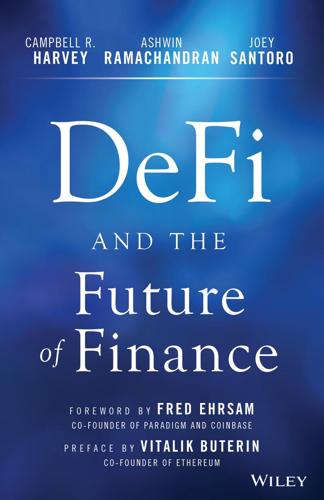
DeFi and the Future of Finance
by
Campbell R. Harvey
,
Ashwin Ramachandran
,
Joey Santoro
,
Vitalik Buterin
and
Fred Ehrsam
Published 23 Aug 2021
In early 2001, a fintech startup offered the following idea.2 Instead of individual corporations querying various banks to get the best rate, why not have an electronic system match the buyers and sellers directly at an agreed upon price and no spread? Indeed, the bank could offer this service to its own customers and collect a modest fee (compared with the spread). Furthermore, given that some customers deal with multiple banks, it would be possible to connect customers at all banks participating in the peer-to-peer network. You can imagine the reception. The bank might say: “Are you telling me we should invest in an electronic system that will cannibalize our business and largely eliminate a very important profit center?” However, even 20 years ago, banks realized that their largest customers were very unhappy with the current system.
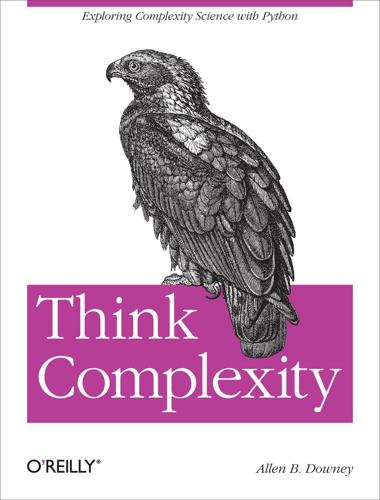
Think Complexity
by
Allen B. Downey
Published 23 Feb 2012
A New Kind of Engineering I have been talking about complex systems in the context of science, but complexity is also a cause, and effect, of changes in engineering and the organization of social systems. Centralized decentralized Centralized systems are conceptually simple and easier to analyze, but decentralized systems can be more robust. For example, on the World Wide Web, clients send requests to centralized servers; if the servers are down, the service is unavailable. In peer-to-peer networks, every node is both a client and a server. To take down the service, you have to take down every node. Isolation interaction In classical engineering, the complexity of large systems is managed by isolating components and minimizing interactions. This is still an important engineering principle; nevertheless, the availability of cheap computation makes it increasingly feasible to design systems with complex interactions between components.
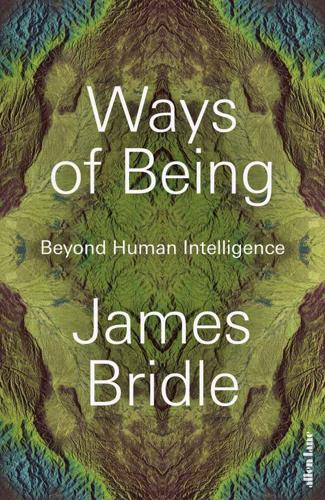
Ways of Being: Beyond Human Intelligence
by
James Bridle
Published 6 Apr 2022
Both use the power of remote processors provided by volunteers – the computers of the general public, linked by the internet – to churn through complex calculations which would overburden any single supercomputer. It’s perhaps unsurprising that both these charismatic – and successful – examples of the form are concerned with life itself. Federated and peer-to-peer networks are a third example of decentralization. These are attempts to recreate the power and affordances of contemporary social networks, website hosts and even video calls, by allowing every user to build, host and control their own fragment of the wider network. In doing this, users actively reshape the network itself, transforming it from one centred around a few, privately owned hubs, to one in which users are directly connected to one another: a change in technology which results in a physical change to the topography and power relationships of the network itself.34 The project of decentralization also encompasses the process of decentring ourselves: the acknowledgement that humans are not the most important species on the planet, nor the hub around which everything else turns.
…
For an introduction to open-source philosophy, see Lawrence Lessig, ‘Open Code and Open Societies: Values of Internet Governance’, Sibley Lecture at the University of Georgia, 16 February 1999; or, for a fictional account of its actual implementation, I recommend Cory Doctorow, Walkaway (New York: Macmillan, 2017). For examples of distributed processing initiatives, see https://setiathome.berkeley.edu and https://foldingathome.org/. The social networks Mastodon and Scuttlebutt, the Beaker web browser and Jitsi.org web conferencing are good examples of federated and peer-to-peer network projects. 35. For a description of the Optometrist Algorithm, see E. A. Baltz, E. Trask, M. Binderbauer, et al., ‘Achievement of Sustained Net Plasma Heating in a Fusion Experiment with the Optometrist Algorithm’, Scientific Reports, 7(6425), 25 July 2017; https://doi.org/10.1038/s41598-017-06645-7.
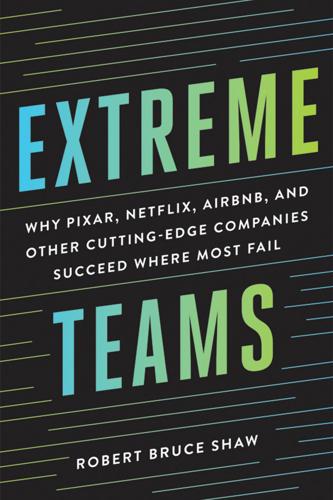
Extreme Teams: Why Pixar, Netflix, AirBnB, and Other Cutting-Edge Companies Succeed Where Most Fail
by
Robert Bruce Shaw
,
James Foster
and
Brilliance Audio
Published 14 Oct 2017
The CEO of Airbnb, for example, wants people to consider what a competitor might do to undermine or even kill his firm’s business model.29 That is, he wants his people to actively envision products or services that would render Airbnb’s business model obsolete. The goal is to ensure that Airbnb innovates faster than the competition and, in so doing, prevents others from doing what Airbnb is now doing to traditional hotels with its peer-to-peer model. Airbnb is constantly testing new ideas within its current model, such as hosts picking up their guests at the airport or providing them with walking tours and other experiences (for example, dinners or cultural events). It has also considered other areas in the “sharing economy” outside of its current business.
…
CHAPTER 7 TEAMS AT THE EXTREMES Without Adventure, Teams Slowly Decay1 It’s no accident that the companies profiled in this book were all founded by extraordinary entrepreneurs.2 Their businesses were built on innovative ideas that overturned the existing order of things within their industries. Netflix is disrupting the media industry through its streaming service. Airbnb is disrupting the hospitality industry through its peer-to-peer model. Alibaba is disrupting the way business is done in China through its e-commerce sites. The leaders of these firms, however, realize that their long-term success requires more than groundbreaking products and services. They need their companies, as companies, to be equally innovative—workplaces that are challenging commonly accepted ways of operating.

Intertwingled: Information Changes Everything
by
Peter Morville
Published 14 May 2014
It’s hard to hold these truths to be self-evident in a ship of state that’s listing dangerously from democracy to capitalism to oligarchy. Ben Franklin stated in 1776 that “we must all hang together, or assuredly we shall all hang separately,” but what our culture says today is “every man for himself.” For a moment, the Internet was our hope. We thought we were building an information commons, a shared peer-to-peer network created by and accessible to all. But this place made of information became subject to the process of enclosure. Like our fields and forests and universities and hospitals, it was corporatized and commodified. Donella Meadows was right about technology. In the long run, it reflects and reinforces the dominant culture.
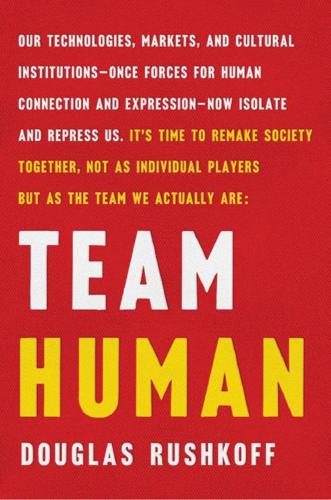
Team Human
by
Douglas Rushkoff
Published 22 Jan 2019
So what values can be retrieved by our renaissance? The values that were lost or repressed during the last one: environmentalism, women’s rights, peer-to-peer economics, and localism. The over-rationalized, alienating approach to science is now joined by the newly retrieved approaches of holism and connectedness. We see peer-to-peer networks and crowdfunding replacing the top-down patronage of the Renaissance, retrieving a spirit of mutual aid and community. Even the styles and culture around this activity, from Burning Man and craft beer to piercing and herbal potions, retrieve the human-scaled, medieval sensibilities repressed by the Renaissance.
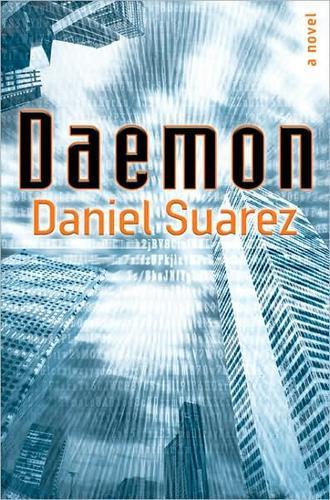
Daemon
by
Daniel Suarez
Published 1 Dec 2006
The Mahogany Row conference room was dimly lit, and silhouettes of her audience were arrayed around a sizeable boardroom table. Military badges on the uniforms of some audience members reflected the light from the screen. Her title presentation slide was up: Viability of Daemon Construct Over Peer-to-Peer Networks She was already addressing the group. “…the feasibility of a narrow AI scripting application distributed over a peer-to-peer network architecture to avoid core logic disruption.” She clicked to the next slide. It bore the simple words: Distributed Daemon Viable A murmur went through her audience. “Our unequivocal findings are that a distributed daemon is not merely a potential threat but an inevitable one, given the standards unifying extant networked systems.
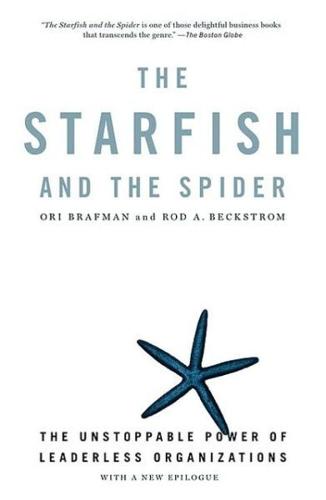
The Starfish and the Spider: The Unstoppable Power of Leaderless Organizations
by
Ori Brafman
and
Rod A. Beckstrom
Published 4 Oct 2006
The answer turns out to be a surprising yes—if only they had asked the right questions. The record labels had long known that people like to copy music. More broadly, we have a natural human tendency to share information. That's why keeping government and corporate secrets is so difficult—people are apt to gab. Once the peer-to-peer technology was out there, the writing was on the wall. THE STARFISH AND THE SPIDER People's propensity to share music is precisely why the labels have fought for antipiracy laws and tried to block new technologies, like the CD burner, that make copying music easier. For a while, these measures sorta kinda worked.
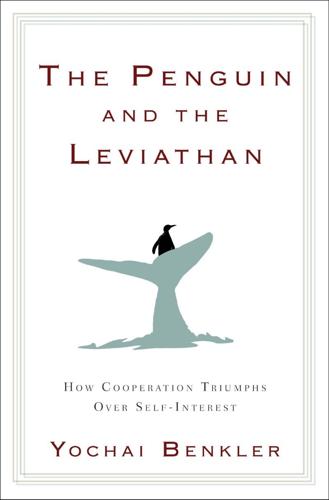
The Penguin and the Leviathan: How Cooperation Triumphs Over Self-Interest
by
Yochai Benkler
Published 8 Aug 2011
Magnatune is an online label that sells music of many artists, in each case releasing the music in a perfect digital format that users can copy flawlessly. They also release the music under a Creative Commons license that makes it perfectly legal for the fans to make as many copies as they wish. In other words, when a fan buys music from Magnatune, the fan can legally and easily make millions of copies and blanket them across peer-to-peer networks. And yet they don’t. After scouring the records from more than 75,000 transactions on the site, we found that although users were invited to pay between $5 and $18, at their discretion (in increments of 50 cents), 48 percent of users paid $8 per album, well within a range of what the industry would be thrilled to establish as standard practice for consumers.
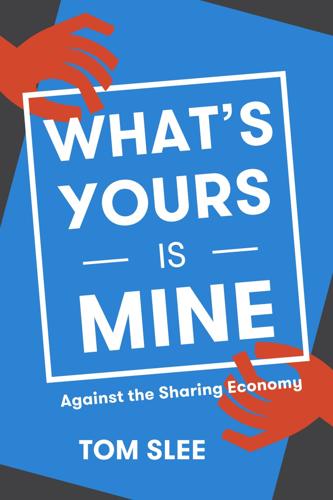
What's Yours Is Mine: Against the Sharing Economy
by
Tom Slee
Published 18 Nov 2015
The related idea of social entrepreneurship uses markets to scale up efforts to create social good. Groups such as Markets for Good (a wing of the Bill and Melinda Gates Foundation) and Google.org, the charitable arm of Google, put these ideas into practice. Steven Berlin Johnson’s idea of “peer progressives” was mentioned in Chapter 1. It highlights both for-profit and not-for-profit peer-to-peer networks as a framework for solving social problems, and seeks to position digital platforms and their communities for social good.2 Pierre Omidyar is one of the most vocal proponents of the social enterprise model. Omidyar founded eBay, one of the direct ancestors of the Sharing Economy. EBay took what was a neighborhood activity (the yard sale) and scaled it up by putting it on the Internet, with massive success.
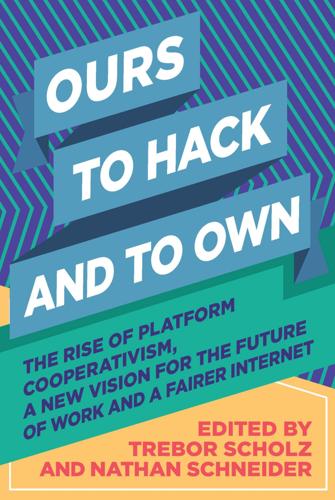
Ours to Hack and to Own: The Rise of Platform Cooperativism, a New Vision for the Future of Work and a Fairer Internet
by
Trebor Scholz
and
Nathan Schneider
Published 14 Aug 2017
Seen in this light, the call for blockchains forms part of a line of informational and administrative technologies such as punch cards, electronic ledgers, and automated record keeping systems that work to administrate populations and to make politics disappear. ASSUMPTION #2: THE TECHNICAL CAN INSTANTIATE NEW SOCIAL OR POLITICAL PROCESSES Like a lot of peer-to-peer networks, blockchain applications conflate a technical architecture with a social or political mode of organization. We can see this kind of ideology at work when the CEO of Bitcoin Indonesia argues, “In its purest form, blockchain is democracy.” From this perspective, what makes Uber Uber and La’Zooz La’Zooz comes down to technical differences at the level of topology and protocol.
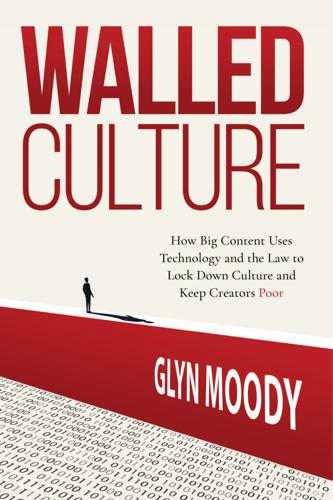
Walled Culture: How Big Content Uses Technology and the Law to Lock Down Culture and Keep Creators Poor
by
Glyn Moody
Published 26 Sep 2022
In 2007, she was found liable for $222,000 in damages for sharing twenty-four songs on the P2P service Kazaa.279 The judge, ordering a new trial for Thomas, called ‘the award of hundreds of thousands of dollars in damages unprecedented and oppressive’, and took the opportunity to ‘implore Congress to amend the Copyright Act to address liability and damages in peer-to-peer network cases such as the one currently before this Court.’280 On retrial, Thomas was found liable for even more: $1.92 million.281 When even judges call for a reform of the ‘oppressive’ copyright system, it is evident that something is deeply wrong. Moreover, the punishments in these cases were so manifestly disproportionate that the recording industry began to suffer serious reputational damage for bullying single mothers and grandmothers over the download of a few files.

Engineering Security
by
Peter Gutmann
No PKI of any kind is necessary. The advantage of these self-authenticating bindings is that they’re fully compatible with older applications, which can still use the URL, just with weaker security guarantees. A similar sort of mechanism is used in the distributed hash tables (DHTs) that are typically used in peer-to-peer networks, where the cryptographic hash of a data item is used to uniquely identify it, creating self-certifying named objects [606]. The hashing that’s used for DHTs can be applied both forwards (“get me the data item identified by this hash”) and in reverse (“does the returned data item correspond to this hash”) [607], and as with self-authenticating URLs the problem of secure distribution of content is reduced to the far simpler problem of secure distribution of hashes.
…
id=377245. [574] “Metalink 3.0 Specification (Second Edition)”, Anthony Bryan, 7 July 2007, http://www.metalinker.org/Metalink_3.0_Spec.pdf. [575] “The Metalink Download Description Format”, RFC 5854, Anthony Bryan, Tatsuhiro Tsujikawa, Neil McNab and Peter Poeml, June 2010. [576] “Metalink/HTTP: Mirrors and Hashes”, RFC 6249, Anthony Bryan, Tatsuhiro Tsujikawa, Neil McNab and Peter Poeml, June 2011. [577] “Bringing Tahoe ideas to HTTP”, Brian Warner, posting to the cryptography@metzdowd.com mailing list, message-ID 4A970144.8020709@lothar.com, 27 August 2009. [578] “Child-proof authentication for MIPv6 (CAM)”, Greg O’Shea and Michael Roe, Computer Communications Review, Vol.31, No.2 (April 2001), p.4. [579] “Statistically Unique and Cryptographically Verifiable (SUCV) Identifiers and Addresses”, Gabriel Montenegro and Claude Castelluccia, Proceedings of the 9th Network and Distributed System Security Symposium (NDSS’02), February 2002, http://www.isoc.org/isoc/conferences/ndss/02/proceedings/papers/monten.pdf. [580] “Securing IPv6 neighbor discovery and router discovery”, Jari Arkko, Tuomas Aura, James Kempf, Vesa-Matti Mäntylä, Pekka Nikander and Michael Roe, Proceedings of the Workshop on Wireless Security (WiSe’02), September 2002, p.77. [581] “Cryptographically Generated Addresses (CGA)”, Tuomas Aura, Proceedings of the 6th Information Security Conference (ISC’03), October 2003, p.29. [582] “Crypto-Based Identifiers (CBIDs): Concepts and Applications”, Gabriel Montenegro and Claude Castelluccia, Transactions on Information and System Security, Vol.7, No.1 (February 2004), p.97. [583] “Cryptographically Generated Addresses for Constrained Devices”, Claude Castelluccia, Wireless Personal Communications, Vol.29, No.3-4 (June 2004), p.221. [584] “SEcure Neighbor Discovery (SEND)”, RFC 3971, Jari Arkko, James Kempf, Brian Zill and Pekka Nikander, March 2005. [585] “Cryptographically Generated Addresses (CGA)”, RFC 3972, Tuomas Aura, March 2005. [586] “An improved address ownership in mobile IPv6”, Min-Shiang Hwang, Cheng-Chi Lee and Song-Kong Chong, Computer Communications, Vol.31, No.14 (5 September 2008), p.3250. [587] “Analysis and Optimisation of Cryptographically Generated Addresses”, Joppe Bos, Onur Özen and Jean-Pierre Hubaux, Proceedings of the 12th Information Security Conference (ISC’09), Springer-Verlag LNCS No.5735, September 2009, p.17. [588] “Not One Click for Security”, Alan Karp, Marc Stiegler and Tyler Close, Proceedings of the 5th Symposium on Usable Privacy and Security (SOUPS’09), July 2009, Paper 19. [589] “An IPv6 Prefix for Overlay Routable Cryptographic Hash Identifiers (ORCHID)”, RFC 4843, Pekka Nikander, Julien Laganier and Francis Dupont, April 2007. [590] “Peer Name Resolution Protocol”, Microsoft Corporation, 27 September 2006, http://technet.microsoft.com/en-us/library/bb726971.aspx. [591] “Host Identity Protocol (HIP) Architecture”, Robert Moskowitz and Pekka Nikander, RFC 4423, May 2006. [592] “Host Identity Protocol”, Robert Moskowitz, Pekka Nikander, Petri Jokela and Thomas Henderson, RFC 5201, April 2008. [593] “Using the Encapsulating Security Payload (ESP) Transport Format with the Host Identity Protocol (HIP)”, Petri Jokela, Robert Moskowitz and Pekka Nikander, RFC 5202, April 2008. 438 Design [594] “Host Identity Protocol (HIP) Registration Extension”, Julien Laganier, Teemu Koponen and Lars Eggert, RFC 5203, April 2008. [595] “Host Identity Protocol (HIP) Rendezvous Extension”, Julien Laganier and Lars Eggert, RFC 5204, April 2008. [596] “Host Identity Protocol (HIP) Domain Name System (DNS) Extension”, Pekka Nikander and Julien Laganier, RFC 5205, April 2008. [597] “End-Host Mobility and Multihoming with the Host Identity Protocol”, Pekka Nikander, Thomas Henderson, Christian Vogt and Jari Arkko, RFC 5206, April 2008. [598] “NAT and Firewall Traversal Issues of Host Identity Protocol (HIP) Communication”, Martin Stiemerling, Juergen Quittek and Lars Eggert, RFC 5207, April 2008. [599] “Using the Host Identity Protocol with Legacy Applications”, Thomas Henderson, Pekka Nikander and Miika Komu, RFC 5338, September 2008. [600] “Basic Host Identity Protocol (HIP) Extensions for Traversal of Network Address Translators”, Miika Komu, Thomas Henderson, Hannes Tschofenig, Jan Melen and Ari Keranen, RFC 5770, April 2010. [601] “Host Identity Protocol (HIP) Multi-Hop Routing Extension”, Gonzalo Camarillo and Ari Keranen, RFC 6028, October 2010. [602] “Host Identity Protocol (HIP) Immediate Carriage and Conveyance of UpperLayer Protocol Signaling (HICCUPS)”, Gonzalo Camarillo and Jan Melen, RFC 6078, January 2011. [603] “HIP BONE: Host Identity Protocol (HIP) Based Overlay Networking Environment (BONE)”, Gonzalo Camarillo, Pekka Nikander, Jani Hautakorpi, Ari Keranen and Alan Johnston, RFC 6079, January 2011. [604] “Host Identity Protocol (hip)”, 2011, http://datatracker.ietf.org/wg/hip/. [605] “Host Identity Protocol Research Group (HIPRG)”, 2011, http://www.irtf.org/hiprg. [606] “Peer-to-Peer Systems”, Rodrigo Rodrigues and Peter Druschel, Communications of the ACM, Vol.53, No.10 (October 2010), p.72. [607] “Pollution in P2P File Sharing Systems”, Jian Liang, Rakesh Kumar, Yongjian Xi and Keith Ross, Proceedings of the 24th Annual Joint Conference of the IEEE Computer and Communications Societies (INFOCOM’05), March 2005, p.1174. [608] “A Survey of Peer-to-Peer Security Issues”, Dan Wallach, Proceedings of the 2002 International Symposium on Software Security (ISSS’02), SpringerVerlag LNCS No.2609, November 2002, p.42. [609] “Eclipse Attacks on Overlay Networks: Threats and Defenses”, Atul Singh, Tsuen-Wan Ngan, Peter Druschel and Dan Wallach, Proceedings of the 25th International Conference on Computer Communications (INFOCOM’06), April 2006, [610] “The Index Poisoning Attack in P2P File Sharing Systems”, Jian Liang, Naoum Naoumov and Keith Ross, Proceedings of the 25th Conference on Computer Communications (INFOCOM’06), April 2006, p.1737. [611] “Exploiting KAD: Possible Uses and Misuses”, Moritz Steiner, Taoufik EnNajjary and Ernst Biersack, Computer Communication Review, Vol.37, No.5 (October 2007), p.65. [612] “Conducting and Optimizing Eclipse Attacks in the Kad Peer-to-Peer Network”, Michael Kohnen, Mike Leske and Erwin Rathgeb, Proceedings of the 8th IFIP-TC 6 Networking Conference (Networking’09), Springer-Verlag LNCS No.5550, May 2009, p.104. [613] “Combating Index Poisoning in P2P File Sharing”, Lingli Deng, Yeping He and Ziyao Xu, Proceedings of the 3rd Conference and Workshops on Advances in Information Security and Assurance (ISA’09), Springer-Verlag LNCS No.5576, June 2009, p.358. [614] “Hashing it out in public: Common failure modes of DHT-based anonymity schemes”, Andrew Tran, Nicholas Hopper and Yongdae Kim, Proceedings of the 8th Workshop on Privacy in the Electronic Society (WPES’09), November 2009, p.71.
…
This functionality is quite contrary to conventional PKI dogma, but that’s because the code signing mechanism was designed to fit a particular purpose while generalpurpose PKI was designed for… well, it must have been designed for something. What this is in effect doing is layering custom security controls on top of the generalpurpose PKI, in the same way that an overlay network like a peer-to-peer network adds additional functionality on top of the existing Internet protocols. So don’t be afraid to overlay your own functionality on top of the basic X.509 facilities, assuming that you have sufficient control over the implementation to make it do what you need. This approach leverages existing investment in PKI software while providing add-on capabilities that provides the services and functionality that you need.

Come and Take It: The Gun Printer's Guide to Thinking Free
by
Cody Wilson
Published 10 Oct 2016
“And in the event the states move in for some final shutdown, only then do they release the password. The copies were already distributed. The damage sits waiting to be done. Maybe the files had been seeded for months, maybe years. You can’t pull them all down. The threat is credible because everyone has a computer. Every computer is always already on the Internet.” “Peer-to-peer technology gives you leverage, sure. So, what are you saying?” “What I’m saying is you can leak more than emails and cables. There are new machines—networked, material printers. They use complex and evolving materials. Into this budding universe of digital production . . . you leak a gun.” I liked to watch the realization come to people in stages.
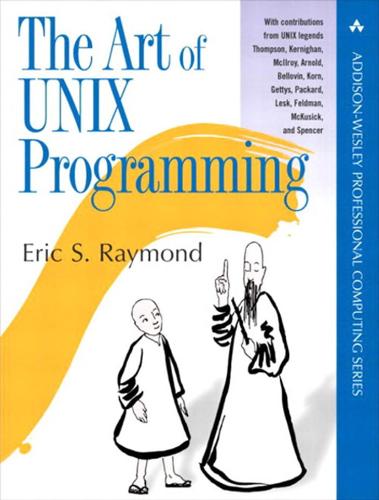
The Art of UNIX Programming
by
Eric S. Raymond
Published 22 Sep 2003
But as the designers of BeOS noticed, the requirements of pervasive networking cannot be met without implementing something very close to general-purpose timesharing. Single-user client operating systems cannot thrive in an Internetted world. This problem drove the reconvergence of client and server operating systems. The first, pre-Internet attempts at peer-to-peer networking over LANs, in the late 1980s, began to expose the inadequacy of the client-OS design model. Data on a network has to have rendezvous points in order to be shared; thus, we can't do without servers. At the same time, experience with the Macintosh and Windows client operating systems raised the bar on the minimum quality of user experience customers would tolerate.
…
Incomplete library implementations (especially older JDK 1.1 versions that don't support the newer JDK 1.2) can be an issue. Java's best side is that it comes close enough to achieving write-once-run-anywhere to be useful as an OS-independent environment of its own. Its worst side is that the Java 1/Java 2 split compromises that goal in deeply frustrating ways. Case Study: FreeNet Freenet is a peer-to-peer networking project that is intended to make censorship and content suppression impossible.[127] Freenet developers envision the following applications: Uncensorable dissemination of controversial information: Freenet protects freedom of speech by enabling anonymous and uncensorable publication of material ranging from grassroots alternative journalism to banned exposés.

Surviving AI: The Promise and Peril of Artificial Intelligence
by
Calum Chace
Published 28 Jul 2015
Peer-to-peer A new business model which is generating a lot of column inches for the idea of digital disruption is peer-to-peer commerce, the leading practitioners of which are AirBnB and Uber. Both were founded in San Francisco, of course – in 2008 and 2009 respectively. The level of investor enthusiasm for the peer-to-peer model is demonstrated by comparing AirBnB’s market cap of $20bn in March 2015 with Hyatt’s market cap of $8.4bn. Hyatt has over 500 hotels around the world and revenues of $4bn. AirBnB, with 13 members of staff, owns no hotels and its revenues in March 2015 were around $250m. Uber’s rise has been even more dramatic: its market cap reached $50bn in May 2015.
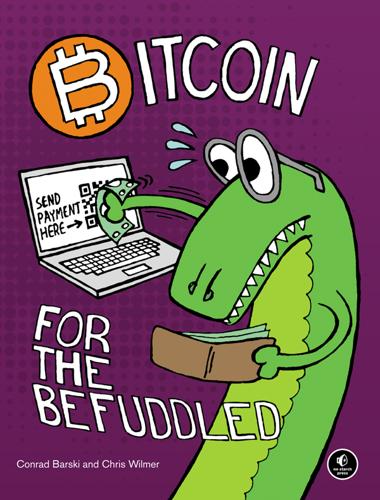
Bitcoin for the Befuddled
by
Conrad Barski
Published 13 Nov 2014
In this decentralized model, a software application finds other “like-minded” peer applications on the Internet and connects with these peers to operate the application. Early applications that used this approach include BitTorrent (for movie downloading) and Gnutella (for music discovery/downloading). Bitcoin also uses a peer-to-peer network in its design. Peer-to-peer systems have many advantages over traditional client-server systems, including improved durability and performance. Because of these advantages, it is likely that these systems will become increasingly ubiquitous. One benefit of using peer-to-peer systems over traditional architectures is their indestructibility: As long as a peer-to-peer app user can find other peers to connect to, the network will continue to exist, and it can do so without any central point of failure.

Whiplash: How to Survive Our Faster Future
by
Joi Ito
and
Jeff Howe
Published 6 Dec 2016
It started on November 1, 2008, when someone calling himself Satoshi Nakamoto posted “Bitcoin: A Peer-to-Peer Electronic Cash System” to a cryptography mailing list.20 In his introduction, he wrote, “I’ve been working on a new electronic cash system that’s fully peer-to-peer, with no trusted third party.… The main properties: Double-spending is prevented with a peer-to-peer network. No mint or other trusted parties. Participants can be anonymous. New coins are made from Hashcash style proof-of-work. The proof-of-work for new coin generation also powers the network to prevent double-spending.” Unless you’re a cryptographer, much of that may fly well over your head. So let’s bring it down to ground level.
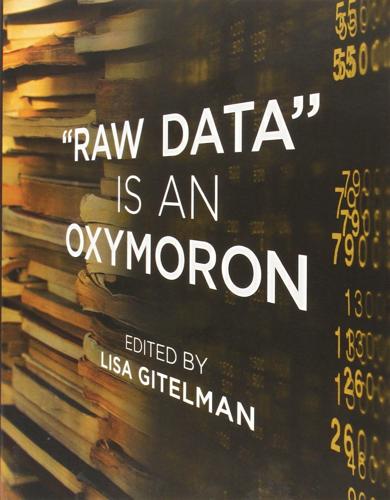
Raw Data Is an Oxymoron
by
Lisa Gitelman
Published 25 Jan 2013
Combating or otherwise responding to a control system dependent on computing power requires the design of a counter-system, a rather modest example of which is Diaspora, an open-source, privacy-aware, distributed do-it-yourself social network that eliminates the hub of a social media conglomerate in favor of a peer-to-peer network in which each individual is a node.53 Without a hub or central server, data encrypted with GNU Privacy Guard is sent directly to one’s friends rather than stored and hence mined. True peer-to-peer communication—that is, that which is not routed through a central hub—would need to move to a network such as Diaspora because the controlled application programming interface (API) of social networks such as Facebook means that Dataveillance and Countervailance hacking a hub-based network in order to convert it to peer-to-peer is difficult if not impossible.
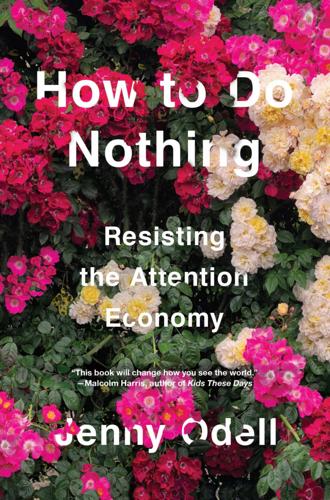
How to Do Nothing
by
Jenny Odell
Published 8 Apr 2019
As Oliver Leistert puts it in “The Revolution Will Not Be Liked,” for social media companies, “the public sphere is an historically elapsed phase from the twentieth century they now exploit for their own interests by simulating it.”16 * * * — WRITING IN THE ATLANTIC about a nascent decentralized network called Scuttlebutt, Ian Bogost gives us an image for this absurd situation: “Facebook and Twitter are only like water coolers if there were one, giant, global water cooler for all workplaces everywhere.”17 Dissatisfaction with this standard-issue water cooler has fueled the movement toward a decentralized web, which instead of private companies and servers makes use of peer-to-peer networks and open-source software. The goal is not only for users to own their own data, but to shift that data and software closer to their end points of use. Mastodon, for example, is a federated social network of “instances,” each using free software on a community-run server whose users can nonetheless communicate with those in other instances.
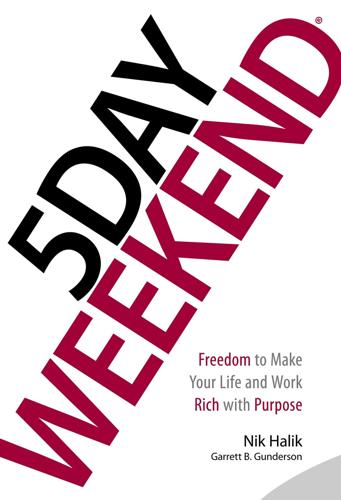
5 Day Weekend: Freedom to Make Your Life and Work Rich With Purpose
by
Nik Halik
and
Garrett B. Gunderson
Published 5 Mar 2018
DogVacay DogVacay connects dog owners with hosts who will take care of their dogs while they are away. Love dogs? Become a host and earn some money doing something you love. Spinlister Spinlister allows you to rent things such as bikes, surfboards, canoes, or snowboards to or from neighbors. Lending Club Lending Club is a peer-to-peer network for lending and borrowing cash. It’s cheaper than credit cards for borrowers and provides better interest rates than savings accounts for investors. Online Opportunities There’s no shortage of people promoting ways to make money online. Much of it is garbage, some of it is legitimate.

Silk Road
by
Eileen Ormsby
Published 1 Nov 2014
Their morale regarding fighting SR and BC is very low at the moment, mainly because very few LEO have the capacity to comprehend how the whole system works, but unfortunately, recent media coverage demands some kind of action, so they are going to have to show the public they are doing something to combat SR, they just aren’t sure what yet. The report was an extensive critique of and response to Silk Road, well researched and referenced. It described anonymity and encryption, darknets, PGP, Tor and peer-to-peer technologies. It explained what hidden services were and listed those that could be found on the Hidden Wiki at the time. It discussed the security features and vulnerabilities of Tor, illustrating these with the story of Anonymous’ takedown of Lolita City. The report concluded that the main vulnerability of Tor and the hidden services was not the technology, but the user.

The Great Wave: The Era of Radical Disruption and the Rise of the Outsider
by
Michiko Kakutani
Published 20 Feb 2024
To restore the original spirit of the web and sidestep the tentacles of government and Big Tech, Berners-Lee has proposed a new platform called Solid that would allow individuals to retain ownership and control of their personal information by placing it in secure PODS (personal online data stores); companies would have to request (or be granted) access to that information but could not data mine that information or sell it. Other proponents of a decentralized web or Web3 are proposing a model based on the sort of peer-to-peer technology employed by blockchain (which powers bitcoin and other cryptocurrencies). In theory, such a decentralized architecture would allow users to bypass the control of tech giants like Facebook, Google, and Microsoft, which currently act as intermediaries, and would also make it more difficult for Big Tech and governments to collect our data and control what we see.

Data Mining: Concepts, Models, Methods, and Algorithms
by
Mehmed Kantardzić
Published 2 Jan 2003
Intelligent Machines http://www.damienfrancois.be/blog/ This blog is dedicated to artificial intelligence and machine learning, and focuses on applications in business, science and every-day life. 10. Mininglabs http://www.mininglabs.com/ This blog is established by a group of French independent researchers in the field of data mining, analyzing and data visualization. They are mostly interested in analyzing data coming from the internet at large (Web, peer-to-peer networks). 11. Machine Learning (Theory) http://hunch.net/ A blog dedicated to the various aspects of machine learning theory and applications. A.4 DATA SETS This section describes a number of freely available data sets ready for use in data-mining algorithms. We selected a few examples for students who are starting to learn data mining and they would like to practice traditional data-mining tasks.
…
Trunfio, Service-Oriented Middleware for Distributed Data Mining on the Grid, Journal of Parallel and Distributed Computing, Vol. 68, No. 1, 2008, pp. 3–15. Copp, C., Data Mining and Knowledge Discovery Techniques, Defence Today, NCW 101, 2008, http://www.ausairpower.net/NCW-101-17.pdf. Datta, S., K. Bhaduri, C. Giannella, R. Wolff, H. Kargupta, Distributed Data Mining in Peer-to-Peer Networks, IEEE Internet Computing, Vol. 10, No. 4, 2006, pp. 18–26. Ester, M., H.-P. Kriegel, J. Sander, Spatial Data Mining: A Database Approach, Proceedings of 5th International Symposium on Advances in Spatial Databases, 1997, pp. 47–66. Faloutsos, C., Mining Time Series Data, Tutorial ICML 2003, Washington, DC, August 2003.

Future Crimes: Everything Is Connected, Everyone Is Vulnerable and What We Can Do About It
by
Marc Goodman
Published 24 Feb 2015
As a result, the plans and defensive security features of the military helicopter that shuttles the president from the White House to Air Force One leaked to P2P music-sharing networks around the world, including those in Iran. For the want of free music, a billion-dollar military project was compromised, and the blueprints for the president’s Sikorsky VH-3D helicopter ended up on a peer-to-peer network in Iran, hosted next to the pirated songs of both Michael Jackson and Shadmehr Aghili, the undisputed king of Persian pop. The former military contractor, interrogated by both the FBI and the Department of Defense, admitted his error, but by then the damage had been one. Our global interconnections and never-ending storage of more and more data mean leaks are inevitable.
…
Download Download software only from official sites (such as Apple’s App Store or directly from a company’s own verified Web site). Be highly skeptical of unofficial app stores and third-party sites hosting “free” software. In addition, avoid pirated media and software widely available on peer-to-peer networks, which frequently contain malware and viruses. Settings in both the Windows and the Mac operating systems can help you “white list” so that only approved software from identified vendors is allowed to run on your machine. While doing so will not guarantee software safety, it can greatly reduce the risk of infection.

What's Mine Is Yours: How Collaborative Consumption Is Changing the Way We Live
by
Rachel Botsman
and
Roo Rogers
Published 2 Jan 2010
Chesky later realized that his parents grew up in the hotel generation, whereas his grandfather and his friends would stay on farms and in little houses during their travels. Airbnb is not very different from that experience. “We are not the modern invention, hotels are.” Indeed, prior to the 1950s, staying with friends or friends of friends was a common way to travel. Airbnb is an old idea, being replicated and made relevant again through peer-to-peer networks and new technologies. There is now an unbounded marketplace for efficient peer-to-peer exchanges between producer and consumer, seller and buyer, lender and borrower, and neighbor and neighbor. Online exchanges mimic the close ties once formed through face-to-face exchanges in villages, but on a much larger and unconfined scale.
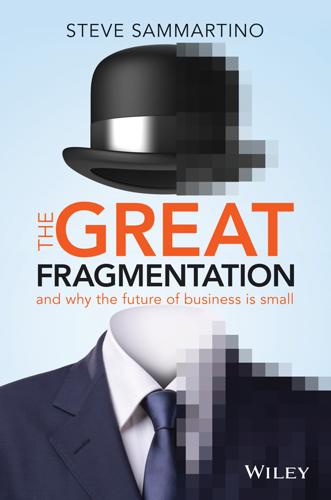
The Great Fragmentation: And Why the Future of All Business Is Small
by
Steve Sammartino
Published 25 Jun 2014
Step forward crypto currencies such as bitcoin, which are the next evolution in how we trade. Bitcoin Bitcoin was the first fully implemented and distributed crypto currency. It works in much the same way as other emerging crypto currencies. Crypto currencies are simply decentralised electronic cash systems. The ‘money’ is created by using peer-to-peer networking, digital signatures and cryptography to generate a currency. Bitcoins are mined out of a digital network by computers plugged into a system trying to figure out a 64-digit code that unlocks 50 bitcoins at a time. The money, or bitcoins, is generally traded within the system by using specific peer-to-peer software.
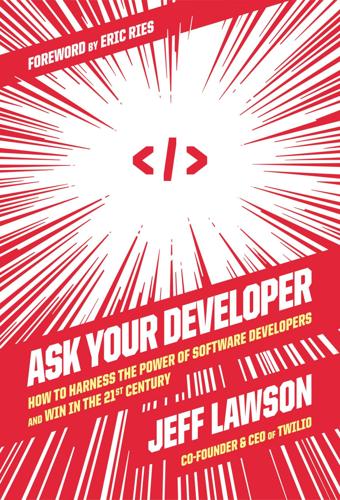
Ask Your Developer: How to Harness the Power of Software Developers and Win in the 21st Century
by
Jeff Lawson
Published 12 Jan 2021
All of my entrepreneurial energy could then focus on the thing that matters the most: the customer, and what problem I could solve for them. There were a bunch of ideas floating in my head. One was for a new way of doing computer backups. Another idea would help people stream video from far parts of the globe via peer-to-peer networking. I had to decide what idea to pursue next, and talking to prospective customers was the way I made the decision. When you pitch a new product idea to potential customers, one of two things happens, especially when they’re an acquaintance. If they genuinely like the idea and it seems to solve a pain point in their life, they ask you questions.
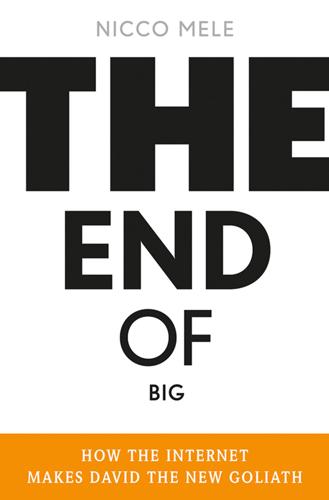
The End of Big: How the Internet Makes David the New Goliath
by
Nicco Mele
Published 14 Apr 2013
You can drive your car to the commuter rail station, and, thirty minutes after you park it, someone else picks it up to commute to work, sharing the car by preset agreement. Money is under assault from more directions than just barter. A host of alternative currencies are blossoming on the Internet, and one in particular—an open-source project called Bitcoin—appears to be gaining steam. Bitcoin uses peer-to-peer technology to operate with no central authority, allowing anyone to send “money” (the Bitcoin currency) to anyone, anywhere, at any time, and beyond the reach of governments. Bitcoin enlists participants in the community to manage transactions and issue money; the network, rather than a central bank, collectively creates the money.
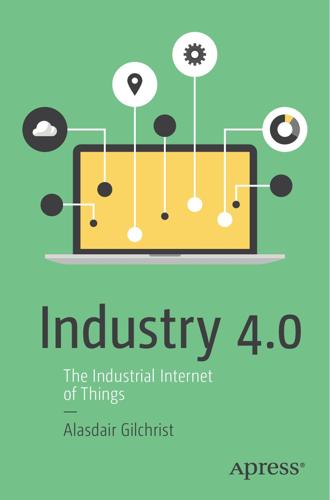
Industry 4.0: The Industrial Internet of Things
by
Alasdair Gilchrist
Published 27 Jun 2016
For 915MHz (North America), there are 10 channels available and the standard supports a maximum data rate of 40Kbps, while at 868MHz (Europe), there is only one channel and this can support data transfer at up to 20Kbps. ZigBee supports three network topologies—the star, mesh, and cluster tree or hybrid networks. The star network is commonly used, as it is the simplest to deploy. However, the mesh or peer-to-peer network configurations enable high degrees of reliability to be obtained. Messages may be routed across the network using the different stations as relays. There is usually a choice of routes that can be used and this makes the network very robust. If interference is present on one section of a network, another section can be used instead.
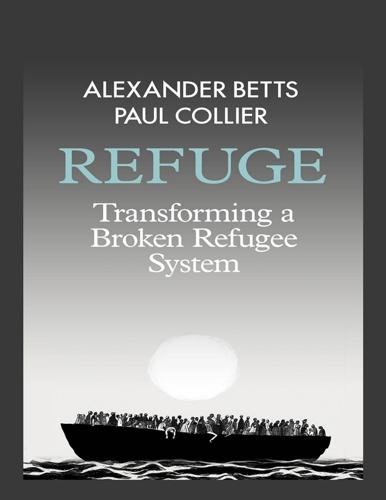
Refuge: Transforming a Broken Refugee System
by
Alexander Betts
and
Paul Collier
Published 29 Mar 2017
The internet in particular offers the chance to create footloose and highly mobile livelihoods. Value chains can be disaggregated in ways that allow people in one part of the world to contribute on the basis of their particular comparative advantage. New financing opportunities, including crowdfunding, peer-to-peer networks, and mobile money, may offer ways in which even remote communities can be connected to the global economy. Business – from multinational corporations to small and medium-sized enterprises to social enterprise – is engaging with refugee issues more than it has in the past.20 There is every reason to believe that a development toolbox should offer even greater prospects than was the case even two decades ago.

What Algorithms Want: Imagination in the Age of Computing
by
Ed Finn
Published 10 Mar 2017
The entire Bitcoin marketplace is an open book, from the darkest recesses of terrorism financing to booking hotel rooms, purchasing virtual goods from Zynga, and ordering marijuana from the infamous digital marketplace Silk Road.25 But how does this actually work? Since the Bitcoin network has no central authority, anyone completing a transaction announces it through a peer-to-peer network. The decentralized nature of the system is meant to account for the problem that information may flow unevenly across the network, that some nodes may suddenly appear or disappear, and for the intentional design constraint of abolishing the central bank or switching station to correlate and sequence all financial activity.
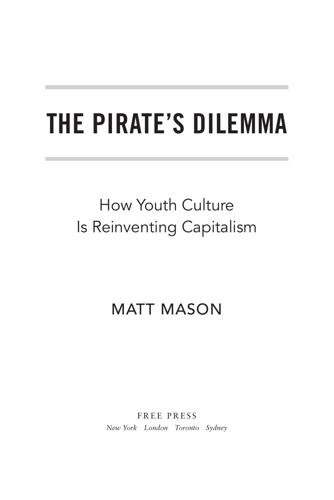
The Pirate's Dilemma: How Youth Culture Is Reinventing Capitalism
by
Matt Mason
It's April 2003, and you, along with Madonna fans worldwide, hit KaZaA to download some tracks from her latest album, American Life. Instead, you get spoof MP3 files: the material girl verbally bitch-slapping the file-sharing community. It's her and Warner Bros.' latest bid to thwart Internet piracy by fighting fire with fire, acting like a pirate herself. Madonna flooded peer-to-peer networks with digital decoys that appeared to be tracks from the new album but were actually recordings of her cursing and snarling at would-be illegal downloaders everywhere. Intended as another genius publicity stunt by one of the smartest women in music, this turned out to be one of the biggest blunders of her career, right up there with Evita, Sean Penn, and Shanghai Surprise.
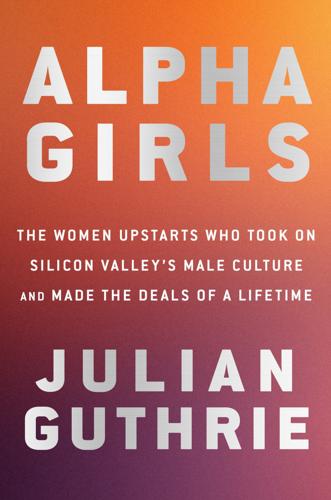
Alpha Girls: The Women Upstarts Who Took on Silicon Valley's Male Culture and Made the Deals of a Lifetime
by
Julian Guthrie
Published 15 Nov 2019
Part of Golden’s job was to evaluate the risks with every deal: What were the risks within the team? Were there technology risks? Were there competitive risks? Were there unique intellectual property risks? “This company has every one of those risks—and more,” Golden told Theresia and Efrusy. Golden had discovered that the core peer-to-peer technology behind Skype was licensed via a company that Zennström and Friis partially controlled. This meant that Skype could not entirely control its own destiny and potentially created conflicts of interest. For Skype not to own or fully control its core intellectual property at this stage was highly unusual for this kind of investment.

Designing Data-Intensive Applications: The Big Ideas Behind Reliable, Scalable, and Maintainable Systems
by
Martin Kleppmann
Published 17 Apr 2017
Since a system failure would be very expensive (e.g., an aircraft crashing and killing everyone on board, or a rocket colliding with the International Space Station), flight control systems must tolerate Byzan‐ tine faults [81, 82]. • In a system with multiple participating organizations, some participants may attempt to cheat or defraud others. In such circumstances, it is not safe for a node to simply trust another node’s messages, since they may be sent with mali‐ cious intent. For example, peer-to-peer networks like Bitcoin and other block‐ chains can be considered to be a way of getting mutually untrusting parties to agree whether a transaction happened or not, without relying on a central authority [83]. However, in the kinds of systems we discuss in this book, we can usually safely assume that there are no Byzantine faults.
…
This is why input validation, sani‐ tization, and output escaping are so important: to prevent SQL injection and crosssite scripting, for example. However, we typically don’t use Byzantine fault-tolerant protocols here, but simply make the server the authority on deciding what client behavior is and isn’t allowed. In peer-to-peer networks, where there is no such cen‐ tral authority, Byzantine fault tolerance is more relevant. A bug in the software could be regarded as a Byzantine fault, but if you deploy the same software to all nodes, then a Byzantine fault-tolerant algorithm cannot save you. Most Byzantine fault-tolerant algorithms require a supermajority of more than twothirds of the nodes to be functioning correctly (i.e., if you have four nodes, at most one may malfunction).
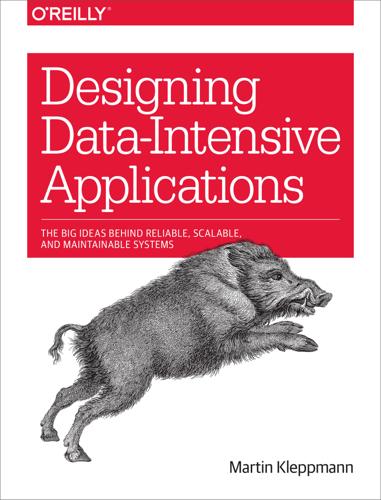
Designing Data-Intensive Applications: The Big Ideas Behind Reliable, Scalable, and Maintainable Systems
by
Martin Kleppmann
Published 16 Mar 2017
Since a system failure would be very expensive (e.g., an aircraft crashing and killing everyone on board, or a rocket colliding with the International Space Station), flight control systems must tolerate Byzantine faults [81, 82]. In a system with multiple participating organizations, some participants may attempt to cheat or defraud others. In such circumstances, it is not safe for a node to simply trust another node’s messages, since they may be sent with malicious intent. For example, peer-to-peer networks like Bitcoin and other blockchains can be considered to be a way of getting mutually untrusting parties to agree whether a transaction happened or not, without relying on a central authority [83]. However, in the kinds of systems we discuss in this book, we can usually safely assume that there are no Byzantine faults.
…
This is why input validation, sanitization, and output escaping are so important: to prevent SQL injection and cross-site scripting, for example. However, we typically don’t use Byzantine fault-tolerant protocols here, but simply make the server the authority on deciding what client behavior is and isn’t allowed. In peer-to-peer networks, where there is no such central authority, Byzantine fault tolerance is more relevant. A bug in the software could be regarded as a Byzantine fault, but if you deploy the same software to all nodes, then a Byzantine fault-tolerant algorithm cannot save you. Most Byzantine fault-tolerant algorithms require a supermajority of more than two-thirds of the nodes to be functioning correctly (i.e., if you have four nodes, at most one may malfunction).
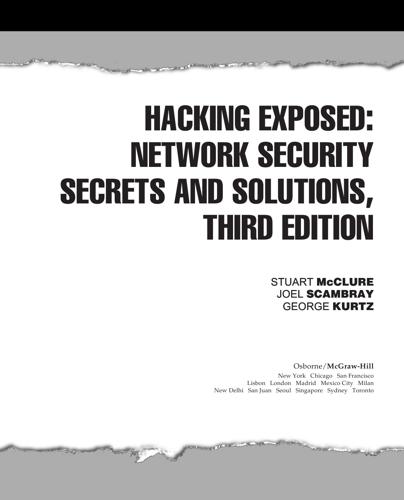
Hacking Exposed: Network Security Secrets and Solutions
by
Stuart McClure
,
Joel Scambray
and
George Kurtz
Published 15 Feb 2001
This information was POSTed to a Perl CGI script that invoked Dan’s custom Java classes to share out the specified folder and to create the listening port linked to it on the client side. Showing his sense of humor, Dan promoted the Napster-like features of this technique to allow users to share files via the peer-to-peer network created by millions of users sharing out their drives over HTTP. In all seriousness, though, this problem should not be downplayed simply because it only allows read access to data. Dan’s exploit is quite generous, allowing users to specify what directory they wish to share. Malicious applets could work much more stealthily, exposing anyone who uses Netscape to possible disclosure of sensitive information.

The End of Ownership: Personal Property in the Digital Economy
by
Aaron Perzanowski
and
Jason Schultz
Published 4 Nov 2016
In the 1990s, this small-scale arms race began to heat up as copying and storing large numbers of software titles became easier because of vast improvements in storage capacity and disk speeds. Coupled with the increasing ease of data transmission over the newly popular Internet and the introduction of peer-to-peer networks like Napster, designed for sharing files with a global community, the perceived need for DRM increased dramatically. Soon copyright holders, who now included Hollywood and the music industry in addition to software makers, invested more and more resources in the hopes of finding a technological fix to the problem of unauthorized copying.
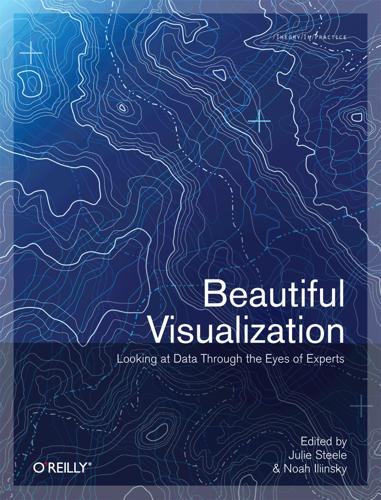
Beautiful Visualization
by
Julie Steele
Published 20 Apr 2010
Far too many applications simply borrow the worst of PowerPoint, flying data points across the screen with no clear purpose; elements sweep and grow and rotate through meaningless spaces, and generally only cause confusion. I have had several occasions to build animated visualizations. In 2000, I worked with fellow grad students building GnuTellaVision, which visualized the growing Gnutella peer-to-peer network. Since then, I have been involved in a variety of projects that have shed light on animated visualization: for example, I worked on a project that explored animated scatterplots, and I was a close bystander on the DynaVis project, which looked at transitions between different visualizations.
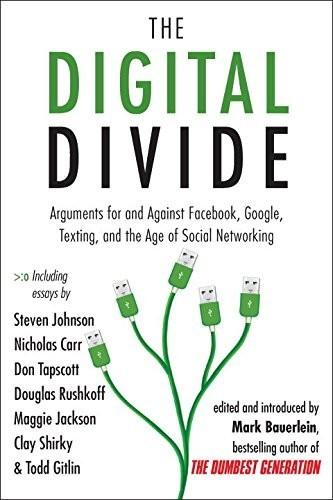
The Digital Divide: Arguments for and Against Facebook, Google, Texting, and the Age of Social Netwo Rking
by
Mark Bauerlein
Published 7 Sep 2011
Likewise, as headlines panicked investors about the failure of broadband, the massive communities built on IRC chat channels and other early live networking platforms were finding new, more advanced avenues for social and intellectual exchange. For-profit streaming media companies like Icebox may have failed, but the streaming technologies they used have survived and flourished as social tools such as iVisit and NetMeeting. And while the client lists of business-to-business service companies have shrunk, peer-to-peer networks, from Napster to Hotline, still grow in popularity and resist all efforts to quell the massive exchange of data, illegal or not. In fact, the average American home now has more information and broadcast resources than a major television network newsroom did in the ’70s. A single Apple laptop is a video production studio, allowing even for the complex editing of independent films.
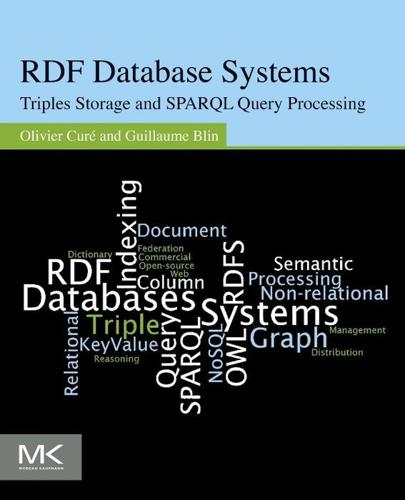
RDF Database Systems: Triples Storage and SPARQL Query Processing
by
Olivier Cure
and
Guillaume Blin
Published 10 Dec 2014
Nejdl, W., Wolf, B., Qu, C., Decker, S., Sintek, M., Naeve, A., Nilsson, M., Palmer, M., Risch, T., 2002. Edutella: a P2P networking infrastructure based on RDF. WWW, pp. 604–615. Nejdl, W., Wolpers, M., Siberski, W., Schmitz, C., Schlosser, M., Brunkhorst, I., Löser, A., 2003. Super- peer-based routing and clustering strategies for RDF-based peer-to-peer networks. In: Proceedings of the 12th International Conference on World Wide Web. ACM Press, New York, pp. 536–543. Neumann, T., Weikum, G., 2008. RDF-3X: a RISC-style engine for RDF. Proceedings of VLDB Endowment 1 (1), 647–659. Neumann, T., Weikum, G., 2009. Scalable join processing on very large RDF graphs.

A New History of the Future in 100 Objects: A Fiction
by
Adrian Hon
Published 5 Oct 2020
There was a group there helping calm things down, restoring order, distributing supplies, getting electricity back up. And you could see that they were all wearing these chunky earloops made for the emergency services—long-life, practically indestructible hardware, capable of setting up ad hoc long-distance peer-to-peer networks. They let people coordinate. These people weren’t experts. They were volunteers. It was inspiring. First in Banda Aceh and then across the world, people began to recognize the earloops and trust their wearers to do the right thing—intervening in riots, carrying the sick and wounded, guarding essential medical supplies.

Supremacy: AI, ChatGPT, and the Race That Will Change the World
by
Parmy Olson
Moments after Hassabis gave his talk, a man with short blond hair and a Nordic-sounding accent approached him. “Hi,” the man said as he approached Hassabis and held out his hand. “I’m Jaan. I’m the [cofounder] of Skype.” Originally from Estonia, Jaan Tallinn was a computer programmer who developed the peer-to-peer technology underpinning Kazaa, one of the first file-sharing services used to pirate music and movies in the early 2000s. He repurposed that technology for Skype and took a stake in the free calling service before getting a massive windfall when eBay bought Skype for $2.5 billion in 2005. Now he was sprinkling some of his winnings into other start-ups.

The Stack: On Software and Sovereignty
by
Benjamin H. Bratton
Published 19 Feb 2016
Whereas the nested hierarchies of postal addressing (e.g., name, building, street, city) refer to specific locations within a natural geography, such that the physical proximity or distance of one addressee versus another might be deduced from their addresses, Internet addressing follows no such geographic conventions, and peer-to-peer networking is all but agnostic as to the territorial origins and outcomes of packet flows. Instead, the accumulation of Internet addresses in certain areas, such as New York and Palo Alto, and the density of relations between those accumulations produce durable patterns of information communicated through the world.28 Globally our regular networks of bundled addressors and addresses wear grooves into information channels, sometimes aligning with geopolitical borders and interests and sometimes perforating them.
…
Manuel de la Pila housing block, 312 opinionlessness, state of, 240–241, 426n47 O’Reilly, Tim, 121 Oreskes, Naomi, 457n10 Organized Chaos, forces of, 445n37 Ouroboros energy grid, 92–96, 294–295 Outer Space Treaty, 456n7 “Outline of a Doctrine of French Policy” (Kojève), 109 “Overexposed City, The” (Virilio), 155 ownership competitive, 332 of data, 203, 285, 345–346 economics of, 282 owner-Users, 285–286, 345–346 Page, Larry, 134, 139, 281, 315 Page Mill Road, 57 “PageRank” (Franceschet), 332 PageRank algorithm, 134, 332 Pakistan-India border, 97, 309 Palace of the Soviets, 181 Palantir, 121, 287, 360, 459n20 Palestine, 120 Panopticon effect, 363 paper envelope, 46 parametricism, 160–161, 162–163 parastates, 446n39 Parker, Sean, 126 Parnet, Clare, 393n50 Parsons, Talcott, 385n25 partition in architecture, 391n30 Patriot Act, US, 120, 363 peer-to-peer networking, 206, 215 Peirce, Charles Sanders, 211, 223 Perec, Georges, 75 persona design, 254, 255 personality, 277–278 personal mapping technologies, 86, 236, 243, 431n70 personal mobility systems. See cars: driverless personal rapid transit (PRT) systems, 282 personhood, 173–175, 271, 439n65 persuasive interfaces, 224, 430n65 pervasive computing, 113, 172, 301–302 petroglyphs, 309 phone-car interface, 280 physicalization of abstraction, 29, 33 physical-to-virtual binary opposition, 19 Pinochet, Augusto, 59, 385n25 piracy, 380n15 pirate radio, 244–245 placebo interfaces, 224 placefulness, 16, 29, 155 place-making, 84, 149–150, 310 planetary computational economy, 92 planetary data infrastructure, 267 planetary photography, 150, 300, 354 planetary-scale computation architecture, 5, 197 assignment claimed by, 122 cartographic imperative of, 191 client-side versus server-side critique, 356–357 climactic impact of, 92–93, 96 design and, 192, 356 divides crossed, 27–28 ecological governance convergence, 98 economic geography, effect on, 199 elements of, 5 emergence of, 3, 13, 55 energy footprint, 82–83, 92–96, 106–107, 113, 140–141, 258–260, 303–304 forms taken, 4–5 future of, 351, 356 Google's occupation of, 34–40 governance and, 27 jurisdictions, 357 limits to growth, 93–94 at microlevel of the object, 191–192 neoliberalism and, 21 physical world, relation to, 358 political geography and, 6, 11 real project of, 404n11 space of, 34–40, 303 technologies’ alignment into, 4–5 urban design for, 160 Planetary Skin Institute, 88–90, 92, 97–98, 106, 180, 336, 392n42, 452n67 planetary supersurfaces, 188–189 planetary visualization, 452n69 Planet of the Apes, 182 planetology, comparative, 300–302, 333, 353, 360 plan of action, 43, 342 platform architecture, ideal, 49–50 platform-as-state, 7–8, 42, 48–50, 120–123, 140, 295, 315–316, 319, 327, 335, 341 platform-based robotics, 138–139 platform cities, 183–189 platform design, 44, 48, 51 platform economics network value, 159 platform surplus value, 48, 137, 159, 309, 374 User platform value, 309, 375–376 User surplus, 48 value versus price, indexing of, 336 platforms accidents of, 51 authority, 57 autonomy, 136, 282, 339 centralization versus decentralization, 48 characteristics of, 47–51, 214 City layer, designs for, 177 competition between, 50 component standardization, 47–48 control-decontrol paradox in, 46 decision-making, 44, 341–342 defined, 42, 328, 374, 383n4 diagrams ensnaring actors in, 44 economically sustainable, 48 etymology, 43 exchange value, 51 functions of, 19, 41, 119, 328, 342 future of, 117, 141–145, 244, 295, 315–316 genealogy of, 42 generic universality, 49 geography, 110–112 governing, 109, 119, 143 identity, 42 information mediated, 46 institutional forms, 44 introduction, 41–46 logic, 19, 44, 314 mechanics, 44–51 model-to-real correlation, 387n33 network effects, 48 neutrality, 44 origins, 46 overview of, 41–46 physicality and tactility of, 129–130 platform of platforms, 332–333 platform-within-a-platform principle, 284 plots in, 44 as remedy and poison, 5, 133 robotics, shift to, 362 service infrastructures, 116 as stacks, 7–8, 42–43 standardization, 44–46 theory, 41, 47 wars, 110, 123–125, 295 platform sovereignty activist stance on, 312 architectural surface interfaciality in, 166–167 City layer infrastructures role in, 151–153 constitutional violence of, 155 deciding exceptions in, 21 decision-making, 32–33, 44 defined, 374 derivation of, 37 design, 87–88 emergence of, 33, 152 grid programmability providing, 38 guarantees, 151 of nonhuman User, 273 overview of, 51 paradoxes of, 37 principle of, 36 productive accidents of, 37 reversibility, 22, 152–153 states, 339 urban envelopes, 159, 258 platform surplus value, 38, 48, 137, 159, 309, 374 platform totalities, 297 plot, 43–44 Plug-In City (Archigram), 179 pluralism, 302–303 polis, segmentation of, 241 political, the, 6, 30, 379n10 political agency, 173–175, 250, 258 political-geographic order, 26, 56 political identity of the User, 260, 347 political machine, stack as, 55–58 political philosophy, 20 political rights of the User, 285 political subjectivity, 21, 136, 152, 258, 260, 268 political technology, territory as, 335 political theology, 105, 236, 243, 297, 426n46 politico-theological geographies, 242, 248, 320–322 politics agonistic logics of, 180, 247 architectural, 166–167 interfacial, 244–246 of Internet of Things, 204 norms of, 39 Schmittian, spatial dimension of, 381n24 of ubiquitous computing, 203 “Politics of the Envelope, The” (Zaera-Polo), 166 Pontecorvo, Gillo, 244 poor doors, 311 pop futurist media, 432n71 Popper, Karl, 459n19 popular ecology movement, 86 Portzamparc, Christian de, 311 postage stamps, 194 postal identity, 193–196, 206 postal system, 132, 153–154, 195 post-Anthropocenic geopolitics, 285 post-Anthropocenic User, 264 Postel, John, 319 post-Fordism, 231 posthumanism, 275 post-human User, 285, 287–288 “Postscript on Societies of Control” (Deleuze), 157–158 Pourparlers (Deleuze), 147 Pouzin, Louis, 41 poverty ending, 303, 443n23 interiority/exteriority of, 311–312 politics of, 312, 444n30 of working poor, 331 power architecture symbolizing, 325 cultural legitimacy of exercise of, 424n41 of extralegal violence, 317 monopolizing, 308–309 shifts in, 233, 312–313 power-knowledge asymmetries, 454n75 power of brand, 128, 130 “Powers of Ten” (Eames and Eames), 52 power tools, 438n59 preagricultural societies, 149 presence, 205 Price, Cedric, 179, 201 Princeton Radio Project, 254 Prism, 9, 121, 320 privacy axiomatization of individual, 409n42 biopolitics of, 159, 360 cost of, 136, 285, 445n37 expectations of, 346 meta-metadata recursivity for, 287 right to, 270, 285 sacralization through encryption, 347 privacy markets, 285, 445n37 private human User, dissolution of, 289 private versus public space, 159 production labor.

Augmented: Life in the Smart Lane
by
Brett King
Published 5 May 2016
You may choose to store your key, or keys if you have multiple addresses, in a number of places including a paper printout, a metal coin, a hard drive or via an online service. Some have even tattooed their Bitcoin wallet address on their person. The banking system of 2025 will need to work more like an IP, or peer-to-peer, network than the current centralised banking networks that we have today; and the blockchain is a better, future-proof example of that. We are moving to a world where smart devices can have a value store or multiple value stores and can act as agents transacting on our behalf or on behalf of a group of people.

Is the Internet Changing the Way You Think?: The Net's Impact on Our Minds and Future
by
John Brockman
Published 18 Jan 2011
The Internet brought with it the exhilaration and abundance of a frontierless commons, along with the fractious and debilitating intensity of depersonalized disputes in electronic discussion lists. It demonstrated the possibilities of extraordinary feats of electronic generosity and altruism, with people sharing enormous quantities of information on peer-to-peer networks, and at the same time it provided early exposure to, and warnings about, the relentless narcissism of vanity blogging. It changed the ways in which the world became present to us and the ways in which we became present to the world, forever. The Internet expands the horizon of every utterance or expressive act to a potentially planetary level.

The Industries of the Future
by
Alec Ross
Published 2 Feb 2016
From the start, e-commerce has grappled with the question of trust—first in getting users to trust that online companies like Amazon would safely fulfill their credit card purchases, then in getting users to trust one another without ever meeting or talking to or seeing one another. When it comes to coded trust, eBay offered the first major breakthrough. eBay was created in 1995, shortly after the birth of the commercial Internet, to be an online marketplace based on trust. It is a peer-to-peer network where buyers and sellers engage in commerce directly, exchanging money for goods between themselves. eBay makes its money by taking a commission fee on each transaction, and each of those transactions will occur only if buyer and seller are confident of a good outcome. According to eBay founder Pierre Omidyar, people on eBay “learned how to trust a complete stranger. eBay’s business is based on enabling someone to do business with another person, and to do that, they first have to develop some measure of trust, either in the other person or the system.”
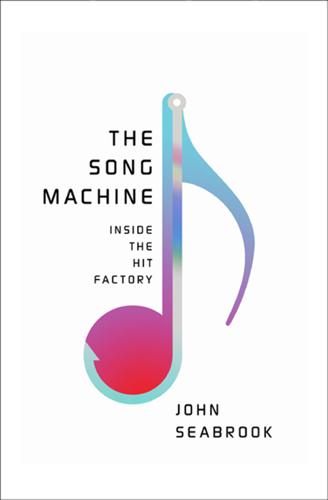
The Song Machine: Inside the Hit Factory
by
John Seabrook
Published 4 Oct 2015
He told his lead engineer, Ludvig Strigeus, a brilliant programmer he had worked with before, “I don’t accept anything that isn’t below two hundred milliseconds.” Strigeus responded, “It can’t be done. The Internet isn’t built like that.” “You have to figure it out,” Ek insisted. The solution involved designing a streaming protocol that worked faster than the standard one, as well as building their own peer-to-peer network, a decentralized architecture in which all the computers on it can communicate with one another. In four months, they had a working prototype. “And I knew when we had it that it was going to be very special,” Ek says. Ek’s original idea was to launch Spotify in the United States at the same time that he launched the service in Europe.
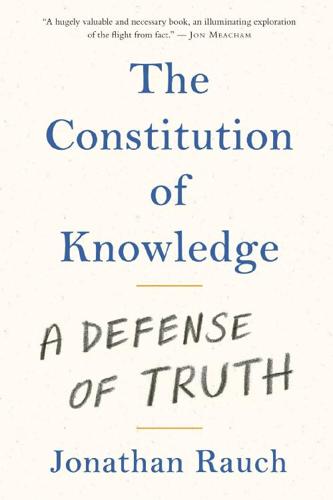
The Constitution of Knowledge: A Defense of Truth
by
Jonathan Rauch
Published 21 Jun 2021
Even truth-seeking individuals who cherish rigor and accuracy are likely to go unheard amid the din. The reality-based network’s institutional nodes—its filtering and pumping stations—are what give the system its positive epistemic valence. The techno-utopians of the information revolution assumed that knowledge would spontaneously emerge from unmediated interactions across a sprawling peer-to-peer network, with predictably disappointing results. Without the places where professionals like experts and editors and peer reviewers organize conversations and compare propositions and assess competence and provide accountability—everywhere from scientific journals to Wikipedia pages—there is no marketplace of ideas; there are only cults warring and splintering and individuals running around making noise.
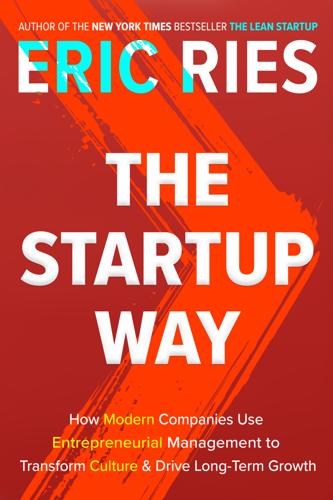
The Startup Way: Making Entrepreneurship a Fundamental Discipline of Every Enterprise
by
Eric Ries
Published 15 Mar 2017
To get there, they’ve assembled an amazing team of creative, technical, and business professionals from around the world. They love building products and creating experiences that benefit individuals, organizations, and society. Corporate Entrepreneur Community: corpentcom.com The Corporate Entrepreneur Community (CEC) is a peer-to-peer network of large enterprises sharing best practices and challenges to drive real entrepreneurial growth. The CEC facilitates the development of entrepreneurial skills through a vetted community of innovation leaders at distinguished organizations. APPENDIX 2: A CATALOG OF MVPs MVP METHODS at INTUIT For a downloadable PDF including examples for each MVP method, visit thestartupway.com/bonus.

Custodians of the Internet: Platforms, Content Moderation, and the Hidden Decisions That Shape Social Media
by
Tarleton Gillespie
Published 25 Jun 2018
The Digital Millennium Copyright Act, also passed in 1996, offered ISPs and search engines protection against liability for their users’ copyright infringement as well, but this safe harbor comes with some obligations, the most notable being that intermediaries must comply with “notice and takedown” requests from copyright owners who have identified their work as being circulated through their service. In court cases that followed, peer-to-peer networks and other online services found they did not enjoy the DMCA safe harbor when they had “materially” contributed to the circulation of pirated content, when they enjoyed some financial benefit from it, or even when they had “induced” it by promoting their service as designed for piracy. See Fifer and Carter, “A Tale of Two Safe Harbors.” 36This was before innovations such as digital fingerprinting and other forms of automated content identification, techniques that now make it possible for platforms and ISPs to “know” of illicit content on their service, even in real time. 37Bankston, Sohn, and McDiarmid, “Shielding the Messengers.” 38Horwitz, “The First Amendment Meets Some New Technologies.” 39Horwitz, The Irony of Regulatory Reform; Streeter, Selling the Air. 40Balkin, “Digital Speech and Democratic Culture,” 21. 41MacKinnon et al., “Fostering Freedom Online,” 40–42. 42Lobel, “The Law of the Platform.” 43Note: the 230 definition of “interactive computer service” includes “access software provider,” which does expand the definition a bit, and there have been cases where CDA was extended to include MySpace and others.

Filterworld: How Algorithms Flattened Culture
by
Kyle Chayka
Published 15 Jan 2024
In his 1983 book The Gift, Lewis Hyde defines artwork as something freely given by the artist through her creative act, no matter where it ends up: “a work of art contains the spirit of the artist’s gift.” But in a way, taste can be a gift, too. It costs nothing to introduce someone to a new piece of culture that you think they might like, and the act might benefit all parties involved. Culture, after all, is not a one-to-many broadcast system but a peer-to-peer network, like BitTorrent, where we collectively determine what means the most to us by intentionally sharing it. As Hyde wrote, “The spirit of a gift is kept alive by its constant donation.” I had a similar rabbit-hole experience with music. I inherited from my mother an appreciation for Dave Matthews Band, the pinnacle of shambolic nineties acoustic jam bands, that I can’t totally excuse but also can’t erase.

Coding Freedom: The Ethics and Aesthetics of Hacking
by
E. Gabriella Coleman
Published 25 Nov 2012
The politics of intellectual property law have over the past ten years reached a contentious point—a political debate that cannot fully or at least comfortably rely on abstractions, universal principles, or naturalized rationalities but instead must entertain more local, pragmatic stakes along with the reality of what people do, can do, or desire to do. Under threat, these principles may clamor for more attention. For example, in March 2005, on the eve of an important Supreme Court deliberation over the legality of peer-to-peer technologies, the New York Times ran an editorial stating its position on intellectual property law by way of arguments couched in a vocabulary of doom, liberal progress, and naturalization: “If their work is suddenly made ‘free,’ all of society is likely to suffer. [ … ] The founders wrote copyright protections into the Constitution because they believed that they were necessary for progress.”19 By invoking the country’s founders and tropes of progress, this message sought to reassert the naturalness of these propositions precisely when they were most under threat.
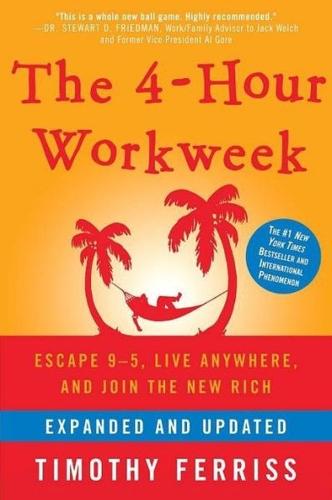
The 4-Hour Workweek: Escape 9-5, Live Anywhere, and Join the New Rich
by
Timothy Ferriss
Published 1 Jan 2007
Buzzing with a smile and his coffee mug in hand, he ambled over to his Mac to check on personal e-mail first. There were 32 messages and all brought good news. One of his friends and business partners, also a cofounder of Limewire, had an update: Last Bamboo, their start-up poised to reinvent peer-to-peer technology, was rounding the final corners of development. It could be their billion-dollar baby, but Doug was letting the engineers run wild first. Samson Projects, one of the hottest contemporary art galleries in Boston, had compliments for Doug’s latest work and requests for expanded involvement with new exhibits as their sound curator.
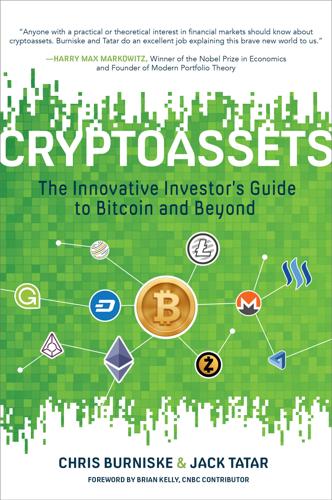
Cryptoassets: The Innovative Investor's Guide to Bitcoin and Beyond: The Innovative Investor's Guide to Bitcoin and Beyond
by
Chris Burniske
and
Jack Tatar
Published 19 Oct 2017
We suspect that as opposed to these reports remaining proprietary, as is currently the case with much of the research on equities and bonds, many of these reports will become open-source and widely accessible to all levels of investors in line with the ethos of cryptoassets. GET TO KNOW THE COMMUNITY AND THE DEVELOPERS After a valuation analysis is done, or at the very least current value is contemplated, the best thing the innovative investor can do is to know and understand the cryptoasset developers and surrounding community. As peer-to-peer technologies, all cryptoassets have social networks. Reddit, Twitter, and Slack groups are valuable information channels, though we hesitate to give more guidance than that as each community is different, and communication channels are always changing. Another extremely valuable and often underappreciated or unknown resource is Meetup.com groups.
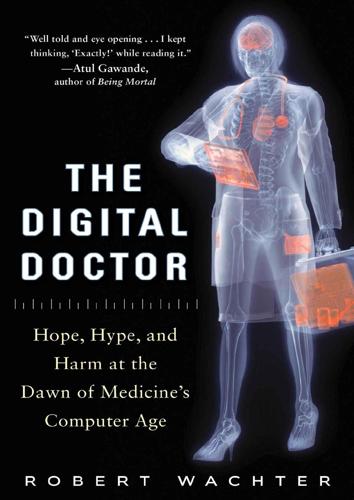
The Digital Doctor: Hope, Hype, and Harm at the Dawn of Medicine’s Computer Age
by
Robert Wachter
Published 7 Apr 2015
There will also be easy-to-use tools to allow patients to search for the best and least expensive hospitals and doctors—again, customized for their condition and preferences.41 The latter is important: for some patients, the surgeon’s technical skill trumps the fact that he lacks a winning personality; for others, bedside manner is more important than surgical dexterity. Just as one can refine a Yelp search by adding filters, patients will be able to filter results not just by proximity, quality, and cost, but also by personal preferences and values. Many patients will want to be educated and supported through peer-to-peer networks, and there will be many to choose from—no longer operating parallel to the traditional healthcare system, but now integrated into it. When a patient on such a network wants a peer to see part of his medical record, it will be easy to import the data from the EHR. The reverse will also be true: the patient who wants his doctor to see a portion of a peer-to-peer conversation will be able to move that into the EHR.

Exponential Organizations: Why New Organizations Are Ten Times Better, Faster, and Cheaper Than Yours (And What to Do About It)
by
Salim Ismail
and
Yuri van Geest
Published 17 Oct 2014
An NPS that is positive (i.e., higher than zero) is considered good, and an NPS of +50 is excellent. The NPS is largely based on a single, direct question: How likely is it that you would recommend our company/product/service to a friend or colleague? If you have a high NPS, then your sales function is free. If you are using peer-to-peer models, your service costs can also essentially be free. Using crowdsourcing and community ideation (such as Quirky or Gustin), your R&D and product development costs can also approach zero. And it doesn’t stop there. What we’re now seeing with ExOs—and this is tremendously important—is that the marginal cost of supply goes to zero.

Glasshouse
by
Charles Stross
Published 14 Jun 2006
Lauro had perfect manners but lost it when making love with us. Iambic-18 was a radical xenomorph, sometimes manifesting in more than one body at the same time when the fancy took it. Our children . . . Are all dead, and it is unquestionably my fault. The nature of Curious Yellow is that it propagates stealthily between A-gates, creating a peer-to-peer network that exchanges stegged instructions using people as data packets. If you have the misfortune to be infected, it installs its kernel in your netlink, and when you check into an A-gate for backup or transport—which proceeds through your netlink—CY is the first thing to hit the gate's memory buffer.
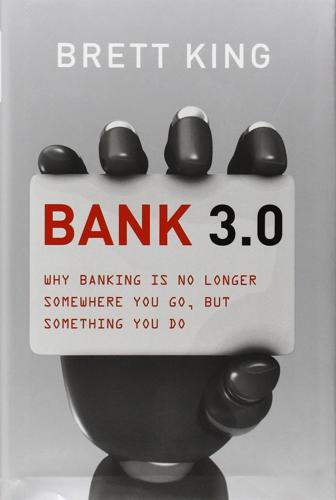
Bank 3.0: Why Banking Is No Longer Somewhere You Go but Something You Do
by
Brett King
Published 26 Dec 2012
Virtual economies are becoming increasingly important, says Wharton legal studies professor Dan Hunter, adding that they could redefine the concept of work, help test economic theories and contribute to the gross domestic product. “Increasingly, these virtual economies are leading to real money trades,” notes Hunter, one of a handful of academics closely following this trend. Bitcoin is an experimental new digital currency that enables instant payments to anyone, anywhere in the world. It uses peer-to-peer technology to operate, with no central authority, managing transactions and issuing money are carried out collectively by the network. Bitcoin is also the name of the open-source software that enables the use of this innovative virtual currency. Over the past few years, the peer-to-peer currency it has created has gained a surprising foothold in the global market.

Peers Inc: How People and Platforms Are Inventing the Collaborative Economy and Reinventing Capitalism
by
Robin Chase
Published 14 May 2015
Spotify and Pandora, however, advanced the business model yet again. Not only do I not need to buy a whole album when I only want one song, but since I can listen to any song I want at any time through a subscription service, I don’t feel the need to own music at all. Jeremiah Owyang, formerly an analyst at Forrester Research covering peer-to-peer models and how companies respond, is now founder of Crowd Companies, a brand council that offers research and strategic advice to companies seeking to become part of the collaborative economy. He has a simple four-phase circular path that explains the transition from the old industrial approach to the new one: Product → Service → Marketplace → Platform.
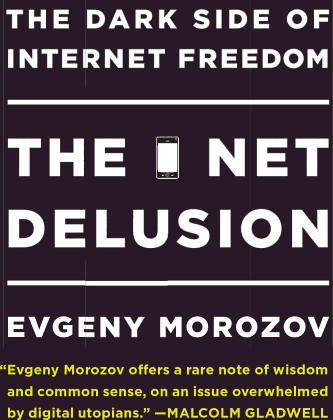
The Net Delusion: The Dark Side of Internet Freedom
by
Evgeny Morozov
Published 16 Nov 2010
Cut from hours of video footage that Georgian soldiers themselves had supposedly shot on their mobile phones—later confiscated by Russians—the film analyzed the war from a highly ideological position, portraying Georgians in the worst possible light imaginable. The film quickly became a viral sensation, with 2.5 million people watching it online. The success of the online campaign owes much to the zeal with which producers of the film embraced all forms of digital distribution, putting it on all important peer-to-peer networks and encouraging piracy. Putting the film on Russia.ru helped to make it visible. The film made a smooth transition to TV screen, too: On the first anniversary of the war, the film was shown on one of Russia’s national patriotic channels. And to ensure absolute media dominance, it was followed up by a book, which was well received by Russian bloggers and journalists.
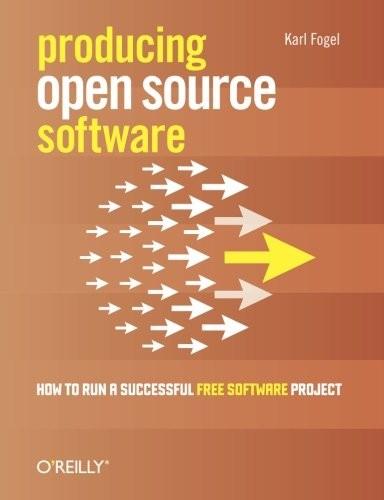
Producing Open Source Software: How to Run a Successful Free Software Project
by
Karl Fogel
Published 13 Oct 2005
As a project becomes more complex, an increasing proportion of the work becomes about managing people and information flow. There is no reason not to share that burden, and sharing it does not necessarily require a top-down hierarchy either. In fact, what happens in practice tends to be more of a peer-to-peer network topology than a military-style command structure. Sometimes management roles are formalized and sometimes they happen spontaneously. In the Subversion project, we have a patch manager, a translation manager, documentation managers, issue managers (albeit unofficial), and a release manager.
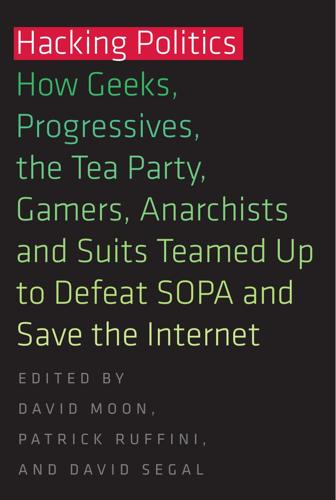
Hacking Politics: How Geeks, Progressives, the Tea Party, Gamers, Anarchists and Suits Teamed Up to Defeat SOPA and Save the Internet
by
David Moon
,
Patrick Ruffini
,
David Segal
,
Aaron Swartz
,
Lawrence Lessig
,
Cory Doctorow
,
Zoe Lofgren
,
Jamie Laurie
,
Ron Paul
,
Mike Masnick
,
Kim Dotcom
,
Tiffiniy Cheng
,
Alexis Ohanian
,
Nicole Powers
and
Josh Levy
Published 30 Apr 2013
Kickstarter, a crowd-funding network, launched only a few years ago, will provide more support for creators this year than the National Endowment for the Arts. In the UK, lawmakers are just as frustrated as we are that banks are still not lending to small businesses, but the irregulatory framework has allowed FundingCircle, a peer-to-peer network of lenders and borrowers, to flourish. Lawmakers have begun encouraging their constituents not just to “shop local” and “eat local.” They are asking them to “lend local,” creating a brand new source of working capital for small businesses and an emotional and financial return for lenders. There are many other examples of networks making a difference in civil society from mapping slums in Kenya, to getting at-risk kids in New York to take better care of their health, to empowering mothers in Boston to take on gang violence.

Surveillance Valley: The Rise of the Military-Digital Complex
by
Yasha Levine
Published 6 Feb 2018
It had about a $2 million annual budget, a half dozen full-time employees, and a small group of dedicated volunteer coders around the world who helped develop, test, and release its product: a free cloaking app that worked on the basis of a technique called “onion routing.” Users downloaded and launched a specialized Tor Internet browser that redirected their traffic onto a parallel volunteer peer-to-peer network, bouncing it around randomly before sending it off to its final destination. This trick disconnected the origin and destination of a person’s Internet browsing stream and theoretically made it impossible for cops, spies, hackers, or anyone else monitoring Internet traffic to observe where users were coming from and where they were going.
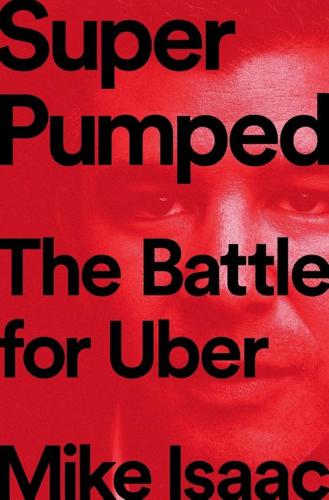
Super Pumped: The Battle for Uber
by
Mike Isaac
Published 2 Sep 2019
Almost immediately after Scour closed its doors, Kalanick started brainstorming with Michael Todd, one of his Scour co-founders. In relatively short order, the two of them dreamed up what Kalanick called his “revenge business,” a way to get back at the RIAA and MPAA, and the other companies who sued the partners and torpedoed Scour. That company was called Red Swoosh. “We basically took our expertise in peer-to-peer technology, took those thirty-three litigants, and turned them into customers,” Kalanick said. The new idea was similar to Scour: Red Swoosh would use connected “peer” computers in a network to transfer files between systems in a more efficient way. This time, however, those files weren’t going to be illegal downloads; the media companies were going to supply the files themselves.
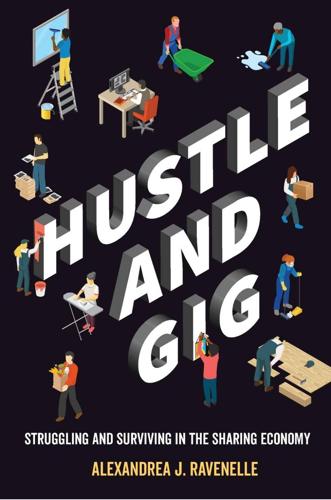
Hustle and Gig: Struggling and Surviving in the Sharing Economy
by
Alexandrea J. Ravenelle
Published 12 Mar 2019
That type of advance planning is challenging enough for people with steady white-collar employment. But for workers who find themselves in a variety of workplaces and dealing with different “bosses” daily, such planning is nearly impossible. For TaskRabbit workers, especially, this can be a problem. Under the peer-to-peer model, workers are often hired by individuals who may not fully understand what they’re asking them to do, or who may downplay the description to avoid scaring off a potential worker. Natasha, twenty-eight, tries to weed out work that she’s uncomfortable with, but sometimes clients aren’t forthcoming with details.
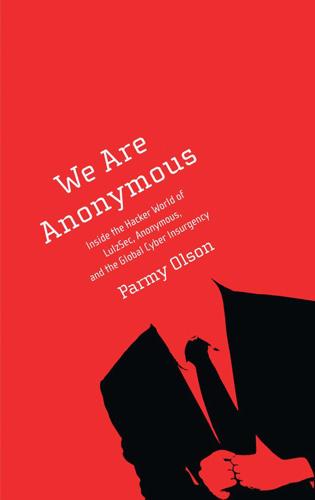
We Are Anonymous: Inside the Hacker World of LulzSec, Anonymous, and the Global Cyber Insurgency
by
Parmy Olson
Published 5 Jun 2012
Topiary started requesting donations for LulzSec and used Twitter and Pastebin to provide the thirty-one-digit number that acted as the group’s new Bitcoin address. Anyone could anonymously donate to their anonymous account if he converted money into the Bitcoin currency and made a transfer. Bitcoin was a digital currency that used peer-to-peer networking to make anonymous payments. It became increasingly popular around the same time LulzSec started hacking. By May, the currency’s value was up by a dollar from where it had been at the start of the year, to $8.70. A few days after soliciting donations, Topiary jokingly thanked a “mysterious benefactor who sent us 0.02 BitCoins.

Active Measures: The Secret History of Disinformation and Political Warfare
by
Thomas Rid
Another decade after that, Edward Snowden, the iconic intelligence leaker who likewise combined a belief in the power of encryption with far-out libertarian ideas, also appeared wrapped in the American flag on the cover of Wired. The movement’s breathless optimism expressed itself in slogans and themes: that information wanted to be free, sources open, anonymity protected, and personal secrets encrypted by default, yet government secrets could be exposed by whistle-blowers, preferably anonymously, on peer-to-peer networks. Much of this idealism was and is positive, and in many ways, activist projects have helped strengthen information security and internet freedom. And yet, at the fringes, this emerging subculture embraced a combination of radical transparency and radical anonymity, along with hacking-and-leaking, stealing-and-publishing—and thus created what had existed only temporarily before: the perfect cover for active measures, and not only thanks to the white noise of anonymous publication activity, from torrents to Twitter.

Hope Dies Last: Visionary People Across the World, Fighting to Find Us a Future
by
Alan Weisman
Published 21 Apr 2025
That destroyed our business model where people trade electricity among each other, because the price can’t compete with the subsidized grid.” At Stanford, he’d learned that entrepreneurs must be nimble when winds shift. One place Bangladesh had no interest in extending its grid was the camps housing a million Rohingya refugees they wished would go home. When UNHCR put out a tender for solar panels, SOLshare’s peer-to-peer network was the winner. It also seized the opportunity when the government finally passed net metering, meaning an industrial building’s rooftop solar panels can connect to the national grid via a meter similar to a SOLbox on auto mode. Suddenly, consumers with photovoltaic systems became prosumers, selling their excess sunshine.

From Counterculture to Cyberculture: Stewart Brand, the Whole Earth Network, and the Rise of Digital Utopianism
by
Fred Turner
Published 31 Aug 2006
More recently, analysts of digital utopianism have dated the communitarian rhetoric surrounding the introduction of the Internet to what they have imagined to be a single, authentically revolutionary social movement that was somehow crushed or co-opted by the forces of capitalism.75 By confusing the New Left with the counterculture, and the New Communalists with both, contemporary theorists of digital media have often gone so far as to echo the utopians of the 1990s and to reimagine its peer-to-peer technologies as the rebirth in hardware [ 34 ] Chapter 1 and software of a single, “free” culture that once stood outside the mainstream and can do so again.76 A closer look at the New Left and the New Communalists, however, reveals critical differences between the two movements and suggests that neither achieved a complete break with the society it aimed to change.

If Mayors Ruled the World: Dysfunctional Nations, Rising Cities
by
Benjamin R. Barber
Published 5 Nov 2013
See Inequality Plastic grocery bag ban, 149 Plasticity, 218 Police collaboration, 107–108 Polis, 3, 14, 164 Polling, deliberative, 257, 308, 350, 390n28 Pontiac, Michigan, emergency managers, 321 Pooled sovereignty, 156 Popular sovereignty, 155 Population: of cities, 35, 55, 361n3; of slums, 178–179, 183 Portland, Oregon, bike-share program, 137 Porto Alegre, Brazil, participatory budgeting in, 304–306, 395n6 Poverty, 19–20; amelioration of, 216–224; as fact of life, 180. See also Inequality Power: of nation-states, 9–11, 147; participation vs., 5 Pragmatism: of cities, 6, 13–14, 23–24, 215; of mayors, 90–92 Prahalad, C. K., 229 Prison population racial differences, 185 Privacy International, 258 Problem solving, 13, 70–71, 90 P2P (peer-to-peer) technology, 266 Public sector jobs, 199–201 Public spaces, 44–48, 71; and culture, 273, 274–280 Public transportation inequality, 195–197 “Push” technology, 253, 257 Race and inequality, 182, 185, 186 Rama, Edi, 86 Rape in India, 181, 201, 204, 382n69 “Rebel towns,” 324 Redlining, 198 Refugee camps, 16 Regional representation, 345–347 Representation, 342–348; challenges of, 342–344; of commuters, 345; and electoral district, 346; and failure of nationality, 156; and opt-in/opt-out rights, 346; on parliament of mayors, 346–347, 352–355; of regions, 345–347; as trusteeship, 347–348 Republican class in U.S., 34–35 413 RFID tags, 243 Rio Conventions, 134 Rio de Janeiro, inequalities in transportation, 195–196 Romney, Mitt, 218, 322 Rousseau, Jean-Jacques, 7, 32–34, 161, 283, 299 Ruble, Blair, 173 Rural life.
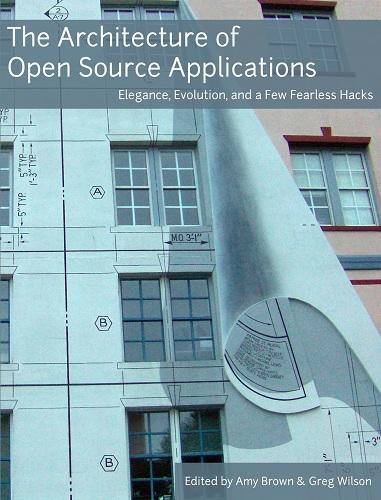
The Architecture of Open Source Applications
by
Amy Brown
and
Greg Wilson
Published 24 May 2011
Both of these used leased lines from the phone companies; in the US that speed was 56 Kbps. Probably the most successful network of the time, in terms of numbers of computers and people connected, was the UUCP network, which was unusual in that it had absolutely no central authority. It was, in some sense, the original peer-to-peer network, which ran over dialup phone lines: 9600 bps was about the fastest available for some time. The fastest network (at 3 Mbps) was based on the Ethernet from Xerox, which ran a protocol called XNS (Xerox Network Systems)—but it didn't work outside of a local installation. The environment of the time was rather different than what exists today.

Valley of Genius: The Uncensored History of Silicon Valley (As Told by the Hackers, Founders, and Freaks Who Made It Boom)
by
Adam Fisher
Published 9 Jul 2018
Steven Johnson: At the time, the web was fundamentally a literary metaphor: “pages”—and then these hypertext links between pages. There was no concept of the user; that was not part of the metaphor at all. Mark Pincus: I mark Napster as the beginning of the social web—people, not pages. For me that was the breakthrough moment, because I saw that the internet could be this completely distributed peer-to-peer network. We could disintermediate those big media companies and all be connected to each other. Steven Johnson: To me it really started with blogging in the early 2000s. You started to have these sites that were oriented around a single person’s point of view. It suddenly became possible to imagine, Oh, maybe there’s another element here that the web could also be organized around?
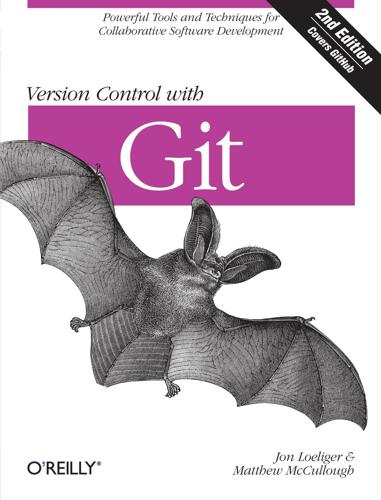
Version Control With Git: Powerful Tools and Techniques for Collaborative Software Development
by
Jon Loeliger
and
Matthew McCullough
Published 14 Aug 2012
Unlike CVS, SVN committed changes atomically and had significantly better support for branches. BitKeeper and Mercurial were radical departures from all the aforementioned solutions. Each eliminated the central repository; instead, the store was distributed, providing each developer with his own shareable copy. Git is derived from this peer-to-peer model. Finally, Mercurial and Monotone contrived a hash fingerprint to uniquely identify a file’s content. The name assigned to the file is a moniker and a convenient handle for the user and nothing more. Git features this notion as well. Internally, the Git identifier is based on the file’s contents, a concept known as a content-addressable file store.
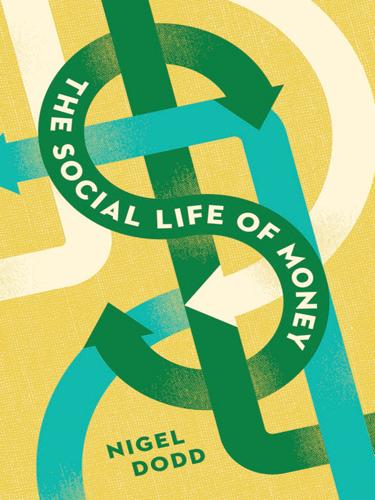
The Social Life of Money
by
Nigel Dodd
Published 14 May 2014
Such arguments place a different complexion on the question of monetary sovereignty, shifting attention away from the national state (money)–global market (finance) dichotomy favored by Strange and others, toward a set of richer and more nuanced questions about how money and finance map onto diffuse configurations of economic and political agents, as well as economic forms such as peer-to-peer networks. The multitude is not a social body: it cannot be sovereign (Hardt and Negri 2005: 330). It cannot be reduced to a unity, and it does not submit to a unity.30 If the age of Empire is the age of the multitude, this is because there is no unitary political subject, such as a party, people, or nation (Hardt and Negri 2005: 331).

Elon Musk
by
Walter Isaacson
Published 11 Sep 2023
So he had no desire to meet with Bankman-Fried. When Michael Grimes persisted by texting that Bankman-Fried “could do $5bn if everything vision lock,” Musk responded with a “dislike” button. “Blockchain Twitter isn’t possible, as the bandwidth and latency requirements cannot be supported by a peer to peer network.” He said he might at some point meet with Bankman-Fried, “so long as I don’t have to have a laborious blockchain debate.” Bankman-Fried then texted Musk directly to say he was “really excited about what you’ll do with TWTR.” He said he had $100 million of Twitter stock that he’d like to “roll,” meaning that his Twitter stock would be converted into a stake in the new company once Musk took it private.

Tools of Titans: The Tactics, Routines, and Habits of Billionaires, Icons, and World-Class Performers
by
Timothy Ferriss
Published 6 Dec 2016
This new technology permits creators to maintain relationships so that the customer can become a fan, and so that the creator keeps the total amount of payment, which reduces the number of fans needed. This new ability for the creator to retain the full price is revolutionary, but a second technological innovation amplifies that power further. A fundamental virtue of a peer-to-peer network (like the web) is that the most obscure node is only one click away from the most popular node. In other words, the most obscure, under-selling book, song, or idea is only one click away from the best-selling book, song, or idea. Early in the rise of the web, the large aggregators of content and products, such as eBay, Amazon, Netflix, etc., noticed that the total sales of *all* the lowest-selling obscure items would equal, or in some cases exceed, the sales of the few best-selling items.

The Rise of the Network Society
by
Manuel Castells
Published 31 Aug 1996
Oxford Dictionary of Current English Ozaki, Muneto p2p networks Packard, David Pahl, Ray Pain, Kathy Paris, El Paris, El/World Media Palo Alto Research Center, Xerox Panofsky, Erwin Paraguay parenthood Paris: Belleville; service center; Villejuif Park, Young-bum Parkinson, G. H. R. Parsons, Carol part-time work Patel, S. J. patriarchalism patrilineal/patrimonial logic Paugham, S. Payr, Sabine Pearl River Delta peer-to-peer networks: see p2p networks pension funds perestroika Perez, Carlotta Perlman, Janice Personal Computer personal services personalized devices Peru Peter the Great Peterson, Chris Petrella, Ricardo Pettersson, L. O. Pfeffer, Jeffrey pharmaceutical industry Philippe, J. Picciotto, Sol Piller, Charles Piore, Michael J.
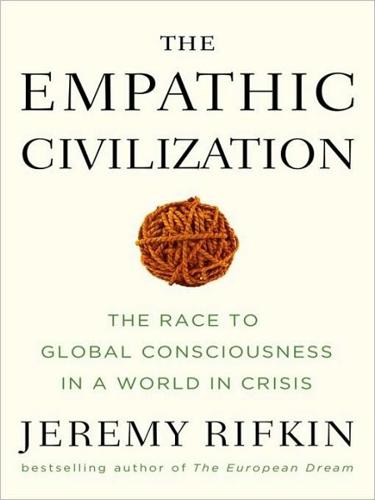
The Empathic Civilization: The Race to Global Consciousness in a World in Crisis
by
Jeremy Rifkin
Published 31 Dec 2009
Williams, in their book Wikinomics , make the point that the collaborative human potential, when connected by way of distributed-computing technology, takes the economy beyond business-as-usual operating assumptions into new territory based on “openness, peering, sharing, and acting globally.”21 Third Industrial Revolution peer-to-peer technologies give rise to “distributed capitalism” and, in the process, make many of the central assumptions of market capitalism outmoded and irrelevant. For example, consider Adam Smith’s firm belief that human nature predisposes each individual to pursue his own self- interest in the marketplace, against the interests of others.